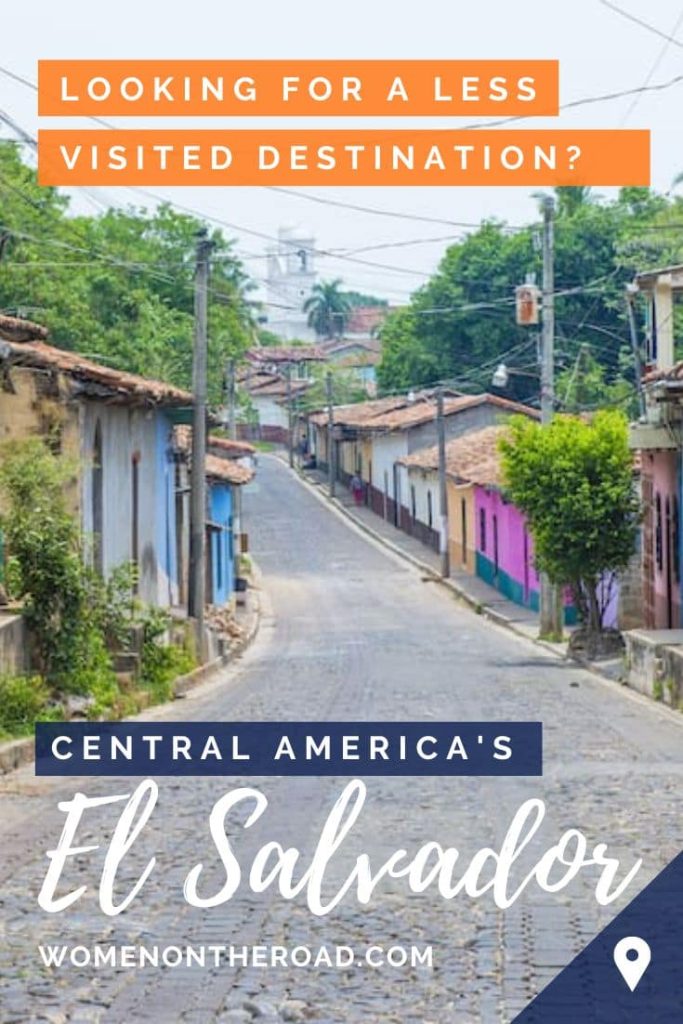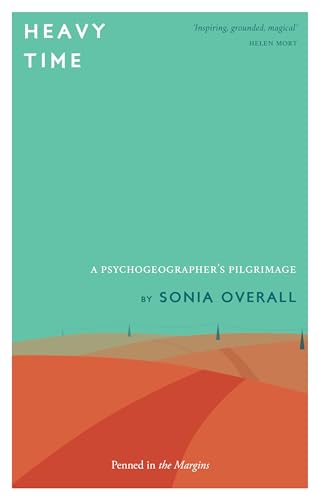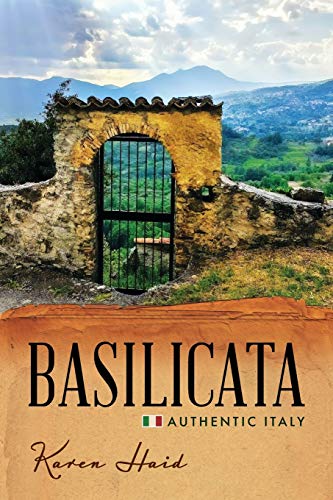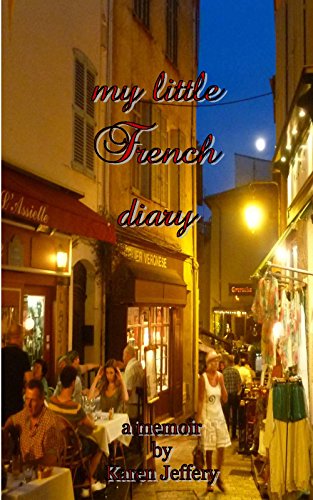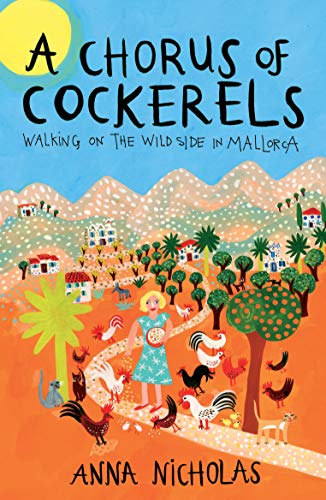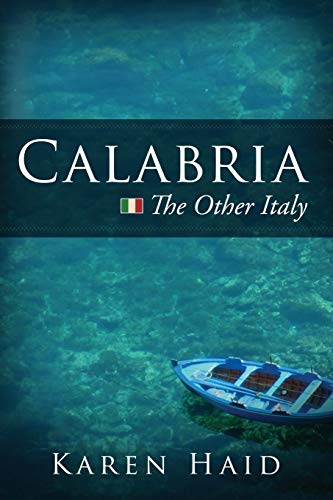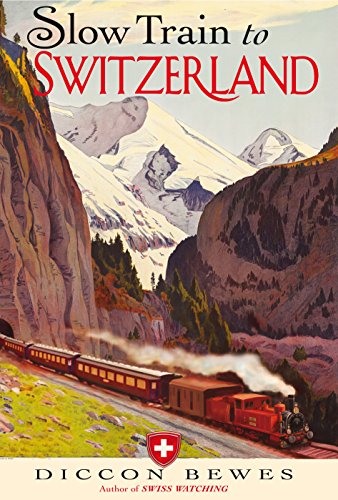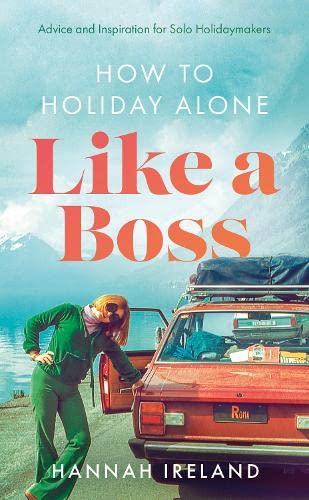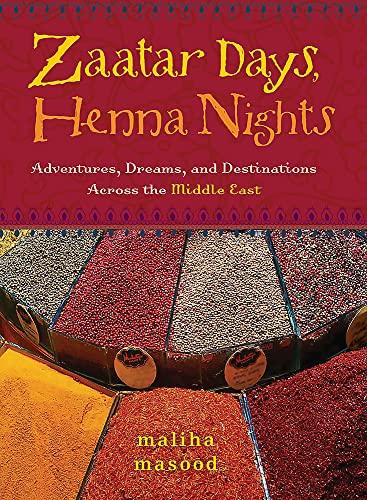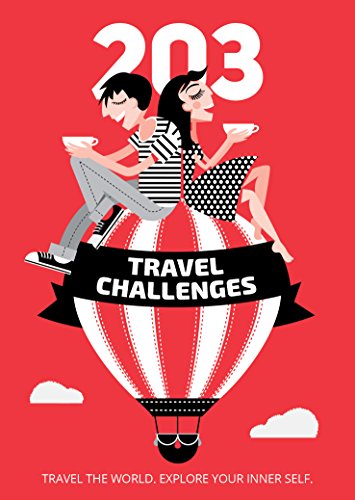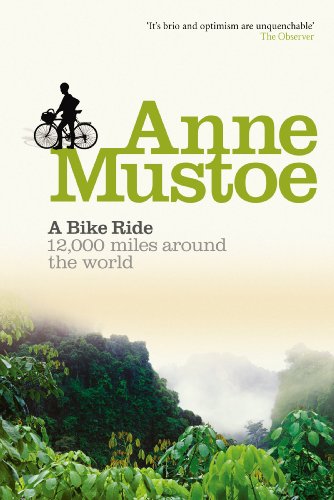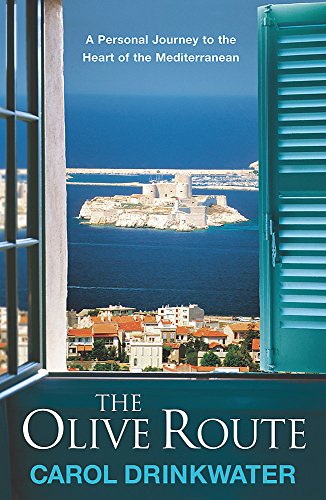The Ideal 2 Week South Korea Itinerary For Women over 50 29 Mar 10:23 AM (last month)
The perfect Korea itinerary for solo female travelers over 50
Imagine someone giving up their subway seat so two friends can sit together. Or leaving your room unlocked or your luggage out of sight on a train – without worrying it might disappear. Or a bus driver bowing before driving off – and he might even be wearing white gloves.
You’d be in South Korea, of course!
I took a two-week solo trip to Korea and discovered a land of near-unbelievable contrasts. What follows are the highlights of my Korea itinerary. This is a perfectly do-able trip to take on your own if you’ve traveled a bit abroad, but if not, there are plenty of day tours (and longer tours) you can take – I’ll deal with those later as well.
2 week South Korea itinerary
This itinerary covers my two weeks in South Korea travel itinerary. It was a solo trip, for which I made all my own arrangements.
I found two weeks was the perfect trip length for my type of travel − I like to take my time at each destination rather than see more places but less in depth. You can visit Seoul in a couple of days and manage a couple of other cities in a week, if you must. But I would suggest a minimum of 10 days in South Korea if you want to see a bit of the country.
Seoul: Days 1-6
Day 1: Myeongdong and Namsan Tower
- Morning: Arrive in Myeongdong for shopping and street food
- Evening: Take a cable car to Namsan Seoul Tower for panoramic city views
Day 2: The House of Sharing and DMZ Tour
- Morning: Visit The House of Sharing, a museum and home for “comfort women”
- Afternoon: Embark on a DMZ tour to explore the world’s most dangerous border
Day 3: Noryangjin Fish Market and Itaewon
- Morning: Visit Noryangjin Fish Market for fresh seafood
- Afternoon: Explore Itaewon, an international district with diverse cuisines
Day 4: Korea Food Tours and Bukchon Hanok Village
- Morning: Join a food tour for a culinary adventure
- Afternoon: Wander through Bukchon Hanok Village’s traditional Korean houses
Day 5: Euljiro Walking Tour
- All Day: Take a walking tour of Euljiro to learn about Korea’s rapid industrialization
Day 6: Gyeongbokgung Palace and Gwangjang Market
- Morning: Visit Gyeongbokgung Palace, the main palace of the Joseon dynasty
- Evening: Explore Gwangjang Market for Korean blood sausage and other local delicacies
Beyond Seoul: Days 7-14
Day 7-8: Busan
- Day 7: Travel to Busan via bullet train; visit Haeundae Beach, and go to Shinsegae Centum City (relax in Spa Land)
- Day 8: Explore Jagalchi Fish Market, and visit some of Busan’s temples
Day 9-11: Gyeongju
- Day 9: Arrive in Gyeongju; visit Bulguksa Temple
- Day 10: Explore the city’s tumuli and historical sites
- Day 11: Visit Anapji Pond at dusk for cherry blossom views
Day 12-14: Jeonju
- Day 12: Arrive in Jeonju; explore its traditional hanok village
- Day 13: Sample local cuisine, from dumplings to noodle soups
- Day 14: Return to Seoul
I chose to go to Busan because I was hunting for cherry blossoms. But if you’re pressed for time, you could travel to Jeju Island instead of Busan.
Getting to Seoul
My first brush with the modern miracle that is today’s Korea was at Incheon International Airport. Huge lines advance smoothly, everyone stepping up in an orderly fashion. When I visited, you could fit your soles onto the footprints thoughtfully painted on the floor for you (in case you might be tempted to jump the queue into the arms of the border police). I don’t know if the footprints are still there…
You can get your ticket for the Arex Incheon Express to Seoul Station here. You’ll receive a voucher, which you’ll have to redeem at the Express Train Ticket Vending Machine at the airport.
Best Places to visit in Seoul: A 6-day Seoul solo travel itinerary
And now, Seoul. Physically, the city sits in a bowl surrounded by eight mountains and bisected by the Han River. Most walking takes place on hills and my apartment in Seoul required me to walk up a steep hill, climb 50 or so steps, walk up a smaller hill and gasp my way through another three flights of stairs. Calf muscle issues? Visit Seoul. You’ll be Wonder Woman in no time.
Seoul solo female travel is, most of all, a seemingly inexhaustive source of fun and inspiration. I roamed, hopping on and off buses, exploring distant subway stations and discovering neighborhoods. I also took some half-day or day tours to maximize my time.
If you need a more specific Seoul itinerary, and are looking for the best things to do alone in Seoul, here are just a few of the things to do in Seoul on your own (this list is anything but exhaustive):
- Myeongdong Market (located in the Myeongdong shopping district) is my idea of the perfect street market, clothes and shops in daytime and foodie fair as soon as the sun begins to set. Any solo travel Seoul itinerary worth its salt should include a visit to this lively place. The market is known for its cosmetics shops (Korean cosmetics have a worldwide reputation and draw local and foreign shoppers.)
- Namsan Seoul Tower, also known as the N Seoul Tower, is the highest point in the city and is best visited at night, after a quick cable car ride. The mountain it caps has been ringed with hiking trails and during the day, the hike is well worth it. Partway up is a wonderful traditional restaurant which serves magnificent scallion and squid pancakes.
- The House of Sharing is part-museum and part-retirement home for “comfort women”, kidnapped or forced by the Japanese into military brothels during World War II. Now elderly, the handful who remain keep the memory of their tragedy alive, waiting for a proper apology from Japan.
- A DMZ tour, or the Korean demilitarized zone, is the one adventure I hugely regret not having experienced. The DMZ splits Korea into North and South and has been called the world’s most dangerous border. I had reserved well ahead of time, but it was at the height of the war of words between Washington and Pyongyang, so the military administration cancelled all visits at the last minute that day. I was refunded, but hugely disappointed.
- Noryangjin Fish Market is one of Seoul’s signature sights, with fish so fresh it is still – alive. Go around lunchtime or you’ll be in the same boat I was: eyeing raw fish for breakfast. I normally love it but even I couldn’t face it pre-coffee… If you’re an early riser (3 a.m.!) you’ll catch the famous fish auctions. Just wear good walking shoes because the floors are wet and slippery.
- Itaewon is an expat enclave so international you feel you’re crossing a border each time you cross a street. There are many things to do in Itaewon. Its Muslim Quarter’s halal eateries and pilgrimage tour agencies “approved by the Kingdom of Saudi Arabia” give it a powerful oriental atmosphere but down the hill, other familiar smells fight for attention – pizza, burgers and fried chicken.
- Korea Food Tours is a small company with several tours – I ate an extraordinary BBQ (and a few other delicious things). Highly recommended if you don’t know where to eat on your solo trip to South Korea. Find even more food-related tours!
- And finally, here’s a one-week Seoul itinerary as an alternative.
BUKCHON: A HIDDEN VILLAGE FOR YOUR SEOUL ITINERARY
by Rebecca Binge
One of the unique things to do in Seoul, and one of the most enlightening things to do in Korea alone, is tucked away in the Samcheong-dong neighborhood: Bukchon Hanok Village (hanoks are Korean traditional-style houses). The village dates back more than 600 years when high-ranking officials of the Joseon Dynasty settled here.
Hanok architecture consists of smoky gray tiled roofs, slightly curving upward at the outer corners. Many of the homes are painted a bright white, decorated by wooden beams or layers of brick along with the bottom halves.
Bukchon is located uphill so the legs definitely get a workout, but one that’s much better than the gym. There are numerous alleyways to get lost in. (Besides, the added bonus of getting lost on your solo trip to Seoul is that one usually stumbles upon a good photo opportunity!)
Bukchon Hanok Village can easily be found by taking subway line 3 and getting off at Anguk Station. Look for exit 2 as you make your way out of the station. When you reach the top of the stairs walks straight for several minutes. There are also signs that will direct you towards the village.
In a metropolis filled with neon lights, lofty office buildings, and haggard workers, wandering through an area like Bukchon reminds me of simpler days in Korea’s past.
How to get around Seoul
Seoul travel is straightforward. The easiest way to get around on your Seoul travel itinerary is a Discover Seoul Pass which gives you access to some 35 museums and historical sites completely free (and a discount for more), relaxation and entertainment facilities, free passes for various transportation options, and even shopping discounts. You’ll definitely save money on individual sights. Given the distance between some of the sights, you’d need at least two days to see them.
A rechargeable T-money card, which you can purchase at any convenience store or station, whisks you into subways and buses. Stops are (usually) announced in English and, bless them, subway stations have toilets, cleaner than those of most Western department stores.
The transport networks are extensive and rarely will you be beyond public transit’s reach. Just be forewarned: you’ll be doing a lot of walking. Seoul is built on hills and while there are plenty of subway and bus stops, you may still be blocks away. Traveling to Seoul alone, I walked an average of 12km a day, without trying.
The city offers some free walking tours – and they were brilliant. Volunteer guides really know their stuff, and often, because of their language capabilities, they may present your only opportunity for in-depth conversation with Koreans.
Like most cities these days, a hop-on hop-off bus will take you to most places to visit in Seoul. I took the tour but wasn’t particularly impressed. Traffic doesn’t always make it easy to get around, the commentary isn’t particularly informative. If you’re only in Seoul for a day or two, it might be worthwhile for a quick overview. Otherwise, get a guidebook and a T-money card for the bus and subway.
Beyond Seoul: fabulous places to visit in South Korea
Planning a solo travel Korea itinerary can be a challenge for those of us not familiar with Asian languages. Korean names can sound remarkably similar and were it not for a common English spelling of place names, I would probably have ended up on the wrong train often.
In addition to six days in Seoul, my 2 week South Korea itinerary took me to three cities in eight days, as I prefer to see fewer places but see them in greater depth.
One thing I kept noticing from the train is the mountainous nature of the country and the resulting population density in the lowlands. Korea is crowded!
Solo travel Korea: Train to Busan
“Train to Busan” may be the title of a popular Korean horror movie, but there’s nothing horrific about using the railway in South Korea, on the contrary. If you want to avoid the train station ticket buying hassle, get your train pass before you go.
Heading south from Seoul on the bullet train to the coastal city of Busan, highrises appeared to leap out of the fog, there one minute, gone the next. The train ride, by the way, is far smoother than those of its European counterparts. It’s also better protected, with safety barriers along the route: worse view, but better security.
Busan is South Korea’s second-largest city, stunning in its beachside setting (don’t miss Haeundae Beach if you go there in the summer) and the subject of glorious photographs. I was there in the rain, which in no way altered my enjoyment. I just visited it differently: I walked in the rain (and searched in vain for cherry blossoms).
I visited the world’s largest department store, Shinsegae Centum City, and spent the afternoon lazing in Spa Land: 22 spring-fed pools of different temperatures and 13 types of sauna, ideal for Busan in the rain. I sampled them all – naked, as one does in Korea (but beware – the sign says no tattoos allowed!)
A short but sweet Gyeongju itinerary
Next stop, the historical city of Gyeongju, nominated a couple of years ago by Lonely Planet as one of the top 10 cities in the world to visit. It is also known as the “museum without walls” and famous for its unusual tumuli, or tombs shaped like grass mounds. These are disconcertingly spread throughout town, with streets winding around them.
I enjoy temples and spent time at the fabulous Bulguksa, climbing its many stairs.
One evening I walked to nearby Anapji Pond. I’d heard it was ‘pretty’ but nothing prepared me for the slow settling of dusk mirrored against the bright pink of the spring cherry blossoms – yes, bountiful blossoms at last (cherry blossom season in late March/early April is the best time to visit South Korea!) Clearly, this was a famous sight, as romantic couples and entire families jostled one another for selfies against the flickering lights. (Here’s a three-day Gyeongju itinerary if you’d like to spend more time.)
Food for the soul in Jeonju
My third and final stop was the city of Jeonju, a UNESCO gastronomic city so of course, I spent several days there, ‘researching’.
Its centerpiece is a traditional hanok village but unlike Bukchon, where people still live, Jeonju’s have become guest houses and restaurants. I enjoyed staying in one – the room was smaller than my closet at home and I slept on a mat on the heated floor. Falling asleep was wretchedly painful (I found beds generally uncomfortable everywhere) BUT I woke up more refreshed than ever after the mat episodes. I have no idea what magic occurs down on that floor, but it works.
Jeonju’s food kept its promises except for a single plate of overly doughy fried squid. As for the rest, I leapt from dumpling to dumpling, noodle soup to noodle soup, and skewer to skewer. Time flew.
ALSO TRY IN KOREA
- Korean BBQ – you’ll find it all over the country
- Gyeongju bread, only available in Gyeongju – a pastry with bean paste inside
- Sundae, Korean blood sausage. You’ll find the best in Gwangjang market in Seoul.

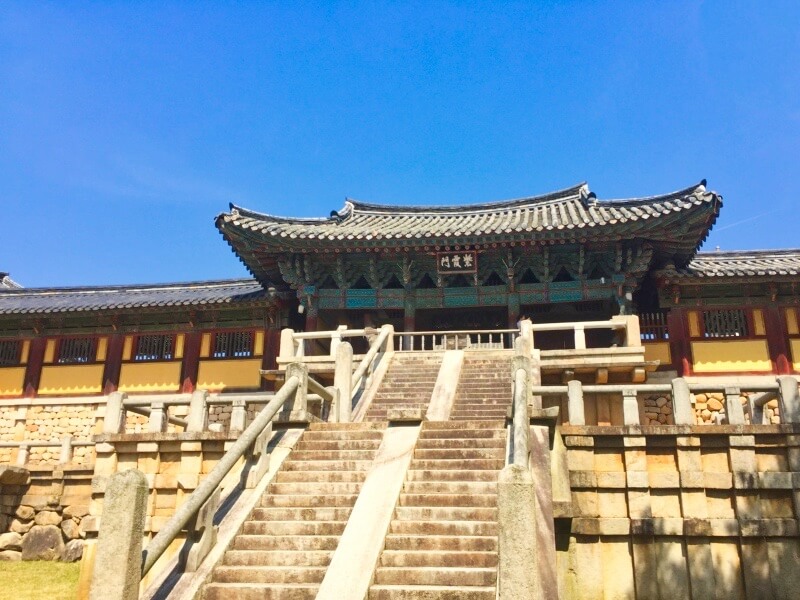
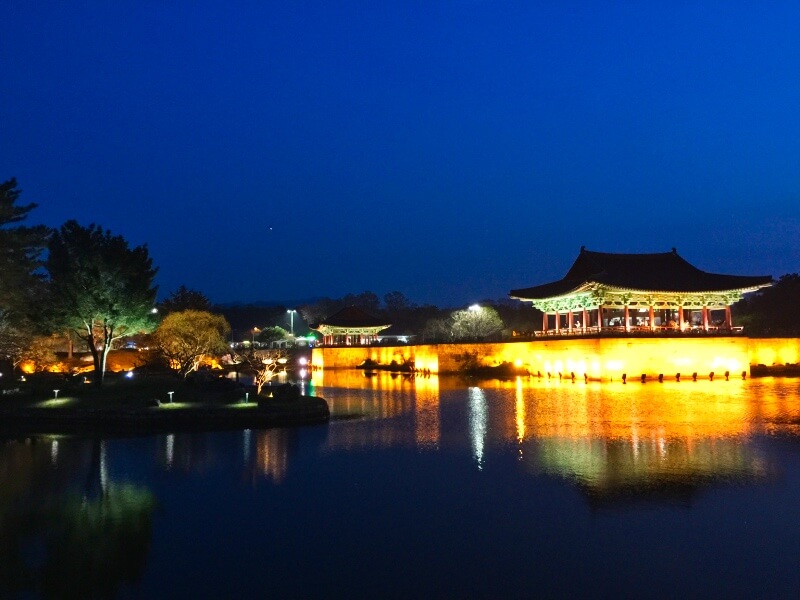

Street foods to eat during your South Korea trip (Must-try in Seoul)
There’s such variety in the street food that after two weeks of solo travel in Korea, I still hadn’t tested everything (though I did try!) Koreans do plenty of socializing around food, much as Europeans would meet for a cup of coffee, so it’s no surprising there are so many eateries of every kind.
Walking the streets of Myeongdong Market was an education in Korean street food.



Koreans love sugar, which manages to find its way into everything, including unusual dishes like pasta or egg salad. Allegedly, the sugary kick enhances the savory and umami flavors of other ingredients, so a pinch of sugar is added to meat roasts, sandwiches, stir-fries, hot pots, and the alike.
Most noticeably, Koreans love spicy food. From supermarket cup noodles to kimchi, their traditional fermented veggie dish, hot food is everywhere you look. Koreans do pride themselves on having the spiciest food, but Indian food beats Korean when it comes to calling the fire engine!
Cheese, too, is hugely popular and goes on everything…

Much as I love street food, I also enjoyed sit-down meals. One of my favorites was bulgogi, a pork hot plate with hot spice and vegetables – and a bit of sweetness. Seafood is plentiful, as you’d expect in a country bordered on three sides by water. Gwangjang Market in Seoul is known for its silk goods and vintage clothes during the day, but in the evening it turns into a seafood city, with raucous communal tables filled with laughter and conviviality.
I was relieved to discover coffee is a local addiction with a coffee shops on every street corner. I was less relieved to get the bill: between $4-$11 for a cappuccino, depending on whether I was desperate for that extra espresso shot or not.


South Korea – Risen from ashes
Built on the rubble that was once Seoul, the capital is now a world-class metropolis. Much of South Korea’s success today – Samsung, Hyundai, LG, Daewoo – dates to the aftermath of the Korean War, which killed millions and destroyed the country’s infrastructure, leaving it one of the world’s poorest countries.
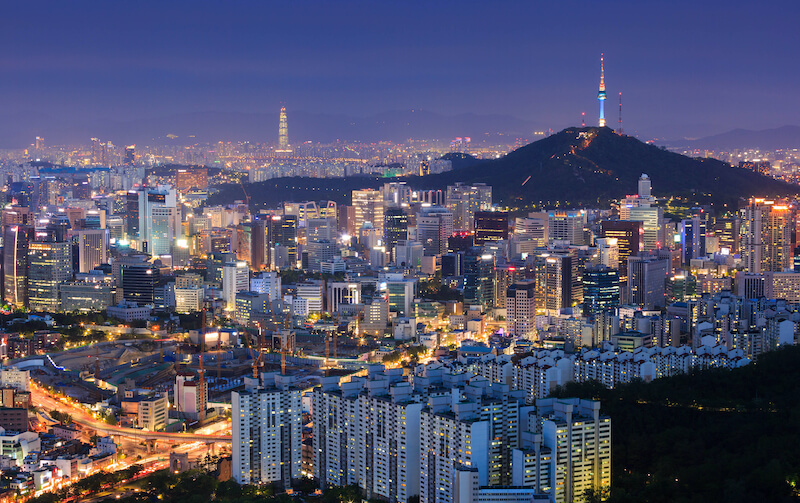
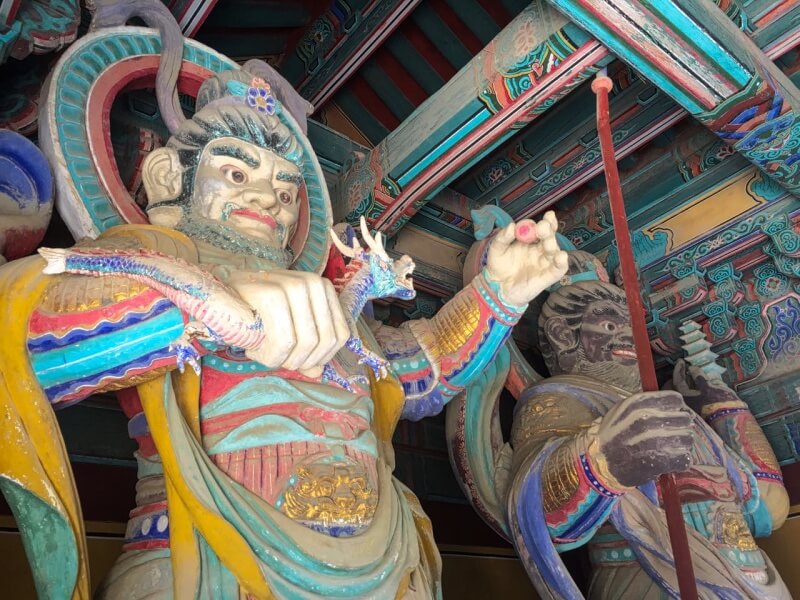
It’s hard to conceive of Seoul as a flattened city, from which 90% of the population fled and whose remaining 10% often scavenged for food.
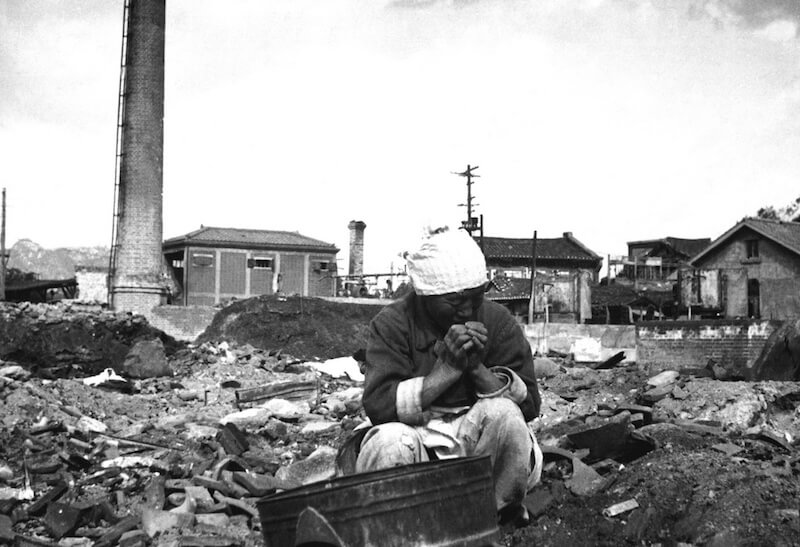

The country is changing rapidly but is intertwined with its traditions. Women, for example, have more rights than they could have imagined a generation ago yet respect for families, especially older male relatives, still governs many interactions. While traditions are strong, Korea is more modern every day – its connectivity and recycling policies could put most countries to shame.
Yet the one constant that permeates Korean life is history. Old people still talk with anger about the Japanese occupation a century ago, yet few pay much attention to the nasty words bandied about between North Korea and the US, even though Seoul is right in the line of fire.
They’ve heard it all before.
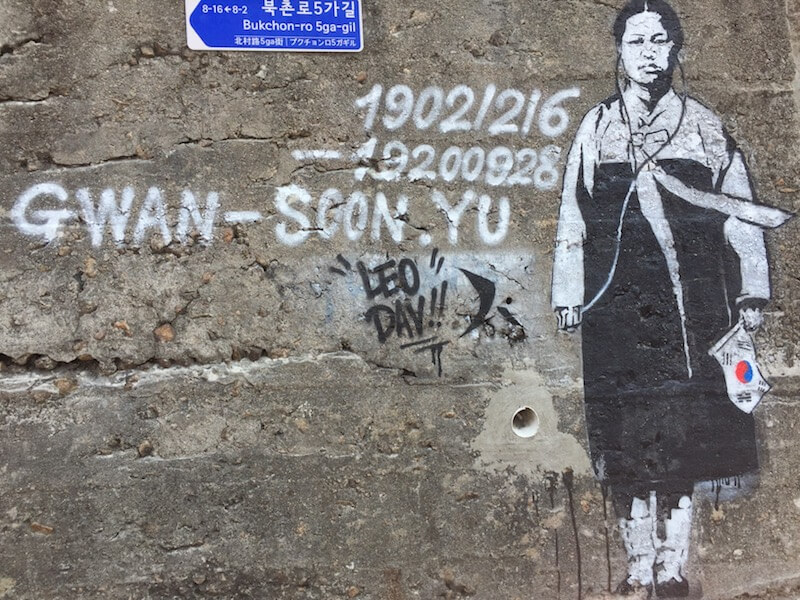
Facts about South Korea culture and traditions
Understanding any aspect of Korean culture was sadly a superficial exercise: I don’t speak the language, and I had no local Korean friends to put things into context for me. Still, there was plenty to observe and some obvious traits that required little translation or explanation:
- I found Koreans to be considerate, always thinking of others. All I had to do was stand around with a map looking a little lost and someone would inevitably stop to help. People gave me their seats on public transport, possibly because they sensed I was older, and they appeared to be constantly scanning the crowd to understand everyone’s place in it. It’s as though people want to take care of you and make sure nothing goes wrong. At a table, it’s not unusual for a neighbor to lean over and offer you a piece of food or a glass of rice wine.
- Koreans’ traditional Confucian respect for older people (see above) manifested itself in many ways. The most striking was during a demonstration, when an older man began yelling at an armed policeman who strode over firmly, making me cringe. I expected at least a truncheon but no: the younger officer gently took the man by the arm, smiled at him and began talking in a soothing voice. He slowly directed him away from the crowd, calmed him down, and eventually steered him towards a metro station entrance. I was amazed and elated at this absence of force.
- Koreans give a strong impression of being perfectionists and that may prevent them from admitting they speak English unless they speak it perfectly. Over and over I met people who claimed not to speak it or very little – yet they were nearly fluent. A bit shy about their language abilities, when approached in English their initial reaction appeared abrupt yet once we established contact, words flowed.
- If there’s one cultural quirk that really turned my head was the addiction to anything ‘cute’. Dogs were dressed in frills, large stuffed toys sat on the serious bank or legal desks, couples wore matching shoes or T-shirts, and pink was greatly in favor, all part of an extremely lucrative ‘Kidult’ culture. However, I’m told by Korean friends that styles have simplified in recent years, with a preference for more muted colors and less bling…

- A disconcerting trait is the emphasis on physical beauty – and not just women. There is plenty of mirror-checking and iPhone camera gazing (with the camera turned around to face you, of course). It’s no surprise Seoul is the world’s plastic surgery capital, and as many as half of women in their twenties having had something done to their faces. This phenomenon might explain why there are so many face masks around – for health and pollution, certainly, but convenient for hiding those telltale bruises. About 15% of surgery patients are men, who also make up a large proportion of those who buy beauty products.
- It’s also apparently acceptable – or at least tolerated – for men to visit high-end ‘hostesses’. A hotel parking lot near my room in Seoul was filled with expensive cars at lunchtime. More telling, their spa was closed to female guests, who visited another one next door…
- I noticed students rushing to class at all hours, from dawn until well past what should have been their bedtime. Emphasis on education is immense and parents will do almost anything to make sure their offspring get into the right schools, which lead to the right jobs and spouses. The poverty of the past is very much present in people’s minds and getting ahead is the answer to leaving all that behind. Some believe the country’s suicide rate – one of the world’s highest – may be due to this pressure to excel intellectually and socially, and to physically conform to norms of beauty.
- If you go on your Korea trip with your partner or spouse, keep away from excessive physical affection in public. Hugging and kissing in the streets or transport is generally considered rude. Paradoxically, you may notice more hand-holding and physical affection (what Koreans call “skinship”) among same-sex friends, especially men, than you would in the West.
6 THINGS TO KNOW WHILE TRAVELING IN SOUTH KOREA
by Rebecca Binge
1. Mirror, Mirror on the Wall
The outer appearance is a high priority to Koreans. According to the International Society of Aesthetic Plastic Surgery, South Korea is the country with the world’s highest per capita rate of cosmetic plastic surgery. In fact, it’s become common for parents to offer plastic surgery to their daughters as a graduation gift. As a result, mirrors are abundant: near restaurant entrances, inside elevators, and on the phone in the subway.
2. Shoppers’ Paradise in Seoul
For those in need of some retail therapy, Seoul is the shopping mecca in South Korea. Various neighborhoods offer a wide range of items to those in search of the perfect Korean memorabilia. For a truly unique shopping experience, Namdaemun Market is the perfect shopping adventure. Stalls and stores sell practically everything: clothing, jewelry, home furnishings, toys….the list is endless!
3. Apartment Eyesore
In both cities and suburbs, you will notice clusters of high-rise apartment complexes dating from the Korean War. Most are unsightly, about 20 stories high, usually off-white, with tan or grey added for a splash of color. Still, they have become popular with families because of all the nearby conveniences, like shops or schools.
4. The Spirit of Soju
The national alcoholic beverage that accompanies any Korean barbecue is soju, traditionally made from rice. It also can play a bonding role in forming a business and social relationships. Also, Korean drinking etiquette consists of pouring drinks for others (particularly seniors at the table) before refilling your own cup. Remembering this polite gesture makes for an enjoyable dining atmosphere for all.
5. Bathroom Basics
Even though there are Western-style toilets, in many public restrooms you will stumble upon the squat toilet. Upon squatting, make sure the tips of your shoes line up with the front of the porcelain. Also, it helps to have a good balance when using one! In older buildings, you will find the toilet paper dispenser located just outside of the restroom entrance. Grab enough before entering a stall.
6. Perplexing Politeness
Be prepared for a bewildering mix of both polite and pushy behavior among Koreans. When browsing in a department store, be prepared for the numerous sales assistants. However, if you’re boarding a subway or a bus watch out for the ajummas, or older Korean women, known for being pushy when trying to grab a seat on subways or buses.
South Korea travel tips
How safe is a trip to South Korea in 2025?
Other than the unpredictability of relations with North Korea, this easily qualifies as one of the safest destinations for women – anywhere. South Korea solo female travel is not to be feared but on the contrary, to be embraced.
Despite the country’s low crime rate and the absence of major incidents recently, it is difficult to forget that South Korea’s (until now) sworn enemy, North Korea, lies armed to the teeth just half an hour away and to the South, even more heavily armed, is South Korea and a strong US military presence.
Which month is best to visit South Korea?
I arrived solo in Seoul towards the end of March, possibly the best time to visit Korea, during cherry blossom season. I had planned a two-week South Korea solo travel itinerary and chose to split it between the capital city and the rest of the country. South Korea is the size of England, or of Kentucky, whichever means more to you, so it’s large enough to merit time, but not so huge it’s overwhelming.
I had one goal in mind: hunting down cherry blossoms because it’s a season I’d never experienced.
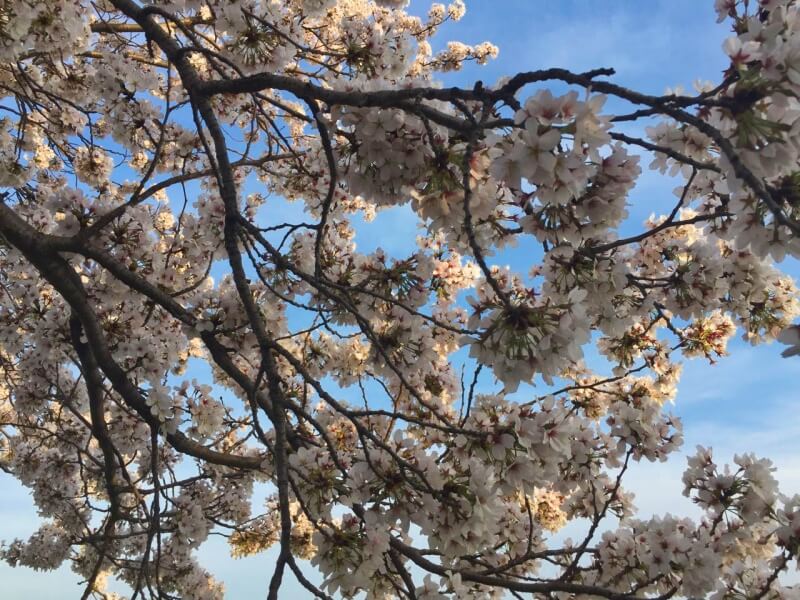
How to get around South Korea outside Seoul
The train system is excellent and I never got lost… If you plan on visiting the country, I recommend you get a Korea Rail Pass for 2 or more days.
Communication is as important as transportation and without speaking a word of Korean, you’ll need all the help you can get. My help came in the form of the Google Translate app (I heard great reviews about the Korean app Naver Papago too), without which I would have been sealed in a bubble throughout my solo trip to South Korea. I either spoke into my phone or typed my questions but the Korean output was perfect – at least I got what I needed and no one looked insulted by what appeared on the screen.
I bought a SIM card at the airport as soon as I landed. There are stalls all over the place. I paid for unlimited data for $75 for a month but there are far cheaper options. Data speed is high so the investment was well worth it. Next time, I’ll save myself time and money by ordering a pre-paid SIM card. If you’re phone is locked and you can’t change your SIM card, you can rent a pocket wifi device you can pick up from (and return to) the airport.
My choice is to get an e-SIM without having to physically change my card: I use Airolo.
Here’s a tip: whenever you leave a place, get someone to write your next destination in Korean on a piece of paper you can hand to a cab driver (taxis are inexpensive, I took many of them) or a person on the street – simple things like “intercity bus station” or “where is the restaurant” … Better yet, you can spend a little bit of time ahead to learn to read and write the Korean hangul alphabet – it’s simpler than it looks!
And no, I didn’t see any cherry blossoms in Seoul – I was perhaps a week early, and the weather had suddenly turned cold. But I didn’t despair…
SOUTH KOREA QUICK FACTS
- Currency: KRW – Korean Won
- Language and script: Korean. The hangul script (한글) is considered one of the simplest writing systems: you can learn to read it in just one day. You may not understand the language, but it can help read the map, the names of stores and stations, and much more.
- Must-have Apps: Naver Map or TMAP (similar to Google Maps, but Korea-specific) and Kakao Talk (originally a chat app, Kakao is a huge company that now offers taxi services, food delivery, and so much more)
- Public transportation: T-Money Card – available at most convenience stores
- Chargers for your electronics: Plugs C and F at 220 V
How many days do you need to visit Korea?
For some reason, people recommended two or three days for a Seoul solo trip. It depends.
I spent a total of 2 weeks in South Korea and felt that was enough to see many of the major sights, but I’d definitely have plenty of great things to do and see if I had stayed longer. The one major tourist destination I missed out on, Jeju Island, is supposedly a dreamy location for beach lovers.
If you’re planning a short South Korea itinerary, 7 days perhaps, then a short visit to Seoul would be fine. But I was in Seoul for six days and felt I had barely scratched its surface. The crowds, traffic and skyscrapers are easily counterbalanced by the high energy, contrast and headiness of the city. Plus, there are plenty of things to do in Seoul alone.
What to wear in South Korea
Women in South Korea dress conservatively on top, with not a bit of cleavage to be seen. That said, you can wear the shortest micro mini-skirt and no one will bat an eyelash.
City dwellers sport an urban look, like that of any city but perhaps fluffier and frillier than in Europe or North America. More girly.
Designer clothes are common, as you might expect in a wealthy country that values appearance. Watching a group of mature Koreans head out for a Sunday of hiking is an exercise in logo-spotting.
To give you an idea of the country’s wealth, South Korea places #20 on the Human Development Index for 2023 – ahead of France, USA, and Austria. It’s come a long way from its deep poverty just six decades ago.
Intriguingly, in Korea women can wear the shortest of skirts but showing shoulders or cleavage is a big no-no.
A few Korea resources
- I used the Lonely Planet guides to Korea and Seoul to plan a trip to South Korea and they were both useful for most South Korea tourist attractions. I usually don’t follow guidebooks, though, so I used them mostly for quick background.
- I found prices in Korea to be moderate – not as cheap as Southeast Asia but vastly cheaper than Japan (you’ll find reasonable hotel prices on booking.com). I stayed in an Airbnb in Seoul, a backpacker hostel in Busan, a guest house in Gyeongju, a hanok in Jeonju (the Happiness Full) and a cheap hotel near the airport. The hanok was by far the smallest – and the best – of the accommodations.
- Several books which will help you understand Korea include To Kill a Tiger, Dear Leader and Korea: The Impossible Country.
- You probably know Korea is the country of cosmetics, and its brands are excellent (I use them in France). Go to Myeongdong shopping district for some of the finest make-up and creams.
- Another thing to stock up on are green tea goods. From refreshing beverages to cookie flavoring, green tea is adored in many forms.
- Here are some websites where you can find more information about South Korea: Visit Korea, Visit Seoul, and English Busan.
FAQ South Korea Itinerary
Is it safe to travel to South Korea alone as a solo female traveler?
Absolutely! Solo female travel to Seoul and traveling to South Korea alone in general are very safe. The crime rates are low, the country is well organized, and people make it a point to show a high level of respect for each other (especially foreigners) in general. In fact, if it were not for the highly-strung relationship with North Korea, this would be my top choice for one of the safest destinations you can travel as a solo woman, no matter your age.
Should I bring cash to Korea?
In South Korea, cash is becoming less common, with transactions being in large part cashless.
Sadly, this can make things complicated as the majority of payment terminals in South Korea do not accept foreign bank cards. Look for ATMs with a “Global” sign on them. It’s important to note that most ATMs don’t work after 11:00 p.m.
Support for Apple Pay is limited, and Google Pay is not available.
While card payments are prevalent, some situations require cash too. Street food, small restaurants, and certain public transport options only accept cash, and some merchants may not accept cards for purchases under 10,000 won (approximately $10).
To be safe, always have some cash on you for backup, in case the merchant doesn’t accept your card.
Do you tip in South Korea?
In South Korea, tipping is not a common practice and can even be considered awkward in some situations.
In most restaurants, bars, and hotels, tipping is not expected and may even be refused. Good service is typically provided as a matter of course, and customers are not expected to leave additional money (which makes sense given that it’s a largely cashless society).
You’re often asked to pay beforehand, which can be disconcerting when you sit down for a meal and the bill comes before the food. It also means you don’t have to chase the miraculously disappearing staff for your bill after you’ve eaten.
However, it is a good idea to tip on a guided tour, especially if you were satisfied with the guide’s service.
What month is rainy season in Korea?
The rainy season in South Korea typically occurs during the summer, mostly in June and July. The monsoon season requires you to wear waterproof equipment, but despite the rain, the summer months in South Korea can be quite beautiful, with lush green landscapes and vibrant vegetation.
A South Korea Itinerary for any age
South Korea offers a fascinating blend of tradition and modernity, making it a popular destination for women travelers over 50, especially solo travelers. I felt perfectly safe, and was enchanted by what until then was an unknown culture to me.
Other Asian destinations that appeal to me for cultural reasons include Kuala Lumpur, Sabah, Chiang Mai, and the Indonesian island of Sumatra.
—With contributions from Marie of Be Marie Korea
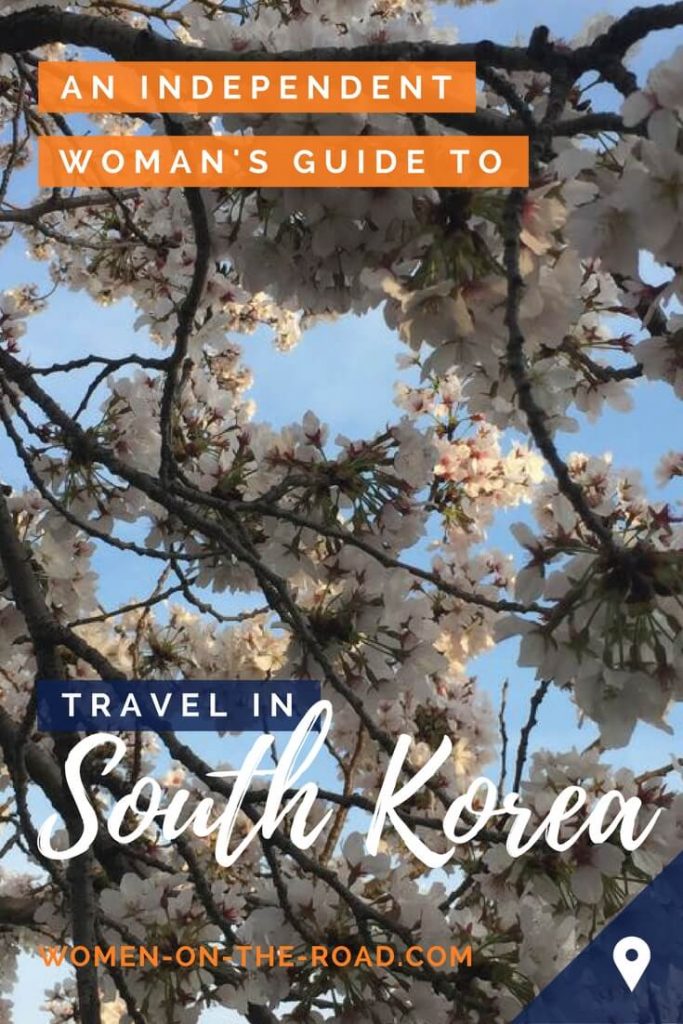

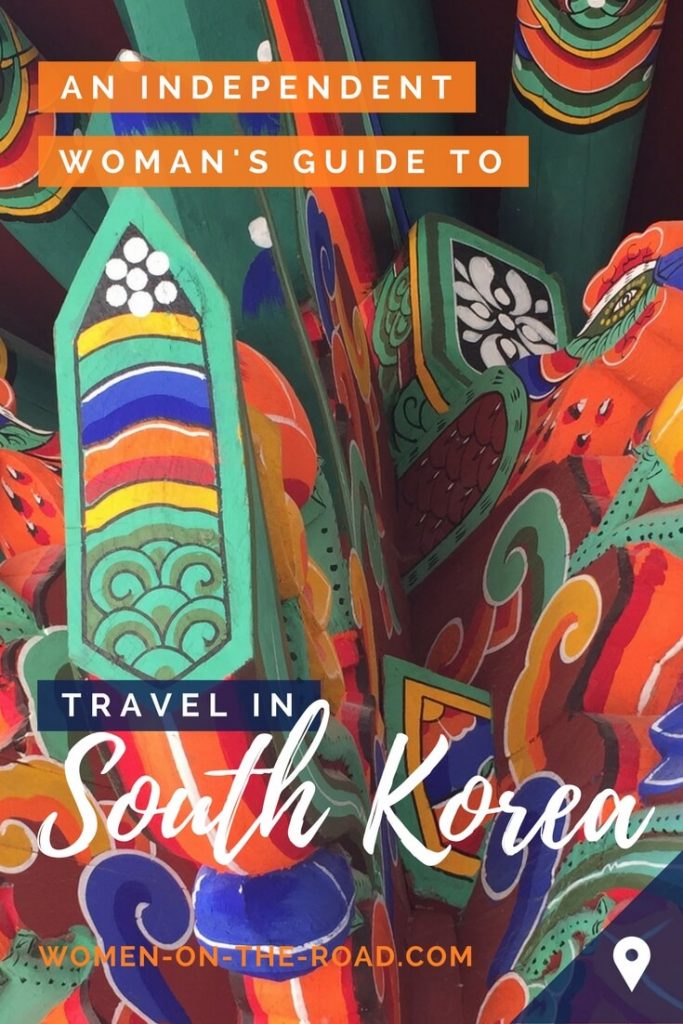
Travel Book Reviews – Americas Part 2 5 Jan 1:53 AM (4 months ago)
By Suroor Alikhan
Click here for reviews from: Africa – Americas Part 1 – Asia – Europe – World


South to America: A Journey Below the Mason-Dixon to Understand the Soul of a Nation
by Imani Perry
To understand the United States, you need to understand the South, its history and its legacy. That is the premise of this book by Imani Perry, a Black scholar from Birmingham, Alabama, who has lived outside her state for many years.
South to America is a mix of travelogue, history and memoir. Perry sees the South—and the US—through the prism of its past, especially through race: “Race is at the heart of the South, and at the heart of the nation. Like the conquest of indigenous people, the creation of racial slavery in the colonies was a gateway to habits and dispositions that ultimately became the commonplace ways of doing things in this country.”
Perry travels around the South to Appalachia, Virginia, Kentucky, Maryland, Washington DC, Alabama, North Carolina, Georgia, Tennessee, Florida, Louisiana, Arkansas. She also goes to the Bahamas and Havana, Cuba, because of the strong links between the US and the Caribbean.
What is striking throughout this book is the continuing reverberations of history, in particular the history of race and slavery. The past, Perry says, “is ever present”.
In Maryland, slaves, including children, would be sent to work on tobacco farms, inhaling the poison from the plants. One of Perry’s ancestors may have been among them. Today, slavery may not exist but people—including children—still work on tobacco farms, except that now they are more likely to be Mexican or Central American.
The wealth and power of the nation came from the takeover of indigenous land and the access to cheap labor. She quotes writer Sven Beckert about the enormous political power wielded by cotton plantation owners, with their “unlimited supplies of land, labor and capital”. These shaped the policies of the country.
The book is full of stories about people, those who were exploited, the exploiters and those who resisted. Oakwood University in Alabama, founded by the Seventh-Day Adventists to educate freed people, sat on 380 acres of land that was once a plantation. The university, although conservative, became a center for student organizing, especially in 1931 when the students went on strike to protest the fate of nine Black men falsely accused of raping two White women.
In Appalachia, where “the Black-White binary of race has never been as permanent and fixed as people like to claim, not when you live up real close”, she introduces us to three women who came from nothing but defied expectations, living life on their own terms.
Doris Payne from West Virginia was a Black international jewel thief, known as Diamond Doris. She remade herself as genteel woman with “perfected polish” (and lots of social security numbers). Linda Taylor from Tennessee was another self-created woman, identifying as White, Black, Latina, Asian and Jewish, and known as the “welfare queen”. Finally, a White woman whom we are all familiar with: Dolly Parton, who remade herself as the queen of country.
These are just some of the stories that Perry tells. Because she has such a wide canvas, you can see the patterns, the way the present echoes the past and the way events repeat themselves. The brutality of slavery is one of these patterns, one that recurs throughout.
This is often not an easy read, but accounts of the viciousness of slavery and segregation never are. She does, however, have enough positive stories and memories to prevent it being unrelenting. Although I do know a fair bit about US history, because of the way Perry pulled several elements together, I found this book gave me a deeper understanding of it.
The point she makes in the book is that the South should not be dismissed, as it often is, as an exotic region that is unlike the rest of the country. It is not only very much as part of America but one that holds the key to understanding what makes it the way it is today.
Buy the book on Amazon or on Better World Books

Amy Field seems to have it all: a degree from a prestigious liberal arts college and a good job in downtown Los Angeles. But something is missing. She isn’t happy: she often has nightmares of being strangled.
It is time to make a change. She decides to learn Spanish in Latin America and picks Costa Rica at random (there seem to be more books written about it than about other destinations).
The idea is to spend six months in San José, and another six months in Buenos Aires, Argentina, with a close friend.
But as a poet once said, the best-laid plans often go awry. Her friend drops out of the trip, and when her year is up, Field isn’t ready to go back. So she stays on in Latin America for two and a half years. It is a life-changing experience: her self-confidence grows and she becomes more comfortable being on her own.
When she first arrives in San José, she can barely speak Spanish. The couple she stays with, Daisy and Pascual, speak no English. They manage to communicate, especially when their son Marco visits and is able to translate.
Field travels around the continent to Panama, Chile, Argentina, Paraguay, Brazil, Bolivia, Peru and Ecuador. In Chile, she climbs a volcano almost by mistake (she was fairly sure she would not make it to the top), hikes in the Torres del Paine National Park and goes to the end of the world (Tierra del Fuego, Chile). She goes to the San Blas Islands in Panama, Machu Pichu in Peru, and sleeps in a hammock in the Amazon forest in Brazil (she doesn’t get much sleep—she’s too busy worrying about snakes and other creatures crawling in with her).
But Costa Rica is her centre—specifically, the Hotel Las Tortugas, an ecotourist resort in Playa Grande. The hotel is run by Louis, an American, and his Costa Rican (or Tica) partner, Marienela. He started the hotel so he could save the beach—which is one of the places that the Leatherback sea turtles spawn—from being taken over by developers.
Field eventually gets a job at the hotel, answering emails in return for board and lodging. Louis becomes something of a mentor to her. He provokes her, teaches her to surf and offers her bits of wisdom. One of the first things he tells her when she arrives at the hotel is to take off her watch: “we live on moontime here”.
The chapters about Playa Grande are scattered throughout the book, which can get a little distracting. I was reading about Chile (which I was especially interested in, having spent part of my childhood there), and then suddenly, I was back in Costa Rica in a chapter about the joys of surfing, when I wanted to continue with reading about her trip to Chile. I did enjoy reading about Hotel Las Tortugas and all the people there, but sometimes the chapters felt a bit jarring when they turned up in the middle of another section.
Having said that, I have to take my hat off to Field, arriving in not just in an unfamiliar country but a continent, for a long stay with barely any knowledge of the language. She pushes herself out of her comfort zone. Not only does she survive, but she thrives on a sense of adventure. The trip helps her decide what is really important to her, as opposed to the roles that society expects her, as a woman, to fill. As she writes, the aim of her travel was not the destination: “It had been about opening my eyes. It had been about learning, and moving, and observing, and listening. … It had been about finding out—and believing—that I am more powerful than I ever could have imagined.”
And surely that is the point of travel.
You can also read great book reviews about Africa, Asia, Europe, the rest of the world and Americas Part 1.
Travel Book Reviews – Europe 4 Aug 2024 8:35 PM (9 months ago)
By Suroor Alikhan

Enchanted Islands: A Mediterranean Odyssey—A Memoir of Travels through Love, Grief and Mythology
by Laura Coffey
“Something about the attempt to map the imaginary onto concrete-literal geography, its futile nature perhaps, caught my attention and held it. … If myths help us to make meaning of the world, maps help us find our footing, understand where we are in gravitational space. I needed both.”
Laura Coffey is living in London, and her relationship with her boyfriend seems to be getting serious, when he tells her there is someone else in his life. It is the year of the pandemic, so when lockdown is imposed, she is alone in her apartment, dealing with the break-up and the fact that her beloved father − whom she can’t visit because of Covid − has cancer.
As soon as she is able, Coffey leaves for Italy, at that time declared a safe country. Because she is reading the latest translation of Homer’s The Odyssey by Emily Wilson, she decides to try to follow in his footsteps. There are several theories about the exact location of the islands mentioned in the Odyssey—the most common is that they were Greek islands. But Coffey opts for the lesser known theories: that the islands weren’t in Greece but in Italy, Spain or Croatia.
She starts with the Aeolian Archipelago off the northern coast of Sicily, supposedly the island of the sun god, Helios.
Her sun-kissed travels, far from London’s greyness, then take her to the Egadi Archipelago, Croatia and the Balearic Islands. She immerses herself in each place, meeting local people and eating at local bars. She works remotely, so her days fall into a pattern that starts with an early morning swim in the sea, however cold it might be.
Coffey writes vividly of the people and places—you can feel the sun, and the shock of the cold water. In Cefalù, Sicily, she hangs her washing on the line, but one of her socks floats down to the balcony below. She is about to give up on it, but her landlady Rita would have none of that and promptly gets it back with fish hooks and a fishing line. (Obviously this type of thing had happened before.)
In Korčula, Croatia (supposedly where Calypso tempted Odysseus), the streets are designed in a herringbone pattern to protect people from the Bora, a northeastern wind. An old medieval law granted immunity for crimes committed during the Jugo southeasterly winds, which were said to drive people crazy so they could not be held accountable for their actions.
Enchanted Islands is much more than a straightforward travelogue. Coffey’s grief about her father is interwoven into the narrative. She returns home to see him towards the end, and the way she writes about that final visit brought tears to my eyes (and a bit of laughter through the tears too). He is very present throughout the book.
As is Odysseus. Coffey keeps going back to the copy of the book she brought with her, and her wanderings echo his. But this is more than just a voyage through myth: it is also Coffey’s Odyssey, her journey to heal from heartbreak and grief, to find her place in the world, and a search for home, which is central to The Odyssey. What is home? Coffey encapsulates it perfectly: “Home is an imaginative expectation of acceptance, belonging, of being truly known and loved”.
This is a beautifully written and moving book, full of light and darkness—and humour. Anyone who has lost a loved one or watched them decline will recognize the pain and the grief—and the bewilderment—that come with it.
This is a book I would buy for friends—it is definitely one that I will return to.

The Flow— Rivers, Water and Wildness
Amy-Jane Beer
“I am going to go back. Not just to the river, not necessarily to white water—I’m not 30 anymore—but to rivers in general. I’ve been thinking of the hair-fine eddyline I saw here a few months ago; the fingertip dimples; the scent of river-aerosol and of wet rock, and I wonder what else I missed in all those years. So yes, I will go back, but slowly, and this time I’m going to pay more attention.”
When Amy-Jane Beer’s friend, a fellow kayaker, drowns while going down the Rawthey river in Cumbria, UK, in 2012, Beer is devastated. For years after Kate’s death, Beer does not get into her beloved boat. This book is about her finding a way through the grief, back to rivers.
She starts with the Rawthey, where Kate died, and then travels to rivers in England, Scotland and Wales. Her focus is not just on rivers and how they influence our lives, but the wildlife and plants that live along the river—and the state of rivers in the UK today.
Rivers are living organisms, constantly moving, changing, with eddies, torrents, geysers and much more. But pollution and neglect over decades has meant that many of the rivers in the UK are contaminated with trash, sewage and spill-off from factories, not to mention manure from animal farms. She meets people spearheading the recent attempts to clean up rivers as well as rewilding the areas surrounding them, restoring nature to what it originally was.
Linked to this is the issue of who has rights over rivers.
According to UK law, landowners “own” the river that runs through their land. This keeps out the bigger boats and pleasure cruises, but it also excludes those who do no harm to the river, such as kayakers and bathers. Beer feels strongly that the latter should be allowed to use it, especially if we want to preserve nature.
“Immersion changes people—symbolically and literally. At the root of the irresponsible behaviour cited as a reason to exclude the public is a disassociation from nature. If you want a society that respects rivers, you must give its people an opportunity to know them.”
Rivers are not just bodies of water that flow over land: there are also “rivers in the sky”. This is how a great deal of water moves. Water in the skies is made up not just of clouds, rain, snow or fog—99.5 per cent of it is invisible vapour. Some of the larger flows of vapour move 10 billion tonnes of water from humid tropics every day.
Beer is wonderful companion. She packs a lot of information into this book, but without sounding pedantic. The writing is lyrical—her love for rivers and nature in general really comes through. I like the way the book is structured: there are short, informative chapters called Eddies scattered throughout. Eddies are the place where kayakers can rest and catch their breath.
“We come from water, and water runs through us. It carries our chemistry and our stories. It shows us more than itself: all the colours and none. We are mostly water for all of our lives, but water is only us for a short time before it becomes something else. Perhaps we leave something of ourselves with it.”

A Line in the World—A Year on the North Sea Coast
By Dorthe Nors. Translated from Danish by Caroline Waight
“Women’s relationships with the landscape were relatively undocumented. Their feeling for nature was at best irrelevant, at worst dangerous. But now I have claimed the right to see and to describe. The landscape must have an essence that, in itself, can speak. Something that cannot be captured with compasses and spirit levels, that cannot be made harmless with weapons.”
The North Sea coast starts at the northern tip of Jutland in Denmark and slopes down into Germany and the Netherlands. It is a coastline that Danish writer Dorthe Nors knows well: although they lived inland, her parents had a cottage near the sea, where they went regularly. This is where her family came from; as she says, “the coastline was our place of origin”.
Nors is asked to write a book on Denmark’s west coast, but she takes it further, including Germany and the Netherlands. But most of the book—like the coastline—is situated in Denmark.
Nors is living in Amsterdam when she feels she cannot take another day of her neighbour’s thundering bass and the smell wafting up from the drug dealer downstairs. So she moves to a house by the Danish coast. It is a decision she does not regret, although it isn’t always easy.
Her house is part of a small community where people have known each other all their lives, and it takes a while to be accepted. But things change when a wolf is spotted in the area. The inhabitants are worried, and there is talk of killing it. Reporters ask Nors (by then a well-known writer) whether she thinks that the wolf is a threat. She replies that people were more likely to be mowed down by a tractor than attacked by a wolf. This response angers the community so much that she is ignored for a year and a half.
The landscape, however, is beautiful, and this is where Nors feels at home. A Line in the World is more than a travelogue: it is a meditative book on landscape, memory, history and the stories we tell. I love the way she weaves history into the present, so the two exist at the same time: for example, the ships that used to trade along its coast in the centuries gone by and the ships that sail there now.
Nature is not benign: there are storm surges, and as a child, Nors was almost sucked into the sea by strong currents. The entire coast, as she tells a tourist, is a mass grave with the remnants of shipwrecked sailors washed up on shore. The sea is a powerful force: as it encroaches on the land, it pulls graveyards—and more—out to sea.
Nors muses on the history of the region, the power of nature, and her own childhood growing up on the coast. She draws comparisons between the paths she finds on the beach and the way our memories develop. She delves into the history, and immerses herself in the region. With a friend, Signe Parkins (who drew the illustrations for the book), she drives to churches to look for frescos. The frescos were part of the Danish Catholic heritage but were whitewashed when Protestantism took over. Now they have been uncovered again—survivors from 1,000 to 500 years ago.
Things have come full circle in other ways. The region’s customs have changed over time—for example, the fashion in women’s clothes. But now visiting “city slickers…played at the old days”, wearing traditional clothes to march through town. Nors’s friend Johanne refuses to dress up in her grandmother’s clothes, because they meant something, something that is far more important than dressing up. “It meant longing, hard graft, vulnerability. And it meant that you lived your life with the Wadden Sea, in birth and in death. That you realized what those great flats gave—life and rich growth, wildfowl, glasswort, amber—and what they took from human life.”
I love the quietness of this book, the meditative quality of the writing, and Nors’s ability to capture the essence of this distinctive region.

A Woman in the Polar Night
by Christiane Ritter, Translated from German by Jane Degras
“No, the Arctic does not yield its secrets for the price of a ship’s ticket. You must live through the long night, the storms, and the destruction of human pride. You must have gazed on the deadness of all things to grasp their livingness. In the return of the light, in the magic of the ice, in the life-rhythm of the animals observed in the wilderness, in the natural law of all being, revealed here in their completeness, lies the secret of the Arctic and the overpowering beauty of its lands.”
It is 1933. Christiane Ritter leaves Vienna to join her husband Hermann in Svalbard (or the “Cold Coast”), a Norwegian archipelago in the Arctic Ocean where he had been part of a scientific expedition.
Initially, Ritter hates her new home: a very basic hut with a stove that hasn’t been cleaned for a while and emits black smoke. When they need water, they have to find a stream or else use glacier ice; and if they want to build an extra room—which they do for Ritter—they have to wait until planks wash up on the shore. The land is grey and miserable, a world away from the lights and comforts of Vienna.
They do have stocks of tinned food: beans, peas, lentils, condensed milk, coffee, sugar, white rice and white flour. But none of this, Ritter thinks, contains any vitamins, which they will need, especially during the long winter. For that, they need fresh meat, and that means hunting. So when the men (Karl, a Norwegian, shares the hut with the couple) kill a seal, she swallows her squeamishness and helps them prepare it, wondering if she should cook the flippers.
What I found hard to deal with—and so did Ritter—is the trapping of Arctic foxes for their pelts. It was the way the men made a living, but it seems barbaric.
Slowly, she begins to acclimatize, left alone as the men go away for days. A fierce storm rages for days. She copes, manages to chop firewood, and do whatever is necessary to keep the home safe.
The long winter is difficult—night lasts for weeks on end. When the sun finally appears—just a glimmer at first—they greet it with joy. She thinks about the people in Vienna, so used to the sun that they cannot appreciate what a precious thing it is.
And when the time finally comes for her to return to Vienna, she finds she cannot leave. She has fallen in love with the Arctic. She cannot go back to the kind of life she took for granted, a life where things are made easy for you, where you are not tested to your limits. When she does eventually return, she finds it hard to adapt.
First published in 1938, it is the only book Ritter ever wrote, and it became a classic. She immerses the reader in life in the Arctic: the storms, the ice, the ethereal landscape, and the ability to make do with very little.
I loved the way she captures the mood of the landscape. During the “perpetual twilight” as winter approaches, the landscape seems otherworldly. “Withdrawn, it seems to lead its own self-contained life. It is like the dream of a world that is visible before it takes shape as reality.” Her descriptions of the mountains catching the light is evocative: “They take on every shade from red to lilac, and all the colours have a glowing depth that is never found in the landscape at home”.
She finds a strength in herself she did not imagine she possessed, a strength that she drew upon to survive in this harsh and bleak landscape. But as she observes, “it is true that one will never experience in the Arctic anything that one has not oneself brought there”.
This is a memorable book, a story about self-discovery, an account of a way of life and a landscape that not many people have experienced. Definitely worth reading.

Heavy Time: A Psychogeographer’s Pilgrimage
by Sonia Overall
“You picture yourself stepping out onto a path like The Fool in the tarot, a bundle on a stick, tripping lightly. You imagine shedding responsibility, stepping off the treadmill, wandering the lanes. But not an idle wandering: this has meaning. It is the recovering of sanity and sanctity. You want to remember what it feels like to have the freedom of ideas, to follow your interests, to scrutinise encounters. To stop the endless chatter and absent yourself from the secular spectacle. You picture yourself on a pilgrimage.”
Sonia Overall is a psychogeographer—what she calls “a hunter of spirits of place”. To use her definition, psychogeography is “the study of how a place makes us feel and act”.
Overall is not a religious pilgrim. She is looking for some space, clarity and maybe to rediscover her faith. She plans to take the ancient pilgrim route from Canterbury in the southeast of the UK, where she lives, to Walsingham in Norfolk. She will go through Ely, where she grew up and where her parents still live. All three towns have ancient cathedrals and were places of pilgrimage in medieval times.
Her journey is a palimpsest, superimposing itself on those of earlier pilgrims, with the modern often replacing the old.
Take watering holes, for example. The original ones set up for pilgrims are now almost all gone, but petrol stations and general shops provide what is needed.
Keeping to the tradition of relics that were so important to medieval pilgrims, Overall carries things she picks up from the road: a feather, a bingo card, a seedpod, a collector’s card with a picture of a panda.
However, the path she follows is full of history; there are old churches, ruins and the occasional pilgrim’s well. And, at times, something more intangible.
Between Canterbury and Rochester is the Chapel of Our Lady of Elverton, a medieval church now in ruins, and a site that was once a Romano-British settlement. Something odd happens to Overall there. She is admiring the ruins and the woods, when her ankles feel cold, as if she is in water (she is not), and she senses a weight pulling her down. Walking feels like wading through molasses. She is spooked and leaves. The next year she returns, not sure if it was her imagination playing tricks on her. But the feeling returns, and she cannot explain it.
Overall spends the night in pubs, which give her a chance to shower and recoup. She is not a long-distance walker and has not trained for the walk. This catches up with her when the “archipelago of blisters” on her feet eventually become infected. She has to give up the walk less than halfway through and finishes it with help from her parents who drive her to Walsingham. But this is unsatisfactory, and the next year, she returns and completes the pilgrimage on foot.
Her journey is not easy. It is not only the pain and the heat—both trips take place in July. She also has to deal with unwanted male attention as she approaches London—she is, after all, a woman walking alone. In Swanscombe, the landlord of the pub she is staying in is a little too friendly. Men in passing trucks check her out, “tit-staring”.
The book is beautifully observed, whether Overall is describing the countryside, the detritus humans leave behind (especially when her path takes her along one of the major roads like the A2) or the way her body copes—or doesn’t. Her descriptions are so vivid that I could not only hear the rushing traffic or see the ducks and herons on the river, but also feel the agony of walking on damaged feet.
But most of all, this is book is a reflection on pilgrimage—what it means, and how the act of pilgrimage shapes the pilgrim, opening up new ways of seeing. There is the constant presence of history, of those who have gone before, giving the journey a sense of continuity, making it a part of something larger. It is a time to retreat from everyday life, or as Overall puts it, “the miraculous cure of pilgrimage: a shockwave through the futility of busyness”.

The Land Where Lemons Grow—The Story of Italy and its Citrus Fruit
by Helena Attlee
“During journeys that have taken me from the bergamot groves of Calabria, on the southern tip of the Italian peninsula, to lemon houses set against the snowy backdrop of the Alps, I found that citrus trees and their fruit have had a radical part to play in Italy’s political and social history, and have brought extraordinary wealth to some of the poorest places in the country.”
This is a travel book with a difference: at its center is the citrus fruit in its various forms — lemon, orange, bergamot and much more. And what a story it is, intertwined with politics, organized crime, the aristocracy, and brave and determined farmers.
Atlee’s first glimpse of lemon trees was over three decades ago, when her train pulled into the Italian Riviera. “[T]here were lemons growing beside the station platform, their dark leaves and bright fruit set against a backdrop of nothing but sea…”
Atlee’s interest in Italian gardens – she designs garden tours in Italy – led her to ornamental citrus trees grown in pots. But these plants, she found, represented only a small part of Italy’s citrus history.
Until 831 CE, when the Arabs brought lemons and sour oranges (the kind used for marmalade) to Sicily, Europe’s only citrus fruit was the citron, brought to Calabria by the Jews in 70 CE.
Sicily had dry, hot summers and cold, rainy winters, so the Arabs devised irrigation methods to catch and store and redistribute water, methods that are still in use today on some citrus farms.
Growing citrus became profitable when, in the 1700s, it was found that lemons could prevent and cure scurvy, suffered by sailors on long voyages.
Italian lemons became popular in the UK and then in the US, but the large earnings attracted the wrong attention. To profit from the citrus boom, an organization was formed in the lemon groves of the Conca d’Oro in Sicily – an organization made not only “bandits, smugglers and cattle thieves” but also “lawyers, politicians, estate managers and farmers”: the Mafia.
Atlee travels around the country, exploring the stories behind Amalfi lemons, Calabrian bergamots, and Sicilian bitter oranges. (And for foodies, there are recipes scattered throughout.) She writes about bizzaries, the strangely shaped fruit grown by the Medicis in the 15th century, and highlights the extraordinary variety of citrus.
In Liguria, Atlee comes across a perfectly spherical lemon in the citrus grove of farmer Giacomo Parodi, whose trees grow in “lovely fruitful confusion”. “It got too friendly with an orange”, he tells her.
I love books that make you see everyday things in a different light. The Land Where Lemons Grow takes as its subject fruits that we all take for granted and reveals their secret history.
I learned a lot not just about citrus fruits but also about Italy’s history. I would recommend this book: you’ll never look at a lemon or orange the same way again!

My Family and Other Enemies—Life and Travels in Croatia’s Hinterland
by Mary Novakovich
“The beauty in small things seemed to speak Lika to me, a beauty that somehow held its own in this vast, sometimes overwhelming landscape. Orchards groaning with fruit, homemade cheeses hanging in muslin, ramshackle liquor stills gathering dust in cellars and barns until the right season came along, plump fresh fish cooked simply, loaves of bread the size of my torso…green scuttling lizards, dancing fireflies.”
Mary Novakovich is a journalist and travel writer based in London. Her family is from Lika, Croatia, an area that stretches from the Dinaric Alps to the Adriatic Sea, along the Croatian border with Bosnia and Herzegovina. Although Novakovich’s family are ethnic Serbs, their identity as Ličani is the one that really counts. Novakovich describes the Ličani as “[s]tubborn, mulish, impetuous, spirited, tough as old boots, warm-hearted and generous”.
Her parents fled the Second World War, moving to the UK and then Canada. Novakovich first visited Lika in 1976 as an 11-year-old, sent to spend the summer with her aunt and uncle. By the time she returned, 28 years later, Yugoslavia did not even exist anymore.
My Family and Other Enemies is Novakovich’s account of that first stay in Lika and several subsequent trips, but the bulk of the book is about her 2009 journey with her mother, visiting relatives. Mother and daughter bicker about the music in the car, about what they should do next: Novakovich wants to explore the area, but her mother insists on visiting relatives time and again. Although the two are close, Novakovich gets exasperated with her mother, who is often unreasonable. Looking back, Novakovich thinks that her behaviour might have been an early sign of the dementia that was to set in.
I loved this section because it is mostly about her family, whom you get to know. They spend time with her uncle Gojko and Dušanka, the woman he fell in love with when they were both in their seventies. And everywhere they go, they are fed. Novakovich details the endless feasts (which as a foodie, I enjoyed): burek, freshly baked bread, and gibanicai, a savory pie made by scrunching up sheets of filo pastry and dipping them into a mix of eggs, salt, sparkling water and sunflower oil.
But food has another resonance. Novakovich’s parents were refugees, which meant that they did not have family heirlooms or things that would link them to the past—they had to leave all that behind. Instead, they had food, “stronger than religion”, and their rituals revolved around it.
Lika, like the rest of ex-Yugoslavia, is full of history and has seen more than its fair share of conflict. Novakovich weaves the horrors of the two world wars and the region’s civil wars into the family visits. She visits a pit in the forest where, on 28 June 1941, the Ustaše, a Croatian ultra-nationalist group, rounded up an entire village and threw them into the pit, leaving them there to die. Those villagers included Novakovich’s aunt and great-grandmother. Her aunt managed to crawl away but her great-grandmother did not survive.
The book gives you a real sense of the land: its history, its landscapes, its food and its culture. It is personal, like being in the homes of Novakovich’s family, and brings Lika to life.

I Belong Here – A Journey Along the Backbone of Britain
by Anita Sethi
“Get back on the banana boat!” On a train from Liverpool to Newcastle, Anita Sethi is subjected to a vicious attack by a man, who lets loose a torrent of abuse. But she is British, born in Manchester and as much a part of the country as he is. The incident leaves her with post-traumatic stress disorder – this was not the first time – and she suffers from anxiety, panic attacks and claustrophobia.
Craving wide open spaces, Sethi decides to reclaim her country by walking its “backbone”: the Pennine Way, at 431 kilometres the UK’s oldest trail. The Way follows the Pennines, a range of hills and mountains that run from the Peak District to the Tyne Gap. She is determined to transform the incident of hate into something that brings hope and beauty.
“Dehumanising language is designed to cause despair, but I will not leave the pathways I walk upon, this place I call home. I will not give in to fear and despair. Instead, I walk even further, even deeper, into this place where I belong.”
She sets out with the basic equipment she has, which results in water seeping in through her boots. But as she walks, she starts to get stronger and heal mentally as well. The landscape helps her put her problems into perspective: “I relish even the moody and mercurial clouds threatening rain at any moment, for so vast are they that they add to the sense of the great outdoors’ immensity, making me feel tiny in the landscape, my worries washing away.”
Her descriptions of natural beauty around her are vivid, like the path behind her, “weaving its way like a strand of silver hair in the mountains and then vanishing into the mist”. She connects with some of the people she meets, learning to trust again.
This is much more than a travel book. Sethi writes about her journey, both physical and emotional – a “journey is not just linear but takes us inward”, she says. She also tackles the bigger issues: for example, the “banana boat” the racist referred to leads her to talk about the banana plantations and the indentured labourers brought to work on them.
This is a rich book, and I loved the way Sethi found intimate connections between the landscape and humans – not just in the way we relate to the land, but also drawing on deeper connections through language. Visiting Hull Pot, the largest natural hole in England, she draws a parallel with the holes left in our lives by grief and loss, like the death of Sethi’s friend, to whom the book is dedicated.
“I sit down a while and gaze at the landscape and breathe. I knew that journeying through the North had something to offer up to me. I felt it calling me. Go back to where you’re from. This is where I’m from. I’m from the North. The glorious North.”
This is ultimately a story about healing, identity, and a sense of belonging.

Review of Names for the Sea - Strangers in Iceland
by Sarah Moss
Iceland: the name conjures up smoking volcanoes, boiling geysers and the Aurora Borealis, along with cold, dark winters and endless summer days. But Iceland is much more than that, and Names for the Sea rounds out this picture, written by someone who spent almost a year there.
Sarah Moss has always had a hankering for the northerly islands.
In the mid-2000s, the National University in Iceland needed an expert in nineteenth-century British literature. Moss applied, was hired and in July 2009, her family moved to Reykjavik.
When they arrive, Iceland is in full recession after its banks collapsed. The family, in a sense, benefit from this: most Icelanders are homeowners, so finding an apartment to rent isn’t easy. They eventually find one in a wealthy suburb: the apartment blocks were half-built when the banks collapsed and the money dried up. They are the only inhabitants in their building.
One day the Icelandic papers report “a small eruption in the south”. Moss and her son Max take a volcano trip to see it for themselves. She describes the “sulfurous glow” and the lava, like a flame, sliding down the hill, “slow as tar”. Then, a few weeks, later, the volcano erupts again. Except this time, it’s not what the Icelanders call a tourist eruption, but one that disrupts air traffic, the consequences of which ripple throughout the world.
Moss gives you a sense of day-to-day life is like in Reykjavik. Fresh fruit and vegetables are in short supply. Most of these are imported and are now too expensive for most people. However, Iceland is starting to grow its own fruit and vegetables. Public transport is run mainly for children getting to school and back—Moss is almost the only adult to use buses to get around.
I learned many interesting things about Icelanders. They feel safer on the sea than on land. (This might have something to do with a large number of active volcanos.) They do not talk to strangers, not even to complain about the weather. Moss’s students are shocked that there are people who would strike up a conversation with someone they don’t know.
Moss seeks out Icelanders who can give her a sense of the country’s past. She visits Magrét and Theódór, the grandparents of one of her students, who lived through a volcanic eruption on their little island. She talks to a woman, Vilborg, who remembers the Second World War and growing up in rural Iceland. Þórunn introduces her (in a manner of speaking) to the hidden people, the elves. Elves are taken seriously in Iceland: many people believe they exist.
Moss acquires a bicycle and uses it to get to work, immersing herself in the landscape, which is almost a character in its own right.
“On my right, across the sea, there are mountains that are visible only at sunset and—I will learn in winter—sunrise, sharp, snow-covered mountains pink in the low light. They fade as the sun goes down. Nearer, there are filaments of cloud drifting in front of Esja, bright against a hillside matt as sugar paper. Curlews call across the water and the Artic terns flicker shrilling over my heads, beaks and wings pencil-sharp in the soft sky. Geese are beginning to mass on the waves, their low conversation the bass line to the seagulls’ fish-wife screaming on the headland.”
Iceland may be part of Western Europe, but at a time when globalization seems to make everything the same, this is a refreshing discovery.

Review of Wanderland—A Search for Magic in the Landscape
by Jini Reddy
“I was…sick of the anxiety. This was no way to live, I realized if I wanted to hang on to my sanity. It was time to just do the thing that I secretly longed to do: to actively seek to enter a world that co-exists with the visible one, a world of signs and portents; and to experience this land, my home Britain, as the indigenous people I’d met in the far-flung places of my travels had experienced theirs, and to let the rest go.”
Jini Reddy was born in the UK. Her parents had moved from South Africa, and she had spent part of her childhood in Canada, so she never really felt part of the country of her birth. After a difficult decade, her instinct to connect with nature, and especially nature in Britain will help her find a way out of what she calls her “decade of despair”.
Reddy finds the World-Wide Labyrinth Locator online and decides that’s where she will start. There is a labyrinth in Cornwall on a farm above the sea cliffs. It sounds perfect, especially as Reddy has an affinity with the sea—it is where she feels happiest. And so her journey begins.
Reddy meets a British Native Shaman in Herefordshire, a tree whisperer in Cromford in the Derwent Valley, and a priestess in Glastonbury. She walks St. Michael’s Way, a pilgrimage route from near St. Ives on the North Cornwall coast to St. Michael’s Mount on the south coast—13 and a half miles, which she does in a day. She finds peace on Lindisfarne, an island off the coast of Northumberland that is cut off from the mainland at high tide when the causeway linking it is flooded.
Although her journeys do not always result in epiphanies and are sometimes disappointing, Reddy persists.
On Iona, a Scottish island, she looks for the Glen of the Temple, a place that is supposed to be magical. But locals either haven’t heard of it or give her extremely complicated directions. She almost gives up when, on her last day, she bumps into someone she knows who offers to walk with her to look for it. They find it and it is truly magical.
“The first thing I notice is the deep reservoir of silence, as physically tangible as a bird or a hill or a tree. There are no human footprints on the muddy track. The valley conveys the impression of having rarely witnessed human life. There is no tension here, no grievance or edge or chill. Nothing has jostled this valley. It is entirely at peace with itself. There is a clarity here that I have only experienced before in isolated valleys in Nepal or Pakistan. … A sparrowhawk reels overhead, as if enacting some primal ritual that it undertakes when a human actually does enter the glen.”
The characters in this book, the shamans and priestesses, have this in common: they have found a way to be closer to the natural world, to take the time to understand it in a way most of us have forgotten. Reddy reminds us we can too, without having to travel to the ends of the earth.

Review of A Foodie Afloat
by Di Murrell
There are people who travel so they can tick places off their lists, and there are those who immerse themselves in their surroundings. Di Murrell belongs to the latter, having spent most of the last two decades on a barge in Europe and the UK.
She decides to travel from Cambrai to Paris, a couple of hours by car but a week on a barge.
“We see places that no normal holidaymaker will ever visit and view them from an entirely different perspective. … Best of all when we do stop and tie up, local people do not view us with that suspicion reserved for unknown callers in out-of-way places. We are accepted as people who are passing through.”
In A Foodie Afloat, you travel with Murrell along France’s waterways, taking in natural beauty and meeting interesting people: a truffle hunter, a crayfish catcher, and the unpretentious German man they shared a table with, who turned out to be a two-star Michelin chef!
But as the title of the book makes clear, the focus is on the food. Murrell clearly enjoys eating and cooking and seems to be able to produce fantastic meals from the barge’s small kitchen. Each chapter ends with mouth-watering recipes, so the reader can join the feast.
Murrell avoids supermarkets, focusing instead on local producers and farmers’ markets, on foraging along riverbanks (wild garlic and mushrooms and a variety of fruit), and on occasional anonymous gifts of fresh food from locals.
Barges, because they go along the waterways, provide a completely different perspective of cities and towns. In Paris, they go under the Bastille on the canal St. Martin in the middle of the city. It’s a magical scene: “The spotlights in the tunnel create shimmers of rainbow colors that sweep across the roof, illuminating the darkness. At regular intervals, there are brick air vents through which the sunshine and water filter down. Circles of light shine through the swathes of trailing plants that grow down through the vents. These vertical gardens are reflected in the water in front of the boat and the creepers hang down far enough to brush our wheelhouse roof as we pass beneath.”
The chapters follow the course of a year, going from spring to winter, and the recipes follow the same rhythm. Because Murrell believes in not wasting anything, a recipe for chicken breasts is followed by one for “the rest of the chicken”. I enjoyed both the recipes (I have tried out a couple) and the trip. Murrell’s writing reflects the leisurely pace of the barge: the time to take in the landscape and, in a way, to become part of it.

Review of To The Lake – A Balkan Journey of War and Peace
by Kapka Kassabova
“To journey to the place of your ancestors, you must be prepared to see what it is easier to deny.”
This is the account not just of a physical, but also of an emotional journey. Kapka Kassabova returns to the place her family originally came from, Lake Ohrid on the Balkan peninsula.
She is the fourth generation of women to migrate and is looking not only to learn about her grandmother and great-grandmother but also to understand why it feels like pain—illness, depression, anxiety—is passed on from mother to daughter in her family, “like a dark wave”. “Unless we become aware of how we carry our own legacies, we too may become unwitting agents of destruction.”
Lake Ohrid and its twin lake Prespa straddle North Macedonia, Albania and Greece. The lakes are among the oldest in the world, probably about three million years old and once part of a sea. The lakes are still shrinking; on Lake Ohrid, ladders that once led to the water from hermits’ caves in the surrounding limestone mountains hang halfway down, seeming to go nowhere.
Kassabova starts her journey in Ohrid (“on the hill”), her grandmother’s town, where “all the men look like my cousins” (many of them probably were). The question she is asked is, “Whose are you?”. At dinner in a small restaurant on the first night, she is served by a waiter who is a poet, and the bottle of wine she orders is named after a poem. The place feels magical: “Ohrid made you feel the weight of time, even on a peaceful evening like this, with the screech of cicadas and the shuffle of old women in slippers. Below me was a reminder that gladiators had fought here only two thousand years ago. … The stillness was complete as if the lake absorbed not only noise but time itself.”
She travels along the lake, to rock churches where frescos of saints have their eyes gouged out (probably by people who thought the plaster had magical properties), and visits the shrine of the Black Madonna. She drives to Albania, since she cannot cross the invisible border that cuts through Lake Ohrid, exploring the town of Pogradec on the southern end of the lake.
She will return to Lake Prespa on a second voyage: “I swam in the warm, dark water…but only once—there was an unsettling feeling of something lurking beneath.” But this is also a trip where she finds healing, in the monastery of St. Naum on Lake Ohrid.
The Balkans have a history of conflict, both from invading powers and civil strife. Repressive regimes led to emigration, either because of poverty or politics. Families were split up, including Kassabova’s, unable to reunite because of the political climate.
Kassabova discovers a pattern “of absent men and women left behind, unbending women who dislocated themselves and their loved ones out of shape trying to right what had gone wrong with the family”.
History still has a hold on people. In Albania, the memory of Enver Hoxha’s dictatorship is still fresh. In Greece, Pavle, a Macedonian, tells her about the civil war that tore the country apart after the Second World War. On a more cheerful note, Kassabova visits a cherry orchard near Lake Ohrid which was a gift from a Turkish Aga to his lover, a woman from the family that owns it.
There is also a narrative of religious tolerance. In Ohrid, the azan (call to prayer) is followed half an hour later by church bells, so that they don’t clash. Both Muslims and Christians worship at the same shrines, and there are intermarriages between the faiths.
This is probably the best book I’ve read this year—not just the best travel book. It is full of history and insight into the Balkan people. Because Kassabova is from the region, there is a sense of immediacy in the stories she tells. The writing is powerful and lyrical, shaded with darkness and light. I’m going to end with a passage about Lake Ohrid.
“The land is riven with the anguish and contradictions of linear roads, but the lake contains multitudes. It cannot be imprisoned by chronology. The lake is where all roads end. The boats seem to float on air. I plunged my arms into the lake, forever fresh and green without spring without autumn.”

Review of Basilicata – Authentic Italy
by Karen Haid
Karen Haid, who has spent many years in southern Italy and speaks Italian, explores Basilicata, the “instep of the Italian boot”.
Basilicata is sandwiched between Puglia, Campania and Calabria, with Greek temples, medieval castles, caves with early Christian paintings, beaches, snowy mountains—not to mention the brigands of old—and much more. It was known as Lucania and until today, someone from Basilicata is known as a lucano or lucana.
The capital Potenza is known as a città verticale or vertical city, because people “move vertically, or at the minimum on an incline, all day long, going up and down staircases, escalators, elevators and streets in order to carry out their normal lives”. Yes, there are public elevators that go up and down the city!
Haid travels extensively through the region and engages with the people she meets. At the Parade of the Turks in Potenza, she learns local expressions from a young man (like Effess… said with enthusiasm and the raising of an outstretched hand).
Near Castelmezzano, a town “clutched onto the edge of a cliff at the base of gargantuan, spikey rocks”, she takes the Volo Dell’Angelo, the flight of the angels, which involves being strapped into a harness attached to a rope stretching over a distance of 1.5 kilometres and sent off through the air at 120 kilometres an hour!
She goes to Mt. Vulture, the only major volcano east of the Apennine chain. The crater’s two lakes are surrounded by a lush forest extraordinarily rich in biodiversity. The European Bramea, a night moth, which “has been flapping its wings from as far back as the Miocene period” lives exclusively in the forest.
Throughout her trip, people she meets, particularly women, invite her into their homes. Like Teresa, who lives next door to Haid’s apartment in Accettura and makes sure that Haid is fed and taken care of.
Which brings me to the food. I was delighted that Haid is a foodie. Her descriptions of what she ate made me want to leave for Basilicata right away. There is peperoni cruschi, a sundried sweet, crunchy red pepper; lamb stew with lampascioni, a bulb from the hyacinth family that tastes like a small, bitter onion; and bacon made from the pig’s jowl. The antipasti on fixed menus are enough for a meal in themselves: grilled vegetables, pecorino and caciocavallo cheeses, salami and capocollo (a cold cut made from the pig’s neck).
There is a lot more in the book. Haid is a convincing guide, and I have certainly put Basilicata on my list of places to visit!

Review – Findings
by Kathleen Jamie
Findings is a perfect book at a time when most of us have put our long-distance trips on hold and are instead taking our holidays closer to home. The pandemic has also changed the way we live, taking out the busyness and leaving time for reflection.
In this quiet, meditative book, Kathleen Jamie writes about Scotland, where she lives, and its natural beauty.
Jamie is fed up with the notion that we need to banish the dark. “We couldn’t see the real dark for the metaphorical dark. Because of the metaphorical dark, the death dark, we were constantly concerned to banish the natural dark.”
So she decides to visit Maes Howe during the winter solstice, hoping to find real darkness. Maes Howe is a Neolithic tomb where 5000 years ago, they interred the bones of the dead.
From the outside, it is just a mound. To enter the tomb, you have to walk, crouching, down a passageway 25 feet long, which opens into a dim soundless stone vault. The walls contain chambers where the bones were laid.
Nearby are the ruins of Skara Brae, a Neolithic village. “There is preserved a huddle of roofless huts, dug half underground into midden and sand dune. There you can marvel at the domestic normality, that late Stone Age people had beds and cupboards and neighbors and beads. You can feel both their presence and their utter absence. It re-calibrates your sense of time.”
The book moves with the seasons, starting in December. Spring brings new life, and Jamie watches the birds return to raise their young. She can see a family of peregrines from her window, and a pair of ospreys nest in a Scottish pine nearby, “a ridiculous toupee made of sticks”.
She goes to the island of Coll to look for the crex-crex (also known as corncrake), a bird that is now extinct in England, where they were once abundant. The brown birds, about 10 inches tall, live in tall grasses and are known for their cry that sounds like “someone grating a nutmeg…[o]r a prisoner working toward his escape with a nailfile”.
On Ceann Iar, an uninhabited island, she watches seals by the sea, undisturbed by the driving rain, and finds not only a dead whale by the beach but plastic detritus and the remains of a small plane. In Braan, she watches the salmon as they try—and often fail—to jump up a waterfall to a spawning place.
But it’s not just nature that intrigues her. She visits the Surgeons’ Hall in Edinburgh, the chapter I found the hardest to read, as she describes the body parts preserved there. She climbs to a vantage point in Edinburgh to look at the city, taking in its skyline and through a telescope, the details of its buildings.
Findings is essentially about seeing your surroundings, noticing the tiny details. But to do that, you need a stillness within, which Jamie has. This book is an inspiration to stop and look at the world on your doorstep.

Review – Black Lamb and Grey Falcon: A Journey Through Yugoslavia
by Rebecca West
This book, first published in 1942, is a travel classic and a priceless source of information about what used to be Yugoslavia.
Rebecca West travelled with her husband through Yugoslavia in the late 1930s, at a time when the Nazis were gaining power in Germany, and war seemed a possibility.
She visited Croatia, Dalmatia, Bosnia and Herzegovina, Serbia, Macedonia and Montenegro. The country was relatively young, officially recognized as the Kingdom of Yugoslavia in July 1922. Her book is a combination of her travel diary, the region’s history and reflections on such ideas as authoritarianism and democracy.
The book provides insight into inter-personal relationships at the time. The couple are accompanied for most of the trip by their friend Constantine, a Serbian Jew. He is ebullient, intelligent, curious—all the things valued in a travelling companion. But that changes once his German wife Gerda joins them. She is quick to take offence and full of superiority, dismissive of anyone who is not German. Sadly, Constantine defers to her and starts to take on her attitudes, to the dismay of West and her husband. The couple are so clearly drawn that I felt I knew them. (I have met people like Gerda and have much the same reaction to them as the author.)
What Black Lamb and Grey Falcon brought home to me was the complexity of this region’s history. It had known upheaval for centuries, with Austria, Hungary, Venice, Germany, and the Ottomans jostling to rule it, resulting in endless wars and political manoeuvring.
As they sail into Trogir (now in Croatia), she describes the vista: “It is one of those golden-brown cities: the color of rich, crumbling shortbread, of butterscotch, of the best pastry, sometimes of good, undarkened gravy. It stands naked and leggy, for it is a walled city deprived of its walls. The Saracens leveled them, and the Venetians and the Hungarians would never let them be rebuilt. … On the quay stand Slavized Venetian palaces with haremish lattice-work fixed to screen the stone balconies, to show that here West meets East, brought thus far by Byzantine influence and perpetuated by the proximity of the Turks.”
She includes a long, but fascinating, chapter of the assassination of Franz Ferdinand in Sarajevo on 28 June 1914—the events leading up to and following it, the people involved, and how chance sometimes plays a role in directing the events that change our world.
Franz Ferdinand’s trip to Sarajevo was a secret, and therefore one with no security arrangements. His wife, Sophie, was a commoner, and not entitled to Ferdinand’s honors. So he traveled to Sarajevo to inspect the military without informing civilian authorities and without security, leaving him an open target.
West says, “It has always interested me to know what happens after the great moments in history to the women associated by natural ties to the actors.”
She finds out when the couple meets the sister of Chabrinovitch, one of the men who attempted to assassinate Ferdinand on that fateful day. Chabrinovitch failed and jumped into the river. Later that day, the authorities came for the father, leaving the mother and sister alone. They escaped but ended up in an internment camp in Hungary. The mother was bewildered by the events: “Her eldest child had tried to kill the Archduke and his wife—apart from anything else, she felt it was too grand for us, it could not happen.” An event that changed the world brought down to its human elements. These are not just names anymore, they are real people who fought and suffered.
This is just one example from a book packed with them. West moves smoothly between the past and the present, finding the stories and people behind the history.
This is not for those who want a quick read: it is a highly researched and detailed account of a country, as thorough as it is possible to be. Some of her attitudes feel outdated now, but remember she was writing 80 years ago, in a different time.

Women Who Walk: How 20 Women from 16 Countries Came to
Live in Portugal by Louise Ross
What motivates someone leave the country of their birth to live and work elsewhere?
Louise Ross tries to answer this question by talking to 20 women from a variety of backgrounds who moved to Portugal. She got to know these women – in their 40s, 50s and beyond – as president of the association International Women in Portugal. And they have fascinating stories to tell.
You’ll meet Sally Hastings, who grew up in a cult in the US that did not believe in modern medicine. At 16, she was offered a modeling job in Paris and left, encouraged by her parents (much to her surprise!) She studied bartending in New York and has lived in Spain, Switzerland, and Greece. She is now married to a Portuguese man who manages a touring show for a cabaret, for which Sally worked as the dresser for many years.
And then there’s Sandhya Acevinkumar, whose grandfather left Gujarat, India, in the 1890s on a Portuguese caravel and landed in Mozambique, where Sandhya was born and grew up. In 1976, after Mozambique’s independence, life became difficult for Indian immigrants, so the family left for India and then for Portugal in 1978. After secondary school, Sandhya agreed to marry a man chosen for her by her parents. Things were not smooth and her husband felt threatened by her intelligence and efficiency in business. Sandhya has now made sure that both their daughters have gone on to university and are free to marry anyone they choose.
And finally, Tody Cezar is an American with a Jamaican mother and a Ukrainian father. At 19, she married her boyfriend so they could travel around Europe (you couldn’t take off with your boyfriend then). But he was gay, so the marriage was fairly short-lived. She studied art restoration in the UK, eventually working with the UN to restore churches and mosques in Kosovo.
These are just three of the stories in this book. Most of these women left home because they were curious about the world. Once their horizons widened, they were no longer content to go back to their old lives.
My one criticism: the book could have been longer. I would have loved to know more about these women, and some of their stories could almost be novels in the making.
The book brings home the fact that people have been moving since time immemorial, and that travel opens up your horizons. These women pushed beyond their comfort zones—sometimes far beyond, but they have gained a wider worldview and most have become true citizens of the world. The other thing I took away from Women Who Walk is how comfortable they all feel in Portugal and how welcome they are made to feel there.

Review – This Cold Heaven: Seven Seasons in Greenland
by Gretel Ehrlich
Greta Ehrich visited Greenland in the early 1990s. That was the first of many trips, as she fell under the spell of the place and its people.
“My first trip to Greenland was in the summer; the second trip took place in the dark time…when black days give way to black nights. After that my visits became chronic as if darkness laid down on ice held secrets I could not yet fathom. Though I visited there in every season and the interstices in between, I came to prefer ice and a failing sun to summer’s warmth and open water.”
Ehrlich intersperses the chapters on her time in Greenland with accounts of the expeditions of Knud Rasmussen, a Greenlander-Danish explorer, to document the Inuit culture in the early 1900s. The result is immersive—you feel the cold and the hunger, sense the dislocation caused by endless dark of endless light and get to know the people and their ways. She makes friends in Greenland and learns enough of the language to get by.
Greenland, the world’s largest island, is an autonomous territory within Denmark. The Inuits, its native population, survive mostly on hunting. If the hunting is bad, if the caribou take a different route or seals are scarce, then there is no food.
It is a unique world. There are no trees. Dogs are all-important―they provide the transport, pulling sleds over vast icy spaces so that hunters can find food. Without dogs, there is no food. They are the first to get fed; humans then eat the leftovers.
The people Ehrlich meets and befriends are an important part of her journey. In Ubekendt Ejland, she stays with Hans and Arnnannguaq and becomes very close to their young daughter, Marie Louise. The two communicate perfectly in spite of not having a common language. She meets not only the Inuits but those who have chosen to live in Greenland, making it their home, like Ikuo Oshima, who came to the island in 1972 from Japan and never left.
The landscape is stunning. Ehrlich describes the scene from the boat: “We entered a forest of icebergs. The path between was chrome and slake, a mirror that did not reflect. It was ripple-battered, then smoothed. Icebergs creaked. Bits of rubble skidded down sleek walls. Arctic gulls shrieked, rising up, looking for food. The glazed wing of an iceberg caught the light. From one translucent arch, a row of blue tears fell.”
Ehrlich does not romanticize the way of life; it is hard but has a lot to teach us. Inuit society is communal, without the concept of private property or privacy, and people look out for one another. What this book showed me was that there is a different way to live, a way that does not involve endless consumption and competition. But even here, the modern world is impinging, and it might just be a matter of time before this centuries-old way of life becomes a memory.

Review – Bella Tuscany: The Sweet Life in Italy
by Frances Mayes
Good travel writing is not just about where to go and where to stay: it is about capturing the essence of a place, the things that make it different and familiar. Frances Mayes lives by her own advice to travel writers: Don’t stay in a hotel but live in a place—shop locally, go to the neighborhood cafés and become part of the community. “[T]he deeper you go, the stranger the people become because they’re like you and they’re not.”
For me, that sums up the charm of Bella Tuscany, a love song to Italy, where she bought a run-down house, Bramasole, and did it up (and wrote about it in Under a Tuscan Sun). This book finds her and her husband Ed settled into the house and exploring the country. The couple are university professors in California, so they get away when they can, mostly during the summer holidays.
The book is full of lyrical descriptions and some wonderful incidents. In Palermo, Sicily, they go to a “down-home” restaurant: plain décor, no tablecloth or menu, and harsh lighting. They sit down and the food starts to arrive—plate after plate after plate—including spicy melanzane, “a touch of the Arabic, eggplants with cinnamon and pine nuts”. Eventually, Mayes has to admit defeat, especially when faced with a plate of squid. But the waiter wasn’t having this: he rolls his eyes, “takes my fork, gently grabs a handful of my hair, and starts to feed me. I am so astonished I open my mouth and eat.”
Tradition is very much alive in Italy, and Mayes writes about the overlay of the past on the present. On Good Friday, she joins a procession of the stations of the cross. It is evening, people are carrying candles they shield from the wind.
“Through roving clouds, the full moon comes and goes. I have the strange feeling of having slipped behind a curtain of time and entered a place and ceremony both alien and familiar to me. The music sounds atonal, shrill, almost something you could imagine hearing after death. … We’re all bundled in shapeless raincoats and scarves, further erasing connections with the present time. … [W]e almost could be in the fifteenth century.”
It is not always smooth sailing, however: the outer wall of Bramasole collapses and has to be rebuilt, and visitors are frequent and can be a nuisance, especially when they expect to be fed and don’t offer to help out.
But all of this is worth the joy Mayes gets from the house and the country: she loves the food, the people and the way they live, especially in the more rural areas. There is a connection with the land and the seasons, a sense of not being rushed but taking time to savor the moment. Buying Bramasole was a gamble, but also a life-changing step for Mayes. It opened the door to another way of living and gave her a richness that is immeasurable.

Review – One More Croissant for the Road
by Felicity Cloake
A travel book by a food writer—what more could you want?
Felicity Cloake, inspired by the Tour de France, decides to do a tour herself with a slight difference. She would cycle around France, stopping to eat regional delicacies and at least one croissant a day, hoping to find the perfect one. (She rates each one on a scale of 1 to 10 at the end of each chapter.)
She starts in Cherbourg in the northeast and circles the country, heading south along the coast, then following France’s contours until the grande finale in Paris (where she finds two almost perfect croissants.) Her constant companion is Eddy the bike, with friends joining her for some of the stretches.
Coake’s trip is planned around food, with each stage ending in a town famous for a dish: oysters in St. Malo, buckwheat crêpes in Redon, chocolate in Bayonne, cassoulet in Castelnaudary, Carcassone and Toulouse (I was very impressed with the fact that she had three cassoulets in three successive meals, but that’s what you can do when you cycle), fish soup in Marseille, choucroute garnie (saukerkraut with pork) in Strasbourg and onion soup in Reims.
Cycling isn’t always easy: she is almost blown off a mountain road on the Col de Joux, often led astray by Google Maps into dead-end roads, and victim to Eddy’s uncertain brake pads. But she has time to appreciate the countryside and can set her own pace—at least, most of the time when she’s not rushing to get to a dinner reservation in a town still miles away.
The book has some wonderful moments. One wet morning, trying to stuff her “sopping tent back into its reluctant bag”, she finds two snails sheltering in her handlebar bag, making inroads into her expensive Bayonne chocolate, “having snobbily shunned the Milka”. Then there are the old men in Marseilles who offer advice on getting an authentic Marseille tan: “Lots of oil is the secret, they confide”.
And there’s the food, which is really the point of the book. Cloake’s descriptions of what she eats are mouth-watering. In Redon, she is served “half a baguette, a plump golden croissant and four little pats of Paysan Breton beurre demi-sel, which does actually appear to be 50 per cent salt, 50 per cent delicious dairy fat—I end up eating everything, just so I have an excuse to finish the butter.”
And the hot chocolate she drinks in Bayonne reminds me of the one you get in Spain—rather than the milky stuff you get elsewhere, this is “[i]ntensely bittersweet, rich but not creamy, with a handsome mousse of chocolate bubbles rising out of the rose-patterned Limoges porcelain like a crown”.
You should really go to France to savor the food, but just in case you can’t and are feeling adventurous, the end of each chapter has recipes so you can recreate her journey at home. Even the croissants.

Review – Explore Europe on Foot: Your Complete Guide to Planning a Cultural Hiking Adventure
by Cassandra Overby
This book is another in a series on slow travel, an alternative to rushing around with crowds of people, trying to see everything as quickly as possible before moving on. This is all about taking the time to savour the experience.
And Cassandra Overby is thorough: everything—and I mean everything—you ever wanted to know about planning a walking trip in Europe is here in this book.
Overby loved travelling and managed to save enough money for a trip around the world. But she quit after three months, tired of “long lines, loud tourists, bus exhaust and expensive attractions…and how…global…international travel had become.” She decided to settle down, bought a car and set up home in the US. Then, three years later, her partner asked her to go with him on a month-long walking tour in Europe. She agreed reluctantly, and only because the relationship was important.
The trip was an epiphany.
She realized that by walking, she could avoid everything she had grown to dislike about traveling. It brought her to small towns and villages and into contact with local people. She helped a family of farmers in Switzerland feed their livestock, listened to an impromptu alpenhorn performance, discovered little chapels in villages and enjoyed the stunning landscape. Overby found that not only was it good for her physically, but it was also cheaper and a truly restorative, low-stress holiday. This book is her way of sharing her find with others.
There is a lot to think about and do before the trip: where you want to go, what you want to do and how much you want to walk. Any pace is good, as long as you are comfortable with it. She tells you how to prepare physically, with suggested exercises, so that the holiday doesn’t turn into a trial. There is a lot of practical advice: how to treat minor ailments, the safest way to hike alone, what to pack, and basic do’s and don’ts, including how to treat your fellow walkers.
Overby provides 15 detailed itineraries in Belgium, England, France, Germany, Iceland, Italy, Luxembourg, Morocco, Portugal, Scotland, Spain, Switzerland, and Turkey. Each walk includes information such as the local language, use of English, scenery, main sights, difficulty, and the time it takes. From her descriptions, she has obviously done these and loved them.
There is something here for everyone, whether you want to travel in a group, with another person, or on your own; whether you are fit and prepared to walk long distances or want to do day trips. I won’t say buy this book if you are planning to hike through Europe—I would say buy it even if it is a distant dream. Overby will convince you and guide you into making that dream a reality. The book is also available as an e-book, so you can take it with you.

Review – My Little French Diary: A memoir of my sojourn along the Côte d’Azur
by Karen Jeffery
Karen Jeffery has a press pass for the Cannes film festival and decides to spends six months in the south of France, immersing herself in its culture, language and food. She makes a short trip to Provence and a foray into the Cinque Terra region in Italy, but her focus is on the Côte d’Azur and the villages perchés, the villages clinging to the mountainsides.
The book is self-published, which is nice, but it could have done with an editor’s touch to tighten up the language. She scatters French words and phrases throughout, and some of these are misspelled. These are things that could easily have been fixed. I would have liked it to be a little slower with a little time over each place. But the fact that she loved her trip comes through in the book, and her enthusiasm is infectious.
She obviously loves France and is comfortable traveling on her own. She relies on public transport and shops at markets—the best way to find local produce—and works on her French. Starting with some basic phrases, she is able to hold conversations and translate for Anglophones by the end of her stay.
She loves the food and the wine, and as a foodie, I enjoyed the detailed descriptions of her meals. “An amuse bouche of watermelon pieces with bruschetta with tapenade and aioli is followed by an asparagus salad with petite mozzarella, olives, tomatoes, greens and fennel. Lightly dressed lamb with wild mushrooms, summer vegetable flan (light as a breeze), frites.”
She settles into the rhythm of life of the region—slowing down, going with the flow even when that means having to change her plans and taking the time to eat. Working on her laptop at a restaurant in Vence, she orders lunch, asking the waiter to put it on the table next to her laptop. “Why don’t you finish your work, Madame, and I’ll set up a nice table for you on the terrace?” he replies.
The elastic sense of distance was something that reminded me of my hometown, Hyderabad (India). When she asks locals how far a place is, she is inevitably told it’s dix minutes (10 minutes), no matter how far it really is. (In Hyderabad, it tends to be five minutes.)
She talks to plenty of people—there are short interviews throughout the book, and she refers to everyone she mentions by name, even waiters and shops assistants. There are links to her photo albums, so your best experience might come from getting this on Kindle.

Walking to the End of the World: A Thousand Miles on the Camino de Santiago
by Beth Jusino
Beth Jusino is a publishing consultant living in Seattle. She and her husband Eric have jobs they enjoy, but feel that something is missing in their lives. So they take three months off work to walk from France to the cathedral of Santiago de Compostela and on to Finisterre (which translates as the end of the earth) in Spain.
Jusino doesn’t realize just how much of a challenge it will be: she is used to walks in the park, not for months on the road. The couple had not travelled outside the United States, and Jusino’s knowledge of French was “la pomme est rouge” (the apple is red), not of much use as not a single person asked her about apples the entire time she was in France.
The camino de Santiago, as the path is known in Spanish, is said to be divided into three, no matter how much of it you walk: the first third is a test for the body, the second a test of the mind and the final third a gift to the soul. And so it proves for Jusino.
For several days, her feet—she calls them Princesses because they feel every pebble on the path—hurt constantly. The pain eases once she buys new shoes by which time, she realizes, she has walked 360 miles across southern France!
Crossing the Pyrenees into Spain proves to be difficult: not only is it a gruelling, steep climb, but there is a strong wind that Jusino feels is going to blow her off the mountain. She has a panic attack and is ready to give up when she walks around a bend and sees sheep. Her dream was to walk along a herd of sheep, and just seeing them calms her down and lifts her spirits.
As for the gift to the soul, Jusino learns to accept the things she can’t control, like noisy neighbours, poor service and musty rooms, but also the gifts the camino sends her way, like a cool glass of water offered by a stranger or the soup cooked by the abuelo (grandfather) in one of the Spanish albergues (hostels). But most important are the people along the way, fellow pilgrims and people who run the gîtes and albergues.
At the heart of the book is how slowing down can change your perspective. Instead of rushing around and spending a lot of time staring at screens, walking gives you the time to look around, get to know people—even yourself—and to think. It is time out and one of the reasons that I would someday like to walk the camino.
This book inspires me to do it. Jusino proves that you don’t have to be on top of your form to take on a challenge like this. The trick is just to do it rather than dream about it. In the end, this desk-bound woman walked 1,000 miles in three months. And that is something to be proud of!

Review – A Year in the World—Journeys of a Passionate Traveller
by Frances Mayes
“How do place and character intertwine? Could I feel at home here? What is home to those around me? Who are they in their homes, those mysterious others?”
To find out, Frances Mayes (of Under the Tuscan Sun fame) stayed in rented houses rather than hotels. It changes the dynamics of travel: you shop at the market, cook in your kitchen and get to know the neighbors. “The aromas from your kitchen become a territorial marker: I live here.”
In spite of the title of the book, the towns Mayes chooses are mostly in Mediterranean countries and the UK. She and her husband Ed spend part of their year in Tuscany, renovating a house. The idea comes to her at the end of a holiday. Why don’t they keep moving?
So begins the year of travel. They go to Portugal, Andalucia, Italy, Fez, Burgundy, UK (including Scotland), Greece, Crete and Turkey. Like me, Mayes arrives somewhere and imagines what it would be like to live there. She delves into the history, the landscape, the people, and most of all, the food: Mayes is a dedicated foodie. She is often accompanied by the ghosts of long-dead writers from the region, whose books Mayes reads on the journey. They add an extra layer of complexity.
In Naples, a group of musicians inspires a couple to dance a tango on the street. In Fez, Mayes is amazed by the colours in the narrow streets: the women in the djellabas and the spices at the stalls. In Lisbon, a bookshop owner advises Mayes on where and what to eat. And the food: churros con chocolate in Spain, fish fried in “gossamer” batter in Portugal, pizza in Naples (naturally!), couscous with seven vegetables in Fez, and hot toffee sauce and gingerbread in Scotland (recipe included).
Not all the trips are on solid land though. She agrees to a speaking engagement on a cruise ship that sails by Greece. Given that Greece was the inspiration for her travels, I felt she was doing it a disservice by seeing it from what is essentially a floating hotel. The relief when in the next chapter, they go back to being on their own! Turkey is also by boat but with a small group of friends.
Mayes writes lyrically—with a tendency to romanticize. I’d like to end with her description of a Scottish riverside: “The hydrangeas, lining the banks of the languid little river Hiraethlyn, mimicked the flow of water. Blurry, blue reflections doubled the dreaminess. The woods were silent, except for sparkling river sounds. …The late sunlight seemed liquid, a faded watercolor with pastels smearing the sky into the water.”
Find out more on Amazon

Review – The Year of Living Danishly: Uncovering the Secrets of the World’s Happiest Country
by Helen Russell
Helen Russell lived in London, working crazy hours with hardly any time off. When her partner is offered a job at Lego in Jutland, Denmark, they realize that it is going to be a complete change of pace. It’s not just a move to another country but also from a city to the countryside. Russell decides she will spend her time getting to know “the happiest country in the world”.
Happiest country? Really? Russell starts out being skeptical, but almost every Dane she asks rates themselves 8 to 10 out of 10 for happiness. So what is the secret? For one, the pastries are amazing. There is a strong work-life balance—people come home at 4 in the afternoon at the latest, and anyone putting in extra hours is seen as being badly organized.
The taxes are high but the state takes care of its citizens from birth to death, with generous subsidies for school, homes, health and so on. This gives people a safety net and the freedom to live the way they want, which means they take up jobs they enjoy. And because education is free, they can train as often as they want to. Russell gains first-hand experience of the social system when she becomes pregnant and is impressed by the level of care.
But there is a downside, of course. In spite of Denmark being gender equal, there is still a high level of sexual violence, and employers hesitate to hire women of child-bearing age. There is also pressure to conform, tradition being big in Denmark. There are clubs for every kind of activity, so leisure is regimented: each club is assigned a particular day, including the swinging club! People can plan their days for an entire year.
Russell is funny about her attempts to fit in as a rather anarchic person. There are some wonderful moments: while trying to tell her Danish teacher she has seen the TV series The Killing, she inadvertently calls her a bitch (kaelling); she is told off for flying a Union Jack, as the only flag allowed is the Danish one; and her dog shows he sorely needs training to fit into Danish society.
I hadn’t expected to enjoy this book as much as I did but Russell’s fondness for Denmark shines through. She made me laugh but also taught me a lot about a country I only knew through the small screen.
Find out more on Amazon

Review – The Politics of Washing: Real Life in Venice
by Polly Coles
If you have ever wondered what it would be like to live in Venice, this book is for you. I read it on a trip to Venice, and it gave me a completely different perspective on the city.
Polly Coles moves to Venice from an English village with her Italian partner Alberto, a violin maker, and their four children. Living in Venice is unlike living anywhere else: there are no cars, and transport involves either a boat or, for the most part, your two legs. The city tends to flood if the tide is very high. And then there is the seemingly impenetrable bureaucracy.
However, in some ways, this is an older, more connected way of life. You cannot escape into the bubble of a car: you have to engage with the people you come across. There are no huge, impersonal supermarkets: the butcher and grocer not only know their products but also get to know their customers and their needs. When Coles buys an avocado, the grocer finds her one that would be ripe exactly at the right time.
Coles settles in and obviously loves Venice and its people. The city is a wonderful mix of the old and the new. “Here, in Alberto’s workshop, an antique craft was being pursued, but…the musicians who came in for repairs or to buy a new instrument were, of course, as modern as anybody anywhere. This was Venice at its best: a place of artisanal excellence, keeping alive ancient traditions and techniques for the modern world.”
She also writes with great empathy about immigrants. She hears the stories of women from Moldova, who have left their families to earn money to send back home. She writes about the African and Indonesian street vendors who manage to keep a safe distance from the law.
I enjoyed her observations, her sense of humor, and her worry about how far she should hang the washing on the line that runs between two apartments. (She decides on the halfway point so that the lady in the apartment opposite isn’t subjected to the indignity of sipping her morning coffee on her balcony with someone else’s boxer shorts flapping over her head.) The book is full of vignettes that build a picture of the real Venice.
But most of all, this book is a cri de coeur for the preservation of Venice as a living community, rather than as a romantic backdrop for the millions of tourists who have no real investment in the city. Shops that serve the community, like butchers and bakers, are being replaced by cheap souvenir shops, and Venetians are being pushed out of the city by the rising rents as landlords would rather rent apartments to tourists by the week. The result is that the kind of community that keeps a place alive is disappearing. And that is slowly killing this wonderful, unique city.
Find out more on Amazon

Review – Forward: Letters Written on a Trip Around the World
by Lina Boegli
Alone in Cracow (in what was then Austria) and bored and lonely, Swiss pioneer traveler Lina Boegli decided to see if a woman could work her way around the world. Her journey began in 1892 and lasted 10 years. This book is a collection of her letters to her best friend, Elizabeth.
Friends were appalled at the idea but their warnings about rape, shipwreck, slave traders and murder only made her more determined. She had enough money to book a passage to Australia. As for the rest, she had a teacher’s certificate and could teach French or German or work as a housemaid. Boegli’s trip would eventually take her to Australia, New Zealand, Samoa, Hawaii (which was on the brink of being annexed to the United States), and the US.
Boegli is an observant and adventurous traveler with an unshakeable faith in people. She also has a dry sense of humor, which I enjoyed. In West Maitland, New South Wales, a lady warned her about murderous cab drivers. She disagreed: the cab driver who had driven her was charming. When she saw him again, “It was almost like meeting an old friend; after the stories of my hostess, I am so much obliged to him for not having murdered me.”
In many ways, she was progressive—she believed in women being able to vote. When she heard about the theosopher Annie Besant who had the clergy up in arms, her reaction was, “She must be interesting if she is so dangerous”. Theosophists believe in reincarnation, a concept that intrigued her. She also thought of another trip around the world: how would she travel, by balloon or electricity? Like other Europeans of her time, she saw white people as generally superior, although she did admire the Maoris, as well as the Samoans for their focus on education. Her prejudice was one element that jarred in the book.
I would recommend reading Forward—it is an interesting historical look at what the conditions were like for single women in the late 1800s, and it is heartening to know that, even over a century ago, women were adventurous enough to take a leap into the unknown.
Buy now on Amazon

Review – Writing on the Road: Campervan Love and the Joy of Solitude
by Sue Reid Sexton
If you’ve ever dreamed of buying a campervan and disappearing into the wilderness, this book is for you. It has everything you ever wanted to know about them and then some: buying the right one, dealing with waste (and the pros and cons of a Porta Potti), and DIY.
But this is not a manual. Sexton is a writer who works best in her campervan in the wild: in her case, the western Scottish highlands. Scotland has some of the most stunning landscapes I’ve seen, and her descriptions made me realize how much more there is to explore – places like Assynt, with rocks three thousand million years old and a rich variety of wildlife.
Sexton also takes you on her personal journey as she deals with the breakup of a long relationship. But the real love affair is with campervans. She has had four over the years, each with a name and personality. Vera, “a wee old lady of a van” with a 10-year-old engine under the seats, overheats passengers and melts the cheese. Vera gave way to Vanessa Hotplate, who could be a little unstable. Sexton found out just how unstable when she tried to drive down an open road with strong gusts of wind. It took all her skills as a driver not to be blown across the road into the path of approaching trucks.
Interspersed with lyrical descriptions of nature are some hilarious moments. During a perfect evening by the sea southwest of Kintyre, she watches the sunset, “the pinks and oranges…burning a reflected path across the water to my door”. A seal emerges and blows bubbles at her. She settles in for the night, when a windowless van pulls up, full of men. A voice very close to her window asks if someone has brought a knife. She locks her door as quietly as she can and waits for the worst. There was the “sound of something heavy, like a suitcase full of body parts, landing on the ground”. Fortunately, the men, who were probably surfers, soon go to sleep, and she wakes up unharmed.
I wasn’t quite sure what to expect from this book and was pleasantly surprised at how multi-faceted it was. Sexton is funny, thoughtful, and honest about her fears. Read this book even if you’re not planning to head to the hills in your mobile home: it will remind you of the joys of being alone, facing down your fears, and being close to nature.
Buy now on Amazon

Review – A Chorus of Cockerels: Walking on the Wild Side in Mallorca
by Anne Nichols
If there is a thread running through this book, it’s chickens. Chickens who behave like domestic pets or behave like attack dogs, and rescued battery hens who wander around in little knitted pullovers or leather capes.
Nichols used to live in London and ran a public relations consultancy for luxury retail and travel. Fed up of the stressful big city life, she moved her husband and teenage son to rural Mallorca, Spain, in the mid-2000s.
They live among chickens, a dog, a cat, a donkey, and other animals. And Nichol’s buddy, Jack, a toad who visits the pond when the weather warms up and with whom Nichols has long conversations.
Then there are the chickens. Cordelia, who follows her around everywhere and is fascinated by her sneakers because she thinks the laces are worms; and Ferdinand, an old cockerel who has a tendency to attack strangers (including a Jehovah’s Witness whom Nichols found halfway up a tree, clutching a Bible to his chest).
Nichols writes about Mallorca with a lot of affection, both the place and the people. When Jorge, the postman, delivers the mail, he waits until she opens her parcels, out of curiosity. Catalina, who is her housekeeper, is also a friend with strong opinions on how things should be done. When her neighbor, Fernando, has a problem with snails, Nichol’s husband suggests that he use beer to get rid of them. Fernando tells his mother, and finds her in the kitchen, plying the snails with beer from a bowl.
But Nichols still consults as a PR person, and there is a huge contrast between rural Mallorca and ritzy London. Some of the funniest moments in this book have to do with her clients, who range from eccentric to this side of crazy.
The star of this part of the story is definitely Henrietta, an aristocrat who saves battery chickens, who are treated so badly that they lose their feathers. So she, with a little help from like-minded people, knits them little sweaters until their feathers grow back. Henrietta, like Nichols, has names for every single hen she’s rescued and introduces visitors to all of them.
I loved her descriptions of the animals and the people she meets. My gripe was that she inserts dialogue where it isn’t really needed—for example, when describing a place, which sometimes felt stilted. But there are enough laugh-out-loud moments in the book to make it worthwhile. And she captures what it is like to live in a friendly, rural community in Spain.
Find out more or buy now on Amazon

Review – Tracking across Switzerland
by Diana Nial
Diana Nial worked for the Swiss Dining Car Company, which provided meals for the Swiss railways, for six years from the late 1980s to the early 1990s. Nial came to Switzerland from the UK to work for the United Nations but got fed up with being stuck behind a desk. She took a chance on the railways. This book is a mix of anecdotes from her work and her trips, with a few recipes thrown in for good measure.
Nial’s account of her work is the most interesting part of the book. The dining car was often so short-staffed during holidays she was sometimes on her own. She prepared the meals, served them, cleared up and handled the bar. When she started, meals were prepared in the trains’ tiny kitchens. By the time she left, meals were served pre-prepared, as on planes.
She meets some interesting characters. Benny is a regular passenger who helps her out by manning the bar. She overhears him making feeding arrangements for his snakes and finds out later about his job at the serum department of the University of Zurich.
I didn’t think the sightseeing tips added much to the book, although some of the facts were interesting—I hadn’t realized that Switzerland had 1,484 lakes and 140 glaciers! And I enjoyed her description of the transport museum in Lucerne, with old railway coaches, some dating back to the 1870s. She is obviously passionate about trains and communicates that passion.
The book is the sequel to Swiss Meals on Wheels, a more detailed account of Nial’s experiences on the train. After the book was published, readers wrote to her, suggesting she write about the food served in the dining cars and the places she visited. This explains the recipes, which sound delicious, even when they sometimes seem randomly placed. What I enjoyed most were her portraits of the individuals she met and worked with on the trains.
Find out more or buy now on Amazon

Review – Calabria: The Other Italy
by Karen Haid
Calabria is the toe in the boot of Italy. It’s the region that non-Calabrese Italians tend to look down on as crime-ridden and backward, something I found out for myself. When I told my Italian colleague that I was reading about Calabria, his reaction was “Why?” Karen Haid sets out to counter this attitude and prove that Calabria has a lot to offer. She succeeds in doing both.
Haid is an American who speaks Italian and decided to settle there and teach English to support herself. As a non-EU citizen, she ran up against Italy’s wall of bureaucracy when trying to get a work permit. On the verge of giving up, she received – and accepted – an offer from a school in Locri, Calabria.
Haid spent her time in Calabria exploring the region. Her descriptions of everyday life are interwoven with the region’s rich history, and both often overlap. Calabria was settled by the ancient Greeks in the 7th and 8th centuries BC. The region of Regio Calabri still has a strong Greek heritage, with road signs in Italian and Greek. In Guardia Piemontese, settled by the Waldensians (adherents of a French protestant movement) in the 13th and early 14th centuries, road signs are in Italian and the native Occitan language, which sounds a lot like French. For example, the Italian terme (spas) translates as banh chaut, which in French would be bains chauds (hot baths). The mythological Scylla and Charybdis mentioned in Homer’s Odyssey could well be a series of sharp rocks and vortexes between Calabria and Sicily.
To my delight, Haid is also a foodie and samples many of Calabria’s regional specialties: pecorino cheese; capicollo, a cold cut made from a pig’s neck; and sopressatta, a spicy, lightly smoked salami. The region is also home to the bergamot and a sweet, mildly flavored red or purple onion, first grown in the municipality of Tropea by the Phoenicians.
And of course, there are the people: outspoken, unfailingly hospitable, and proud of their region. Among these are Luisa, the president of Reggio’s Anglo-Italian Club, with whom Haid goes on several trips; and Maria, the woman she meets at the Terme Luigiani, who regales her with jokes in the Calabrian dialect.
This book doesn’t gloss over Calabria. Crime is very real here: the mafia is known as the ‘Ndrangheta and has a long arm. But that’s no reason to stay away. When I started reading this book, all I knew about Calabria was pizza calabrese. Now it’s on my list of places to visit!
Find out more or buy now on Amazon

Review – The Summer Book
by Tove Jansson
Tove Jansson is a Finnish writer best known for her children’s books about the Moomins. This is one of her few books for adults—a gentle, meditative book about the summers a little girl, Sophia, spends with her grandmother on a tiny, deserted island in the Gulf of Finland. It is fiction, but it doesn’t really feel like fiction. Jansson and her partner spent their summers on an island like the one she describes in the book, and the character Sophia was based on her niece. What this book does with gripping effectiveness is capture life on one of these Finnish islands, known for their many summer houses.
The book, written in 1972, paints a picture of what we would today call a summer of disconnect, of living in the moment—a time before cell phones and computers, before we were wired to react all the time to everything. “No-one came to visit and there was no mail. An orchid bloomed.”
The book begins as Sophia’s grandmother searches for her false teeth among the vegetation in front of their little house. It has rained all night and the “bare granite steamed, the moss and crevices were drenched with moisture, and all the colors everywhere had deepened”. Sophia’s mother is dead but the book is haunted by her absence. Her father is there but the book is really about the old woman and the little girl. And the island, which is a personality in its own right.
What struck me most is the protagonists’ seamless connection with the natural world, reflected in slow, rhythmic sentences and vivid descriptions. The family walks along paths in the “magic forest”.
“Only farmers and summer guests walk on the moss.” Moss is frail and if you step on it three times, it dies.
When I finished reading the book, I felt I had actually visited, experiencing the “warm, dark silence” of a Finnish summer night and listening to the “steady, chiding chatter” of long-tailed ducks. This book is still, a respite from a shrill, constantly changing world.
Find out more or buy now on Amazon

Review: A Slow Train to Switzerland
by Diccon Bewes
While researching a book on a Switzerland, Diccon Bewes—a Briton who has lived in Switzerland for over eight years—found a reference to a diary written by an English woman, Jemimah Morrell (known as Miss Jemima) who traveled with Thomas Cook’s First Conducted Tour of Switzerland in 1863. He was intrigued.
Found in the post-war rubble in London’s East End, safe in a tin box, the diaries were published as Miss Jemima’s Swiss Journals, and then forgotten. Bewes managed to obtain a copy of the 100th-anniversary edition. The diaries were a time machine, taking him 150 years into the past of a country he knew well. Accompanied by his mother and Miss Jemima’s ghost, he decided to retrace her footsteps, sticking as close as possible to her mode of travel. He would see for himself how much, or little, Switzerland had changed in the last century and a half.
In some ways, the Switzerland Miss Jemima visited was dramatically different from the country today. It was poorer; most people lived off the land and certainly could not afford leisure travel. The Swiss railway routes were limited and service was nowhere near as efficient and extensive it is now. Swiss tourism was in its infancy, and neither Heidi nor milk chocolate existed. But some things have not changed: visitors then, as now, complained about the high prices!
The Swiss journey Thomas Cook organized in 1863 was an attempt to persuade ordinary British people to explore the continent, until then a prerogative of the rich. The birth of middle-class tourism driven by a growing railway network helped make Switzerland wealthy.
Miss Jemima’s group of seven, who called themselves Young United Alpine Club, included four women and three men, including her brother William. These intrepid Victorians traveled by train, carriage, ferry, and often on foot, walking for miles and making modern-day travelers look pampered. Their schedule was grueling: Usually up at 5 am, traveling all day, rushing to briefly explore their destination before bedtime, and off again the next day. Neither trains nor carriages had bathrooms, and I have a special admiration for the women, clambering up narrow paths carved out on mountains in long dresses and corsets—paths that I would find difficult in trousers and good boots.
The book is full of interesting facts. In 1863, Geneva time was five minutes behind Bern but 15 minutes ahead of Paris. This made it challenging for trains to run on time, so Swiss time zones were standardized in 1894.
Bewes reveals many links between Britain and Switzerland: Thomas Cook’s tours started the tourist invasion of the country, English engineers were called to help set up the Swiss railways and—believe it or not—the British invented skiing (on wooden skis)!
I loved the alternating perspectives on Switzerland—Diccon Bewes’s and Ms. Jemimah’s, whose observant and at times mischievous voice often dominated. She describes a downhill descent on a mountain path: “rugged with loose stones which threaten to make mincemeat of our shoe soles. Even the mules are…discarded…. In fact, one mule discarded its rider… to give the animal his due, there was some display of oriental grace in the camel-like kneel with which he preceded his nonchalant roll across the path.”
I have lived in Switzerland for almost 30 years and know a lot of the places Bewes describes – but I hadn’t seen them through these eyes. I will now take this book—and its two knowledgeable guides—with me when I travel in the country. And I would invite you to do the same.

Review – Victoria’s Travel TipZ Italian Style: Simple Ways to Enjoy Italian Ways on Your Next Trip to Italy
by Victoria De Maio
This handy little book, slim enough to slip into your handbag, is not a guidebook in the traditional sense but a list of do’s and don’ts aimed mainly at Americans traveling in Italy, possibly for the first time.
Victoria De Maio is an American with Italian grandparents who obviously loves Italy, and this love comes through her writing. Clearly, she wants you to love it too.
The book starts, appropriately enough, with food, which is serious business in Italy. You sit down to eat, take your time and enjoy the food. In fact, “take your time” is a mantra that flows throughout the book: don’t rush, go with the flow, don’t feel you have to see everything but take in what you do see. Take the time to explore tiny side streets because sightseeing isn’t only about historical monuments but about getting the feel of a place, appreciating the multitude of ways it is unlike your home. Yet that doesn’t mean you avoid something just because it is touristy—after all, you are a tourist, aren’t you?
There is plenty of advice in this book about the best way to see tourist sites (don’t drive!), money, how to pick a place to stay, conversions (Centigrade anyone?), and so much more. Her advice on safety is sensible: there are pickpockets but they do not lurk in every corner, so take precautions, as you would in most places, but don’t get so obsessed with safety that you don’t enjoy yourself.
Each chapter begins with a proverb in Italian (translated into English). Many are familiar and exist in English, so this helps jumpstart an understanding of the language. The brief glossary of basic Italian words at the back of the book was also helpful.
One thing worth noting is a bonus section that contains advice from people—bloggers, tour guides, and others—who were asked for a single tip they would give visitors to Italy.
My favorite: “Don’t stint on the gelato”!
Rather than tell you what to see and where to go, De Maio tries to give you a sense of the culture and the people, showing you how to get the best from your trip, all dispensed with a healthy dose of humor. This book will be the delight of first-timers to Italy but repeat visitors will also have plenty to discover within its pages.
Find out more or buy now on Amazon

Review – Narrow Dog to Carcassonne
by Terry Darlington
“We could bore ourselves to death, drink ourselves to death, or have a bit of an adventure.”
And so a retired couple, Terry and Monica Darlington take their whippet, Jim, and their narrowboat, meant for canals, across the Channel into France. This is the first time I’ve reviewed a travel book whose star is the family pet: the thieving, pubs- and chips-loving whippet, Jim (the “narrow dog” of the title).
He is a reluctant sailor, though—he hates it when the ground shifts under his feet, so moving boats are things he could do without. But since he doesn’t really have much choice, he puts up with his humans’ eccentricities and even manages to summon enough sangfroid to comfort Monica when she is convinced the boat will capsize. And it does sometimes come close to capsizing. Especially as Terry and Monica are not expert sailors. Narrow boats are long and perfect for sailing down inland canals, but completely unsuitable for crossing a large body of water.
The book starts in the canals in Britain, then the momentous crossing of the Channel, battling six-foot waves (they’re helped by an expert, The Principal) and then through French and Belgian canals. Sailing through canals exposes parts of cities most people don’t see, and they meet people you wouldn’t normally meet as a regular tourist—sea captains, the occasional drunks and gongoozlers (landlubbers who are fascinated with boats). I learned a lot about locks (which help raise and lower boats between canals with different water levels) and lock keepers. Jim is a big attraction—everyone they meet along the route is taken up with “les anglais et leur petit lévrier”.
Through all this sailing, Jim is irrepressible. They can’t even take him to the vet without him dividing up the patients in the waiting room “into those he could chase, those he could impregnate and those he could eat”. Tied to a café table in Paris, he tries to strangle himself, drag away the table, look for scraps and any chance for sex. At one point, Monica decides Jim should earn his keep and catch rabbits for their dinner. So Terry and Jim go hunting. Except that the rabbits are savvy enough to know that this is no hunting dog, and calmly step back into the hedges when they see Jim charging, stepping back out once he had gone.
A laugh-out-loud book – as long as you can cope with the absence of inverted commas around quotes.
Find out more or buy now on Amazon

Review – Italy: 100 Locals Tell You Where To Go, What To Eat & How To Fit In
by Gigi Griffis
If your way of traveling is to rush through places, ticking them off your list, then this book is not for you. If, however, you want to really get to know a place and its people, then this is perfect. And what better way to get to know a place than getting advice from the locals? Which is exactly what Gigi Griffis’s guide to Italy is.
The book is divided into two sections. The first is a series of brief guides to the country for foodies, wine lovers, outdoor people, and history buffs from chefs, wine experts, a base jumper, hiker, cyclist, and a professor of Italian history.
The second section divides the country by region. Griffis selects a few cities from each one and interviews the locals—both Italians and ex-pats living there. She selects not only cities but also small towns and villages. Each interview is presented separately: what there is to see, what tourists should eat and where what they should do (or not do) to fit in, where you can meet people, and much more. The answers make for a fascinating read.
One of the absolute no-nos—it comes up several times—is to order a cappuccino after (or heaven forbid, during) dinner. Wearing flip-flops anywhere except the beach is another. And of course, ketchup on pizza or pasta.
Much of the book is about food—the local specialties: sardines in onion sauce in Venice, risotto alla Milanese in Milan, spaghetti con le vongole in Naples… I could go on. And of course, the gelato! I firmly believe that Italian gelato is the best ice cream in the world, especially artisanal gelato. An American ex-pat in Venice says you can tell artisanal gelato by the color of banana (greyish-white), mint (white), and pistachio (greyish-green) gelatos because they use real ingredients rather than commercial flavoring and coloring.
It’s not just about food, of course. There is so much to see in Italy. The advice from people in Rome was, yes, do see the famous monuments, but when you’re done with them, head off the beaten track. The book also suggests how to meet local people—mostly in bars! (Don’t think about getting drunk there, though—Italians start drinking at an early age, so they can hold their drink and do not look kindly on drunks.)
The people interviewed seem to love where they live, and so they make the best guides. This is such a great idea! Hats off to Griffis for thinking of it. It would be wonderful to start a series of guides like this, so we could become part of the lives of the places we visit, even if it’s for a short time.
Find out more or buy now on Amazon

Review – A Fine Romance: Falling in Love with the English Countryside
by Susan Branch
Susan Branch and her husband Joe always wanted to go back to England, which they both love and hadn’t been back to since 2004. So in 2012, when Susan turned 65, they booked themselves on the Queen Mary 2 and went on a two-month ramble through the castles and cottages of rural England. This is their diary.
The book is beautifully produced, with over 300 photos and watercolors—Susan is also a painter. But what is striking about it is that the book is handwritten. (I’m a bit of a font nerd so I looked closely at the letters to make sure.) It’s a day-by-day account—a real diary—so there is a lot of detail. And mouthwatering recipes scattered throughout. What I found amazing was that they traveled with 12 bags, which made me feel like a light traveler! They packed everything, including an electric kettle, mugs and tea.
I had mixed feelings about this book. On the one hand, there is a lot of useful information on travelling in England. The Branches rented apartments but sometimes stayed in bed and breakfasts. These are described in detail, as are the National Trust houses they visit. On the other hand, there was nothing of the multicultural, multiethnic country that the UK has become. Apart from a few modern things like a GPS in the car, computers, and printers, you could be in 1950s England. In that sense, it is a fairly narrow view of the country. And there are annoying references to “the adorable English” and their “cute” way of speaking.
But, as I mentioned earlier, there are a lot of handy tips for the traveler. And if you’re an American visiting the UK for the first time, this is definitely worth reading. Susan translates a lot of “English” terms into “American”. There are also lists of recommended books and movies about England. And details of how to get to places and where to stay. I know that if I planned a trip like this, I would use this book.
Find out more or buy now on Amazon

Review – Driving Over Lemons: An Optimist in Andalucia
by Chris Stewart
This is a charming account of an English couple who buy an old, remote farm in Las Alpujarras in the Sierra Nevada foothills of Andalucia. Chris, a former Genesis drummer, doesn’t pretend that living here is easy. The farm, El Valero, is run-down and takes years to fix. There is no electricity, access road, or running water (the farm’s on the wrong side of the river).
The chickens and quails are eaten by stoats and weasels (“Unfortunately, as I was eating the egg, a stoat or a weasel was eating the chickens”), and the vegetable patch is raided by sheep, who eat everything except the chilies and aubergines. But there are olives, almonds, oranges, and lemons that are so abundant that there is no way to avoid driving over the “fallen yellow orbs”.
But while Chris can get a little romantic about the farm and his neighbors, his wife, Ana, puts things into perspective. She is a no-nonsense woman, who does not suffer fools—or the annual of slaughtering pigs—gladly. She isn’t taken in by the “helpfulness” of Pedro, from whom they buy the farm, and is eventually proved right.
What attracted me about this book is the fact that neither Chris nor Ana had any experience of farming. But through sheer determination, they made a go of it. It made me feel like I could do it too—give it all up and move to Andalucia. To be able to go out on a sultry summer night with a full moon for a swim in a little pool and see the shepherd next door going past with his sheep. To see the orange blossoms in the spring: “exquisite white five-petalled stars” with a “delicate and heady” scent that lasts for months. And to become part of a community that goes back to a simpler way of living in tune with nature—a world away from our hyperactive, hyper-connected lives.
Find out more or buy the book now on Amazon
You can also read great book reviews about Africa, Americas, Asia, and the rest of the world.
— Originally published on 09 August 2015
Overtourism: How To Visit The World’s Most Overcrowded Destinations [2024] 9 Jul 2024 1:25 AM (10 months ago)
Overtourism is a very real concern, and growing. How to cope with destinations that are overcrowded? Do we stay away? Go, and add to the problem? Here are some workarounds, and a bit of hope for the destinations themselves.
How would you react if you decided to travel somewhere and were told: NO, you can’t go there?
Outrage? Disbelief?
Well, it’s happening.
But isn’t freedom to travel our right? Not if it affects other people’s rights…
What if your travels were actually helping destroy the places you love and hurting the people who live there? Wouldn’t you want to do something about it?
That’s the conundrum of overtourism: we are part of the problem, but we can also be part of the solution.
Top tourist destinations in protest mode
For many residents in the most popular tourist destinations, visitors are more of a bane than a boon. They push prices up, trigger the arrival of cheap souvenir shops and harm the environment, all of which have led to public protests.
In Barcelona in July 2024, thousands of protesters took to the streets armed with water pistols, spraying tourists and calling on them to “go home”.
Spain leads the pack – not surprisingly, given that in 2016 it was the world’s favorite country, with a record 75.6 million visitors. Barcelona, Bilbao, Palma de Mallorca, San Sebastian, the Canary Islands, and even hedonistic Ibiza have all been in the headlines for their protests, from demonstrations to graffiti to slashing tour bus tires.
In Amsterdam, locals have taken to the streets in anger about sky-high rents driven upwards by booking agencies.
Bukchon Hanok Village in Seoul, South Korea sees tourists posing for pictures in doorways (relatively innocuous), making excessive noise, discard litter or even urinate in alleys, causing residents to move out and to take to the streets in protest.
And in Venice, the jostling crowds and the sight of cruise ships looming over centuries-old canals are simply too much to take (I once visited during cruise season and, never again.)
Some alternatives to overtouristed destinations
If we want to help take the pressure off overtouristed places or escape the crowds, why not explore of these alternatives?
- Venice ➤ Ljubljana’s picturesque canals or France’s delightful Colmar
- Bali ➤ Raja Ampat or Sulawesi
- Iceland’s Blue Lagoon ➤ Myvatn Nature Baths
- Dubrovnik ➤ Rovinj or neighboring Bosnia and Herzegovina
- Amsterdam ➤ Hamburg or Stockholm
- Barcelona ➤ Valencia’s tapas bars, markets and beaches
- Rome ➤ Verona (it has its own Colosseum)
- Paris ➤ Lyon or Bordeaux
- Cinque Terre ➤ Porto Venere
- Vienna ➤ Mozart’s birthplace, Salzburg
- London ➤ York or Edinburgh
- Santorini ➤ the whitewashed houses and authentic feel of Naxos
- Machu Picchu ➤ its far less crowded near-twin Choquequirao
How did overtourism happen?
According to Skift, who say they invented the phrase, overtourism is “a new construct to look at potential hazards to popular destinations worldwide, as the dynamic forces that power tourism often inflict unavoidable negative consequences if not managed well.” Basically, an imbalance: too many people in a single place at the wrong time.
Simply put, it’s the danger of loving a place to death.
The rise in tourism has been staggering.
In 1950, there were 25 million international tourist arrivals. By 2017 that figure had skyrocketed to 1.2 billion – nearly 50 times higher.
And it’s not slowing down.
According to the UN World Tourism Organization (UNWTO), international tourist arrivals reached approximately 965 million in 2023, about 89% of the pre-pandemic levels.
And predictions for 2024 show those figures are rising.
How on earth did this happen, and so quickly?
- Cheap flights make travel easier, faster and cheaper
- The opening up of China added millions of enthusiastic (and newly rich) travelers
- The cruise industry has grown immensely, with super ships dropping millions of visitors off for the day in the world’s iconic spots.
- Tourism success has always been measured in numbers rather than quality: profits, and “the more the merrier”
- Destinations weren’t paying attention while tourism grew, and grew
- Social media turned destinations into iconic backdrops for Instagram
- he popularity of bucket lists drives more people to visit – “Been there, done that”.
It happened to me…
I get overtourism. Really, I personally get it. In fact I got it before it ever became a word.
I lived in a French medieval village, a prize-winning picture-perfect place.
In winter, it was paradise, with about 40 households and a moody, misty stillness rolling up from nearby Lake Geneva.
In summer, more than a million tourists crammed themselves into four tiny cobblestoned streets.

My window was a favorite spot for itinerant artists, but after the 180th flute rendition of “El Condor Pasa,” I was ready to drop a flower pot on the musician.
Residents rebelling against excessive tourism? I get it.
The benefits of tourism – it is often a good thing
Yet tourism, wisely managed, at a human level, can be a wonderful thing for a community.
- Tourism provides local jobs and career opportunities
- This helps money circulate through communities, especially important in poorer areas, and improves lives
- Tourism generates huge tax revenue (park taxes, hotel taxes, airport taxes, restaurant taxes, boating taxes…) and that in turn benefits infrastructure – better roads and public transport, more money for local education and health
- Income from tourism can help pay for much-needed repairs and restoration of historical monuments and for conservation efforts
- Tourism can earn essential foreign exchange for a country
- Tourism can help promote a sense of community, by highlighting its history and accomplishments and promoting local culture
- Tourism can raise awareness of problems in a destination and can spread the word and bring attention to them when they return home
- Tourism is full of personal rewards: it opens up our worlds by connecting us with others and helping us discard stereotypes we might be carrying around.
According to Taleb Rifai, Secretary-General of UNWTO, “Every time we travel, we become part of a global movement that has the power to drive positive change for our planet and all people.”
Even Spain, where the anti-tourism backlash is strongest, owes 11% of its GDP to tourism. And in Barcelona, heart of many of the protests, half a million jobs rely on tourism, which brings in more than €20 million a day.

The downsides of tourism
Too much tourism can become overtourism:
- Destinations can become overcrowded, while leaving little of value behind: they may buy a few trinkets, and return to their cruise ships at night rather than paying for a local hotel room.
- Places can lose their character and way of life. Crowds can disrespect local customs, for example by wearing unsuitable clothing or behaving unsociably. Too many visitors can dilute local habits, turning a place into a fantasyland or theme park, in the process losing the uniqueness that attracted them in the first place. And let’s face it, local people don’t want their communities turned into zoos.
- We want to live like a local yet too many of us add pressure to services like sewage, garbage collection or water.
- Tourist hotspots attract young people to jobs – but if these young people come from rural areas, their migration to beaches and resorts may help empty villages that are already losing many of their young to the cities.
- Mass tourism can also contribute to social breakdown by introducing lifestyles that are incompatible with local customs.
- Authenticity can be destroyed. We often travel to experience that elusive authenticity, but when there are too many of us, we drive out local residents.
- Mass tourism can cause physical damage. Fragile sites can be threatened or eroded by too many people climbing over buildings and statues or trampling over protected environments.
- Overtourism can undermine a city’s economy by driving up rental prices and displacing locals (who often work in lowly paid tourism jobs and can’t afford to live near their work). This leads to growing property speculation and displacement. While multinationals based across the world get rich, local artisans and businesses are often pushed out. Many of these rentals are illegal, robbing a city of its tax revenue and creating unfair competition for other establishments that do pay taxes and abide by the law.
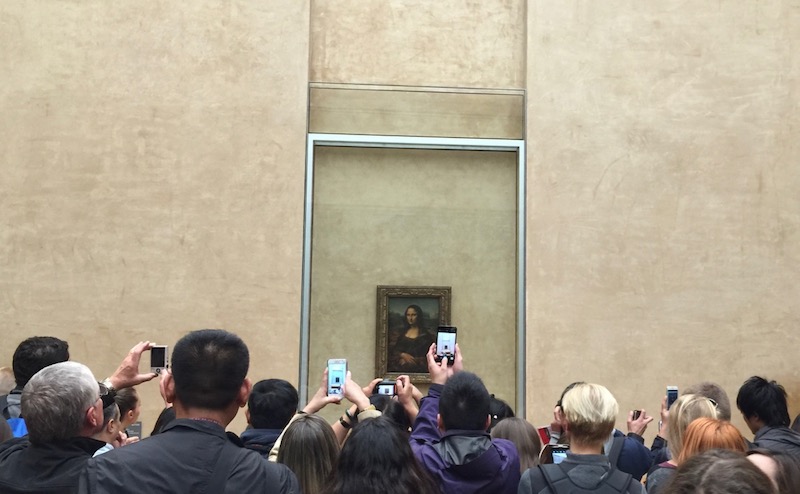
Are there any solutions to overtourism?
There’s no instant fix, but some of the pressure can be alleviated if everyone does their bit. Every group has a role to play.
What destinations are doing
They’re cracking down, that’s what, and imposing restrictions.
- Some, like Antarctica, Cinque Terre, Dubrovnik, the Galapagos, Bukchon and Machu Picchu, are regulating the number of tourists they allow in or the times they can visit.
- Others, like Santorini or Venice or even Juneau, Alaska, are putting a cap on cruise ships.
- In Rome and Milan, new local littering and loitering laws are being enacted.
- Islands in Thailand and the Philippines have been temporarily closed for rehabilitation.
- Barcelona won’t allow new hotels to be built downtown, and has added plenty of new local laws to discourage tourism (especially given the local street protests)
- Rwanda has limited permits to track gorillas; the Seychelles are banning large developments; restrictions are being placed on climbing Mt Everest in Nepal; Bhutan enforces a (high) daily minimum spend among visitors.
While destinations grapple with their individual problems, governments too are having to step in. With more money and power than tourist authorities, they can shift laws and policies more quickly.
What governments could do
- They could work together at all levels to develop tourism management plans that take a longer view.
- They could decide what kind of tourism they want. If they want tourism at any cost, then don’t blame the tourist for coming. But if they want some sort of preservation, then put in place the necessary limitations – whether cost, or time management or a cap on numbers – and perhaps over time these can be eased.
- They could provide potential visitors with more than just glossy promises of a destination: give us the real story so we can decide not only whether to visit but HOW to visit. I for one would respect a government that told me: “Please come. But we have problems. Here’s how you can make your stay pleasurable while respecting people who already live here.”
- They could tax tourism more (I’m not judging the value of these solutions, just laying them out for you).
- Change the marketing mindset away from the number of tourists to the type of activities they could enjoy.
- They could shift tourism to less congested areas.
- They could restrict not only the number of visitors but such things as the number of flights or automobile access.
And so on. Not all these solutions are viable, some are frankly discriminatory, and they won’t all work everywhere.
But unless authorities confront overtourism and begin finding solutions, some cherished destinations may soon no longer be ours to see. I don’t want Venice to close its gates, nor do I want to be banned from Barcelona.
What we, the travelers, can do
Our actions alone won’t halt overtourism, but they will help, while sending a clear message to residents and authorities that we understand, we care, and that we want to be part of the solution, not the problem.
We need to look at HOW, WHERE and WHEN we travel. Here are a few tips just to start the conversation.
- Avoid high season and travel in low or shoulder seasons in tourist hotspots. No, it’s not possible for everyone – some of us are teachers or otherwise have commitments that restrict our travel windows. But we can try. If we must travel in the high season, perhaps we can adopt some of the behaviors below…
- Indulge in UNDERtourism – visit offbeat destinations or nearby destinations that get far fewer tourists than they’d like (my other blog, Offbeat France, is dedicated to highlighting offbeat destinations in France). Try to uncover places not yet overrun, benefitting a new generation of locals in places that see far less tourism.
- Boycott cruises that visit places under threat, like Venice and Dubrovnik or mega-tours that whisk you from A to B at the speed of light.
- Don’t travel in big groups. Travel solo or independently.
- Contribute to the local economy by staying in bona fide home rentals or stay in a hotel (preferably a locally owned one).
- Engage with the local community when you can. Travel more deeply. During a week in Istanbul, I stayed in the suburb of Sariyer. I rode four or five different public transport systems to get into central Istanbul each morning – but I caught a glimpse of everyday life in a local fishing village on the Bosphorus – and felt incredibly welcome.
- Buy food at the local market and have a picnic. Or choose a restaurant locals frequent (the lack of a multilingual menu is a clue.) Book a meal at someone’s home.
- Avoid places that exploit or pollute: chances are they do far more damage than what we see.
- Give some thought to the attitude of entitlement some of us unconsciously wear like a fluorescent mantle, the one that gives us a so-called right to travel, even where we aren’t wanted.
- Stay near a major attraction and take public transport to visit. Stay in Girona and ride the train to Barcelona, for example. You may discover a new destination that steals your heart.
This will help far more than staying away, which could cost people jobs and local economies their income.
Tourism is not a benign act – it has consequences
As tourists we are often caught between the clashing interests of business (make more money), government (bring more visitors), residents (maintain quality of life) and our own desires (enjoy a holiday in a beautiful destination of our choice).
I can’t read into the future but here are a few of the possible scenarios if things go on as they are:
- Visitors might start staying away. For some destinations, this would be a godsend; for others, a catastrophe.
- Travel might have to become more organized because we have to plan around “allowed” dates and times.
- We could end up paying for entry, like Disneyland, to places like Venice.
- Off-season travel might increase, at least for those who can get away.
- Certain types of travel might be banned – tour groups, for example, or travel at the cheaper end of the spectrum.
- Travel costs could increase as destinations hike prices in an effort to keep people out. Only the wealthy would visit, making travel increasingly elitist.
- We could face antagonism at our destination or outright hostility (as happened in Barcelona).
It’s naive to think that travel revolves exclusively around our personal enjoyment: we pay, fly, run around or lie on the beach for a week or two and return home, all without a thought for what happens at every step of our journey. That lack of consciousness is a part of the problem.
I thoughtlessly stayed in a corporate Airbnb in Barcelona once – because I was lazy. I wanted to be near the “center of the action”. But for my next visit, I thought it through. I stayed in Girona and took the train in, discovering everything the smaller city had to offer me. I ate half my meals in Barcelona, and spent money on attractions there. I contributed to the local economy, but not to raising rents and pushing residents out.
This isn’t about not traveling. After all, I write about places and encourage people to travel, so you could easily say I’m part of the problem. But by highlighting safety issues for women, trying to be objective about a destination and encouraging everyone to travel as locally as possible, I’m trying to behave responsibly.
Thinking ahead is possibly the biggest contribution we can make to reducing overtourism. Thinking about where we stay, when we go, how we engage with locals…
Just imagine for a moment this was happening in your own backyard: busloads of tourists gawking at your house, leaning out to take pictures (bonus points if children or pets are playing outside), some even stepping over your lawn to take a selfie in your doorway, or taking pictures of you doing “quaint, local things” like weeding your garden or having a BBQ.
And hold that thought next time you travel.
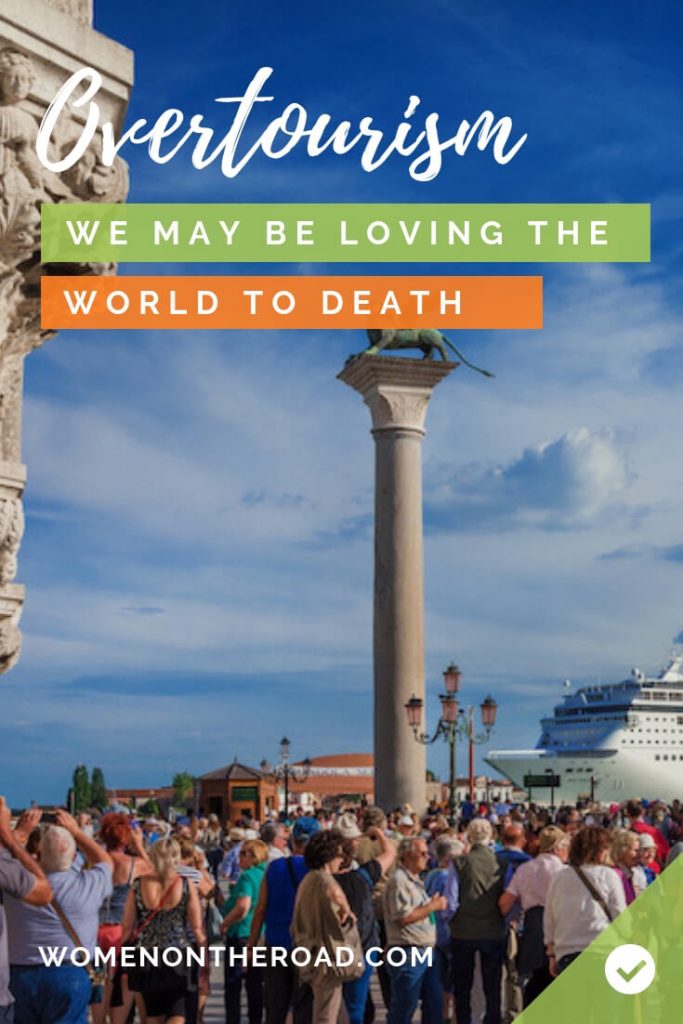

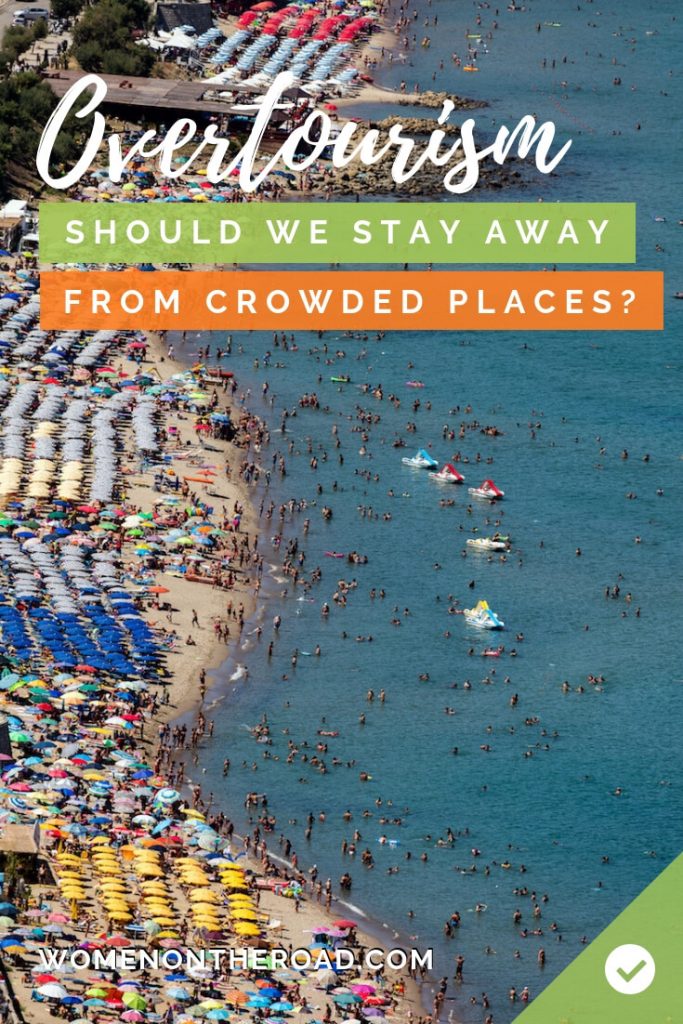
Travel Book Reviews – World 5 Jun 2024 12:06 AM (11 months ago)
By Suroor Alikhan
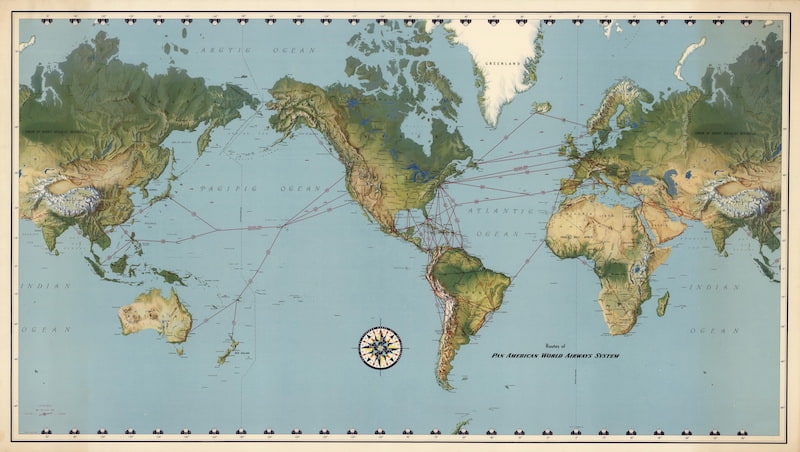
National Dish – Around the World in Search of Food, History, and the Meaning of Home
by Anya von Bremzen
“Why would someone like me set out to explore national food cultures?… Never have we been more cosmopolitan about what we eat—and yet never more essentialist, locavore, particularist. As the world becomes more liquid, we argue about culinary appropriation and cultural ownership, seeking anchor and comfort in the mantras of authenticity, terroir, heritage.”
What is the food that reminds you of home? Anya von Bremzen – Russian-born but living in the US since she was a child – sets out to discover the national dishes of France, Italy, Japan, Spain, Mexico, and Turkey, and ending her journey with borscht, the dish which she grew up with.
What makes a national dish? How does it become a symbol of the country? And what stories can it tell us about the country’s history? Von Bremzen unpacks the dishes, starting with Paris (pot-au-feu), Naples (pizza and pasta), Tokyo (ramen and rice), Sevilla (tapas), Oaxaca (mole and tortillas) and Istanbul (mezze).
The stories she tells are fascinating. Pizza was created in Naples in the 19th century, as a cheap and convenient food for the poor. It became so much a part of the city that a man opened a pizzeria in Rome to cater to home-sick Neapolitans. It eventually spread wider: Italian immigrants to the US claimed it as Italian (rather than Neapolitan), reimagined it and then exported it back to Italy, where it was celebrated as an icon of the country.
Ramen are a more recent invention. After the Second World War, American aid to Japan consisted of huge quantities of surplus wheat from the US. Between 1954 and 1964, the US gave Japan $445 million in food aid, much of which was wheat (pushed by lobbyists back in the States). The Japanese government needed to use it, and asked Taiwanese-born entrepreneur Momofuku Ando to create a wheat-based product. So Ando came up with quick-cooking noodles, and ramen was born. Ando says in his autobiography that he saved the Japanese from becoming hooked on white bread.
In Paris, the halal butcher she goes to for meat to make a pot-au-feu is appalled because she does not ask for the traditional cuts that go into the dish. She shows him the original 19th century recipe she is using, but neither the butcher nor his clients – mostly women in headscarfs – are impressed, and there is much eye-rolling. “And suddenly I had an unsettling feeling of being the ‘other’ in this shop full of immigrants, an uncivilized and unassimilated intruder, ignorant of France’s rules.”
Von Bremzen raises some interesting questions. Does food taste different when you imagine it embodies the spirit of a place? Does the name of a food make a difference? In other words, does a Turkish kebap taste the same as a Russian shashlik? Von Bremzen thinks not, because of the different associations and cultural memories. She also looks at the roles that immigration and politics play in food.
The final chapter sees her returning to her New York home and unpacking the meaning of borscht, a dish that originated in the Soviet Union, and one that Von Bremzen associated the “despotic difficult home we had left”. But now, after Russia’s invasion of Ukraine, the stew has become a political point of contention, with Ukraine claiming it as its national dish. “The tangled question of cultural ownership I’d been reflecting on for so long had landed on my own table with an intensity that suddenly felt viscerally, searingly personal.”
This book will make you look at food in a different way, with an awareness of the history behind the dishes that we eat regularly. I know and love the food she writes about, so going on this journey with von Bremzen has been rewarding and eye-opening. A word of warning: the book will also make you very hungry!

How to Holiday Alone Like a Boss
by Hannah Ireland
Hannah Ireland has been holidaying on her own for the last 15 years. In this book, she encourages others who are thinking about travelling on their own but are hesitating, whether because they feel unsafe, are worried about being in a strange place on their own, or just because being on your own is somehow perceived as being unfortunate.
“It seems to make people uncomfortable”, she says, “if you mention you’re holidaying on your own.”
But being on your own can be more fun: you can go at your own pace, do what you want to, and as she points out, you are unlikely to spend the holiday with someone who is sulking because you booked a return flight on the day of the World Cup final.
This slim volume offers practical advice to those venturing out on their own: how to plan your holiday, for example. How far do you want to go? What will you do in the evenings? How safe is it? And my personal favourite: is there a good patisserie near the hotel?
In the next section, Ireland writes about the holidays she has taken alone in the UK, Europe and North America (and one section on New Zealand). These are short pieces with photos, about her own experiences and suggestions on what to see or do. She obviously enjoys food, so there are some good tips here.
I liked the fact that she is game to try things without worrying what other people will think of her. Like being the only adult without a child to ride the mini-train in Devon. Some of the stories she tells are funny: on Mykonos, Greece, she has to back up against the wall to get around a pelican “the size of a small elephant”. In a helicopter ride over the Grand Canyon, someone asks her if she knew they had built a tunnel between France and the UK. “You try and look surprised.”
This is a slim book, easy to slip into your handbag or rucksack, and full of interesting information. My one gripe is that the largest section of the book—Ireland’s personal anecdotes about her holidays—are fairly randomly arranged. It would have been useful to either organize them by region or country, or at least have an index listing them. It would make it easier to find specific places.
This book is timely, given the fact that travelling alone is a rising trend. According to Booking.com, 14 per cent of pre-pandemic travellers were going solo; by mid-2021, this had risen to 23 per cent. So if you want to holiday alone and just need a bit of encouragement, then this book will help!

Tuk-Tuk to the Road – Two Girls, Three Wheels, 12,500 Miles
by Antonia Bolingbroke-Kent and Jo Huxter
On a trip to Bangkok, Jo Huxster fell in love with the tuk-tuk (the ubiquitous three-wheeler taxi) and resolved to drive one from Thailand to the UK.
She persuaded her friend Antonia Bolingbroke-Kent to join her. The journey took a lot of preparation: finding sponsors, getting into shape, learning to drive a bike (a tuk-tuk classifies as motorbike on the International Driving Licence), and researching the best routes.
For the tuk-tuk, they turned to Thai contact Anuwat Yuteeraprapa, who came from a family that has been building tuk-tuks for generations. Anuwat built them a customized model with a higher suspension clearance, a bigger fuel and tank, and more comfortable seats. Painted a bright pink, the newest member of the team was christened Ting Tong. And on 23 May 2006, the three of them set out on their adventure from Bangkok, heading for Brighton, 125,000 miles away.
This trip was important to Huxster and Bolingbroke-Kent, who were childhood friends: they were raising money for Mind, a charity for mental health. Huxster had suffered from severe mental illness, spending time in psychiatric institutions, and Bolingbroke-Kent used to get panic attacks which could be debilitating.
Their route took them through Laos, China, Kazakhstan, Russia, Ukraine, Poland, Czech Republic, Germany, Belgium, and France. Tuk Tuk to the Road collects the blogs they wrote while on the road.
Ting Tong attracts plenty of attention: people take selfies with her (Ting Tong is definitely a “she”). Driving through Laos on the main road linking Thailand and China, “gangs of children screeched in delight at the sight of the peculiar pink vision whizzing past”. Word of the women spreads and they are sometimes stopped at checkpoints in Russia just so that the guards can check out Ting Tong.
Getting permission to drive through China was complicated – foreigners are not allowed to drive. But eventually permission was granted on one condition: they would have to be accompanied by a guide at all times. They weren’t allowed to drive on the highway and had to take the back roads instead, which were often in bad shape. But there was a problem: they had to be out of China by 7 July, impossible at their current speed, and they could find no way of extending their visas. They would have to take their chances.
The journey is not hassle-free: Ting Tong has breakdowns, they have to contend with huge trucks and scarily steep roads – and the occasional drunk men.
Throughout their journey, complete strangers show them kindness: mechanics who fix Ting Tong’s problems without charging them, a Kazakh family who gives them fuel from their jerry can when they are running low, and people who invite them to their homes for a meal.
What is really poignant for me, reading this now, is the account of their journey through Ukraine and the beautiful cities they visited. Who would have imagined that less than two decades later, many of these cities would face so much devastation?
This book not only takes you on a real adventure but gives you a close and personal look at less well-known countries like Laos and Kazakhstan. I admire people like Huxster and Bolingbroke-Kent: people who refuse to be daunted by their own personal problems.

The Catch Me If You Can
by Jessica Nabongo
“I want to change where the world travels to and how the world sees travelers… I wanted to show a Black person travelling as a tourist, to share the stories of the seldom seen countries and people that I visited, to show the world in a way that we are not used to seeing it.”
Jessica Nabongo is a photographer, travel expert and major Instagram influencer. A first-generation American, born in Detroit to Ugandan parents, she has a deep connection with both countries and carries both passports (something handy on her travels).
She is the first Black woman to visit all 195 countries, a feat that ended in Seychelles in 2019. Some she has lived in, like Japan, Italy and Benin. Some she only touched—Palestine, Syria and Yemen—either because visas were impossible or there was an ongoing conflict. She used local travel agencies and talked to ordinary people. This is an account of 100 of those countries, with short chapters on each.
Nabongo is not easily deterred, not even when the US government placed a country on its “do not visit” list. She merely uses her Ugandan passport instead. On the whole, she steers clear of politics unless it is unavoidable. As she points out, politics does not always reflect the way people are.
In Cuba, a woman smoking on the street invites Nabongo to share her cigar; in Iran, her guide asks her home for a meal; and in Mali, when Nabongo is exhausted and almost tempted to give up, a group of men who hear her story encourage her to finish.
Nabongo also has an invaluable network in her Instagram followers: they meet up with her when she visits their country or put her in touch with people they know there.
Nabongo’s journeys are not always easy. She faces racism, especially at immigration. Sometimes, when she is the only Black person, she becomes an object of curiosity. Most of this she accepts this with good grace, happy to pose with people, but it does get to her when people are rude and treat her as an object.
There is a lot to like in this book: not just Nabongo’s open-mindedness and determination to stay positive in spite of some unpleasant experiences, but also the fact that the countries here include ones that never make it onto most people’s travel wish lists.
She writes about the resilience of people in Haiti and the beauty of the Bassin Bleu, a series of pools and waterfalls. In Afghanistan, she visits the stunning Blue Mosque in Mazar-e-Sharif, the only place she sees women. In Moroni, Comoros, she goes into the Medina, a labyrinth of narrow alleys, where local people are more than happy to help if you get lost.
The Catch Me If You Can is beautifully produced, with plenty of photographs (many from Nabongo’s Instagram account), with page borders that correspond to the region the country is in.
This book brings home the sheer diversity of the world we live in, and also the many things we share, wherever we are. Nabongo achieves her aims of changing the narrative and bringing to the fore voices and perspectives that have been overlooked. Because of that, this is an important book.

The Window Seat — Notes from a Life in Motion
by Aminatta Forna
“Here are four words you rarely hear these days: I love to fly.”
Travel has been an intrinsic part of Scottish-Sierra Leonean writer Aminatta Forna’s life. She spent part of her childhood in Sierra Leone but after her father was arrested and eventually killed by the regime, she moved with her Scottish mother to the UK. Her mother later remarried, and her New Zealander stepfather’s work with the United Nations took him to Iran, Nigeria and Zambia, places that Forna visited for her school holidays. So she grew up as a citizen of the world.
The Window Seat is a collection of pieces that are a mix of travel writing, memoir, and essays. She keeps coming back to the meaning of home and what it means for someone like her.
The first essay in the collection, from where the quote above is taken, is a love letter to flying. Forna had a Junior Jet Club logbook, given to children by BOAC (later British Airways) in which you could record your flights. This brought back memories because I had one too.
Curfews were a common occurrence in Forna’s life, whether in Sierra Leone, Nigeria, Zambia, or Iran. She writes about how people try and live a normal life in spite of them, for example, skirting army checkpoints to have a drink at their favourite bar or attending “curfew parties” where you would arrive early and leave before curfew, or arrive just before curfew and stay until dawn.
War is another factor that seeps into some of her essays. She writes about how, if we take long-haul flights regularly, at some point we fly over a war zone. “Consider the matter: people are killing and being killed and living in terror of being killed while, at a point precisely overhead, you are doing what? You are watching the drinks trolley edge down the aisle, handling the frustrations of plastic cutlery and those fiddly salt and pepper packets, selecting the next movie… Imagine a person looking up and seeing an aeroplane in the sky, the freedom the passing plane must surely represent. It must be like standing on a desert island, watching the ships pass by, without the possibility of being able to lift a hand and wave or to shout and be heard.”
War can become a reality so quickly. The war in ex-Yugoslavia spread fast because every man had a gun: it was a nation of hunters. In Sierra Leone, “if you saw a gang of men in the back of a Toyota Hilux carrying machetes, you’d think they were farmworkers… . A few years later, you’d be running for your life.”
This is a rich and varied collection. Forna writes about the Renaissance generation in Africa, the first generation of young African men and women who were sent to the West to study and came back to their countries with new ideas. Her father and Obama’s, as well as many leaders of African countries, were part of this generation.
There are also reminiscences about the people whom she knew or key moments in her life. In a moving piece called Santigi, Forna tells the story of a man who worked in her family’s home from his youth until his death. In Freetown, she meets a veterinarian who looks after the stray dogs in the city. She travels with her mother and brother to Shetland, where she spent part of her childhood, the last trip her mother could make.
This eclectic collection contains so much more – including an examination of insomnia, which Forna suffers from; how wildlife thrives in cities; and what it means to navigate the world as a woman, particularly a woman of colour. The pieces are thoughtful and beautifully written. I know there are ones I will return to over the years.

Shalimar – A Story of Place and Migration
by Davina Quinlivan
“Shalimar is the bridge between my father’s world and my perception of it, not a real place but one of our own making, filled with his things, his stories, but also mine and my stories which are free for me to pass on as I go on without him.”
Davina Quinlivan was born and grew up in the UK, but her ancestry is Euro-Asian: Burmese, Indian, Irish, French, German and Scottish. In Shalimar, Quinlivan overlays her own experience—moving homes in the UK, marrying, raising children—with the story of her family. The result is a lyrical mix of memoir, nature and travel writing.
Quinlivan’s father is central to the book. He was born in what was then Burma; his father was Irish and his mother was half-German and half-Shan, an ethnic minority living on the borders of Myanmar, Laos, Thailand and China. Quinlivan’s father spent part of his childhood under house arrest during World War II, something that affected him for the rest of his life. As Quinlivan writes, “The trauma of his internment crept into daily life, it was always there, like an ivy twisting its way through an evergreen hedge.” It resulted in an unacknowledged agoraphobia.
Quinlivan also has Shan ancestry on her mother’s side. Shan women have been historically enslaved, and in the recent past, were trafficked out of Myanmar. She writes about the Shan women in her family, who “married European Colonials and disappeared into the invisible pages of a history book I cannot open”. As she gets older, she starts to listen to the ghosts of her Shan ancestors and sees traces of them in her children’s features.
Quinlivan also migrates, although within the UK. She leaves Hillingdon, an industrial county where she has spent most of her life, to move to rural England: Surrey, Berkshire, Hampshire and Devon. One of the places she lives in is Peaslake, known in 1912 as a meeting place for suffragettes.
She writes beautifully about nature, the oaks and birches surrounding her, the “cathedral of trees” where she finds peace and a way to deal with the grief of her father’s illness and his death. The woods seem to hold something other-worldly, an old kind of magic.
She interweaves these accounts with stories about her family: her father stealing forbidden mangoes in the Buddhist monastery in Burma where he was sent as a child; her German-Shan grandmother kissing the Blarney Stone; and, in England, her mother, aunts and grandmother sitting around a table speaking in a mix of Punjabi, English and Burmese. She remembers the food that her aunt, her father’s sister, would cook for them in her home in Ealing, the home that was an echo of the one she had in Shalimar, India.
I loved the way Quinlivan moves fluidly between the two worlds, and pulls them into a single, rich narrative. This is a story about memory and loss, about leaving and finding home.

Review – Following Nellie Bly: Her Record-Breaking Race Around the World
by Rosemary J. Brown
“I want to go around [the world] in eighty days or less. I think I can beat Phileas Fogg’s record. May I try it?”
The idea came from Nellie Bly, a journalist with The New York World, inspired by the Jules Verne book, Around the World in 80 Days. It was 1888, a time when women did not travel alone, never mind try to circumnavigate the globe. It was impossible: she would need a protector, be loaded down with lots of luggage, and be hampered by the fact that she could only speak English.
But Bly eventually won the day. She was summoned to her editor’s office almost exactly a year later and asked to leave in two days. To prove the naysayers wrong, she travelled on her own, carrying a small Gladstone bag (known as a gripsack) with a single dress, which lasted her entire trip. And she did it in 72 days.
Rosemary J. Brown is also a journalist and a Fellow of the Royal Geographic Society. She wants to “put women explorers back ‘on the map’”, to “revive a role model, an invincible woman who defied the status quo, walked on the wild side and explored the world without fear.” In 2014, 125 years after Bly’s record-breaking trip, she decides to follow in Bly’s footsteps. But the ocean liners that Bly took no longer exist, so Brown has to fly.
Bly’s journey would take her to Colombo, Sri Lanka, with her ship stopping at Port Said in Egypt and Aden in Yemen. She continued to Singapore (where she bought a monkey, McGinty, who caused no end of trouble) and Hong Kong, where she was stuck for a few days. Not one to sit still, she sailed to Canton (present-day Guangzhou) in China. The US government had blocked the entry of the Chinese with the 1872 Chinese Exclusion Act. “I knew that we were trying to keep the Chinese out of America so I decided to see all of them while in their land”, wrote Bly.
She then went on to Tokyo and Yokohama in Japan, from where she took a ship to San Francisco. Brown follows her trajectory, except that she goes straight to Colombo, because of the war in Yemen.
Brown is like a detective, looking for traces of Bly wherever she goes. Things have changed a great deal in over a century, but Brown makes connections between Bly’s world and the present: one of the hotels is, incredibly, still around (these are good hotels – no rundown hostels for Bly!), as are some of the temples and other sights.
Brown, like Bly, is an intrepid traveller. In Hong Kong, she braved the fierce winds and lashing rain of typhoon Kalmaegi to catch the morning train to Guangzhou. She needed a taxi but the typhoon meant that the normally busy streets were deserted. Then, in the distance, a solitary taxi appeared, and Brown made the train. It was as if Bly was watching over her, holding out a helping hand.
I enjoyed seeing places through the eyes of the two women, so far apart in time but sharing a curiosity about the world. I loved learning about what travel was like in the late 1800s, and also about Bly’s work as a journalist, a woman in a man’s world. Brown carries a copy of Bly’s book and quotes from it frequently, so you get a real sense of the woman. I had not heard of Nellie Bly until I read this book. She was a fascinating woman and should be better known. This book goes a long way towards filling that gap.

Review - The Border: A Journey around Russia
by Erika Fatland (Translated from Norwegian by Kari Dickson)
Ed. note: This book has been placed in the “World” section because Russia is both Europe and Asia, as are its borders.
The full subtitle of this book is “A journey around Russia: through North Korea, China, Mongolia, Kazakhstan, Azerbaijan, Georgia, Ukraine, Belarus, Lithuania, Poland, Latvia, Estonia, Finland, Norway and the Northeast Passage”, which gives you an idea of its scope.
Erika Fatland also visits Nagorno-Karabakh, gets close to South Ossetia, and takes a tour of Chernobyl. The Russian border is 60,932 kilometers long, longer than the circumference of the earth, which is 40,075 kilometers. Fatland decides to visit the countries along this border, starting in Pyongyang in North Korea, working her way east and north to Grense Jakobselv in Norway, her native country. Then she goes back to Anadyr in northeastern Russia and boards an old Soviet research vessel to cover the 5,650 nautical miles along Russia’s northern coast to Murmansk.
What she really wants to know is what it is like to live next to the largest country in the world, but she finds there is no single answer: “There are at least fourteen, as many answers as there are neighboring countries. Though in truth there must be millions of answers, one for each person who lives along the border, each with their own unique history.”
Added to the author’s adventures is a hefty dose of history, providing a sense of life today right next to Russia as well as how the borderlands have been shaped by their huge neighbor in the past. Of the fourteen countries she travels through, eight were once part of the Soviet Union.
Fatland speaks Russian, French, English and Norwegian, which makes conversation easier, and as is often the case in a travel book, the people make the book.
In Pyongyang, she is accompanied by guides (always in pairs) who dictate not only the itinerary, but also what can be photographed and what is out of bounds. Sometimes, a curious guide plies her with questions when the other guide is out of earshot.
She visits Heihe, a small provincial town in China on the banks of the Amur River, frequented by Russian tourists who flock over the border to buy cheap Chinese goods. In Mongolia, she meets Tserendavaa, a well-known throat singer, a traditional form of Mongolian singing, who sings for her. In Baku, Azerbaijan, she meets Selcen, a young woman who remembers the war in Nagorno-Karabakh. She fled the war with her parents as a child and moved to Baku.
In Kazakhstan, Fatland makes the complicated trip to Baikonur, hoping to see the Soviet space launch facility. But a mistake in her arrival date meant she couldn’t visit the facility. To distract her, her guide Marat takes her for endless meals, and finally to a bowling alley.
Fatland seeks out people who, like Selcen, lived through historical events: Andrei, a 79-year-old Latvian, who was one of the 42,000 Latvians who were deported to Siberia in the 1940s; and Maia in Belarus, one of the few surviving Jews in a country that counted nearly one million before the Second World War.
It is hard to do justice to a book that is so rich. Fatland hears many stories of displacement and heartbreak: ordinary people suffering for decisions taken by those in power. For me, the book was an eye-opener. Although I do know something about the history of the region, Fatland brings it to life and tells some unforgettable stories, giving a voice to people we have not heard from before.

Review – Food on the Move: Dining on the Legendary Railway Journeys of the World
Edited by Sharon Hudgins
There is something magical about sitting on a train, eating well while staring out of the window at a constantly changing vista. So when I came across this book that combines two of my favorite things—trains and food—I couldn’t resist it.
This collection of essays focuses on nine iconic railways: The Flying Scotsman, the Orient Express, the Trans-Siberian Railway, Canada’s Trans-Pacific Railway, the Santa Fe Super Chief in the USA, Japan’s Bullet Train, Darjeeling’s Toy Train in India, Australia’s Ghan, and South Africa’s Blue Train.
Sharon Hudgins calls herself a “daughter of the railroads”: her father was a fireman on the Missouri-Kansas-Texas railroad, shoveling coal on one of the last steam engines on the line and her grandfather was a train conductor. The other authors here include a journalist, writer, academics, and an expert on the food culture of Scotland, all with special connections to trains and food.
Each chapter focuses on one of the trains, taking us back in time to when it first started to run. Many of them started in the mid or late 1800s (such as the Flying Scotsman, Orient Express, and the Canadian and Indian Railways). Railways brought remote places within reach of the ordinary person. For example, the construction of the Canadian railways resulted in the first of the country’s National Parks being established, the Banff Springs in the Rockies: “Since we can’t export the scenery, we shall have to import the tourists”, said the company’s president in 1886.
The early trains did not have dining cars but relied on passengers bringing their own food or buying food and drink from the stations. Eventually, the train companies realized that being able to serve meals and snacks on the train would make much more sense.
Once the dining cars were established, the food on the train was often of a high standard, and eating in the train’s dining car became a highlight of the trip. The Orient Express, which ran from London to Istanbul, prided itself on the fact that its meals would reflect the country it was going through. The breakfast menu in 1936 on the Santa Fe Super Chief, which ran between Chicago and Los Angeles, included “eight choices of steak and chops…, three kinds of potato dishes, ham and bacon, eggs cooked six different ways”, not to mention fruit, cereal, bread, tea, coffee, hot chocolate, and malted milk.
But not all the railways had dining cars. The Bullet Train in Japan, for example, generated its own food culture. Ekiben, boxes containing “labor-intensive and high-quality foods”, usually local specialties, were—and still are—sold at the stations along the line. The boxes are now “portable destinations in themselves, public cultural icons”, and ekiben festivals are held in department stores all over the country.
Darjeeling’s Toy Train also relied on passengers being able to buy food at the railway stations on the way, although you could order breakfast the night before (I remember the delicious omelets and hot tea on Indian trains). But now the Toy Train has a dining car that seats 12 and serves a four-course dinner for those who can afford it.
It was not just the mouth-watering accounts of the food that made me dream, but the descriptions of the trips themselves: the changing landscapes you can see from the Ghan that links Darwin to Adelaide, and on the Trans-Siberian Railway from Moscow to Vladivostok; the glamour of traveling on the Orient Express; and the trip from Pretoria to Johannesburg on the Blue Train that goes past the Kimberley diamond mines.
Some of these trains do not run anymore or operate as a tourist attraction rather than a regular train. But thanks to this book, you can still travel on them virtually. It is not just the illustrations peppered through the book that takes you on the voyage: you can replicate some of the dishes from the trains’ menus with the recipes provided. At a time when we cannot travel much, this is a wonderful way to discover the world.

Review – Imagine Wanting Only This
by Kristen Radtke
This is not a conventional travel book: it’s a graphic book that combines memoir and travel.
Kristen Radtke is very close to her uncle, Dan, whom she adores. But he has a genetic heart condition, which eventually kills him.
Devastated by Dan’s death, Radtke finds herself losing interest in beautiful places.
She spends time in Italy but is miserable there. Instead, she is drawn towards abandoned towns, places that once hummed with life but have now fallen to ruin.
We follow on her journeys seeking out these ghost towns.
Gary, Indiana was once known as the city of the century, the center of the trade-in ore, which was shipped from Minnesota on the Great Lakes railroad. But by the time Radtke visits it, the town has been abandoned. As her then-boyfriend says, “It’s like someone pulled a fire alarm and no one ever came back”. They find a broken-down cathedral where “[i]vy overtook the corroding walls…covering the slated stone with spindles of the earthy web. The tarnished pedals of a shattered organ lay in a corner, its broken keys like piles of pulled teeth.”
In the ruins, they find a bag containing hundreds of photographs, which Radtke takes with her. They turn out to be the work of a young man named Seth Thomas, who was hit by a freight train and killed in 2006. They later discover that the photographs had been placed in the cathedral by his friends as a memorial. Radtke means to take them back but never does.
Radtke travels almost compulsively. Any place is good, as long as it is new. But even in the most beautiful of settings, she seeks out deserted places.
She goes to the island of Corregidor in the Philippines, a former military base near Manila that developers had tried to turn into a resort. “Guests would have swung in hammocks above fields that had witnessed massacres twenty years before.” The resort never happened, and the island is now a mix of half-constructed buildings and the remains of the military base.
Because of her closeness to death (she has heart disease herself and has also lost other family members to it), Radtke is fascinated with the traces we leave behind. She also writes about her attempts to come to terms with her grief and her acceptance and understanding of the disease.
The book is beautifully drawn in black and white. It does not make for cheerful reading but it is completely original and an important contribution to the travel genre.

Review – Loitering with Intent: Diary of a Happy Traveller
By Ritu Menon
Ritu Menon does not like to travel alone for pleasure, as she announces in the first line of this book. She likes to explore places with her friends. But we’ll let her get away with that.
Loitering with Intent is an account of these trips, most for pleasure but a few for work: she is a publisher and attends literary festivals.
Her travels take her to Myanmar, Cambodia, Indonesia, Egypt, Turkey, Lebanon, Syria, Palestine, Italy, France, and the UK, some of which faced political change during her travels.
She attends PalFest in 2010, the Palestinian Festival of Literature, set up by the Egyptian writer Ahdaf Soueif to “expose international writers to the situation in Palestine, and to give Palestinians an opportunity to listen to them”. Because movement for Palestinians between cities is difficult, the festival travels from city to city.
She visits Syria before the war, a radically different place from what we see on the news now. She finds communities living together peacefully: Shia, Sunni, Syrian Christians, Greek Orthodox, and Kurds—at least that’s how it seems. She remarks, “Who knows what prejudices surface when tensions arise”.
She visits Egypt in 2011, after the Tahrir Square demonstrations but before Abdul Fattah al-Sisi’s coup. She finds a country in turmoil: the military had shot peaceful demonstrators and people feared they were setting the scene for a postponement of upcoming elections. She visits the sights but also talks to protestors who want the dissolution of the powerful Supreme Council of Armed Forces.
In Myanmar, she is enchanted by an ungilded and unadorned statue of Buddha in one of the many abandoned temples in Old Bagan. Menon finds it easy to imagine herself in the 12th or 13th century when most of the temples were built. “As far as the eye can see, up to the horizon, in practically every part of Old Bagan…they rise up in veneration and…a majesty all their own, whether or not any images remain in their sanctum sanctorum.” Yet in Yangon, old buildings were being torn down to make place for the new.
In Turkey, Menon is fascinated by the underground cities of Cappadocia, 20 meters deep in which you can live for two months if you are supplied with air, water, food, and light.
Unfortunately, a few of the chapters feel a bit superficial. I felt at times that she was regaling dinner guests with travel stories. This is a shame because when she hits her stride, her observations—especially about the people of a country—are interesting. And she writes about the food she eats, something I always welcome! There are some good tips about where to eat and places to visit. But what I really enjoyed were the snapshots of countries at a particular time in their history.

Review – Elsewhere: One Woman, One Rucksack, One Lifetime of Travel
by Rosita Bolan
Rosita Bolan has a bad case of fernweh, an ache for distant places, a wanderlust which has her leaving her native Ireland to discover the world. “My friend Róisín once asked me why I loved to travel so much. ‘It’s about being elsewhere,’ I found myself saying. It has always been about being elsewhere.”
She begins her book – which covers her travels to a number of countries – by saying she read the entire 13th edition of the Chambers Dictionary, marking obscure words she had never heard of (hence fernweh). As someone who loves words, this got my attention right away. She scatters these words through the book as chapter headings, and I will follow her example by giving every country the word she picked for it.
In Australia (eleutheromania, an intense desire for freedom), she ends up working in Crocodylus, a tiny resort in the middle of a rainforest. Among the guests are a team of footballers, who had obviously been told they were going to a beach resort but were taken to the middle of nowhere. But things brighten up a boar hunt is organized for them.
In England (wunderkramer, a cabinet of curiosities), she goes to pick up a bookshelf from an elderly couple, who tell her they sell things they don’t need so that they can meet people.
In Pakistan (brame, fierce long, passion), she rides a bus up a narrow mountain road, a scary situation made worse by the road being blocked by falling debris. Eventually, a space the width of a wheelbarrow is cleared for the bus to pass. “Everyone fell silent. I have never been on an Asian bus where everyone suddenly stopped talking; in itself, a deeply unsettling sign.” The driver barely manages to get the bus through.
She sails to Antarctica (quiddity, the essence of a thing), which “had become a repository of dreams for all those explorers; a place that nobody owns and everyone can inhabit in their imagination”. Along the way, she and some fellow passengers get on an inflatable boat to get closer to the ice. But the water freezes around them and the boat feels fragile, vulnerable to puncturing by jagged pieces of ice. They are finally rescued four harrowing hours later.
Looking back, she says “I can recall the sensation of life briefly lived in another dimension, a parallel world of unearthly beauty, in time out of time. I recall staring entranced at the blue ice; being colder than I had ever been before; and thrilling freedom of dislocation and freedom, of being so far away from everything and everywhere.”
She takes no photographs but collects “paper ephemera”: bus passes, tickets, receipts, postcards, and so on. These are used on the cover design, and I enjoyed going back to the cover after finishing a chapter to identify the mementos from that country.
Bolan not only takes us to the places she went to physically, but we also share her emotional journeys of love and loss. This is a book worth reading, and I am looking forward to reading more from her.
Find out more on Amazon

Review – The Shooting Star: A Girl, Her Backpack and the World
by Shivya Nath
The Shooting Star starts with Shivya Nath deep in the Amazon rainforest (around the border between Ecuador and Peru), taking part in a shamanic cleansing ritual that involves drinking ayahuasca, an Amazonian plant that is also a potent hallucinogen. She not only survives the experience but cleanses her negative energies in the process.
This experience is a long way off from Nath’s protected childhood in Dehradun, a small town in northern India. She goes to Singapore to study, following in her brother’s footsteps (the reason she was allowed to go), and eventually gets a job at the Singapore Tourist Office. But something doesn’t feel right. So she gives up a steady job with good pay to go traveling, much to her family’s horror. And to make it worse, she not only travels on her own but goes far away.
This book is not just about travel, it is about a journey—a journey of self-understanding, a search for solitude, and a need to conquer fear. Looking for a way to disconnect herself from the busy world around her, Nath travels to remote indigenous communities in Latin America and India and hikes the mountains of Ethiopia.
In Guatemala, she stays with a Mayan Itza family while she learns Spanish. The Mayan Itzas choose to live in the forest near Lake Peten Itza, relying on the rainforest for food, herbs, and medicines. Nath learns that the Mayan Itzas had been forbidden from speaking their own language or wearing their traditional dress on pain of beheading, and in a village of 2800, only 34 people spoke Itza.
In the Simien National Park in Ethiopia, she slips away from her guides to walk along a narrow ridge with a stunning green valley on one side and a sheer drop on the other. “A feeling of exhilaration washed over me when I finally reached the edge, for there I stood, far from everyone and everything I knew, a spectacular vista of stark volcanic peaks before me.”
In Rajasthan, India, she goes out into the desert with the son of a visionary conservationist and watches a meteor shower in the night sky; in Mauritius, she strikes up a friendship with a fisherman; in Ladakh, she makes friends with very young nuns in a Buddhist nunnery; and in Costa Rica, she stays with an indigenous Bribri family of cacao farmers, who welcome her with delicious, dark, bitter chocolate, drunk without milk or sugar.
She is frequently asked why she travels alone (a question a man would not be asked). As a girl, she “was afraid to break rules or…venture out beyond the imaginary boundaries of right and wrong and success and failure defined by someone else. … I desperately wanted to be a different me—courageous and unafraid.” She also wanted to prove that the world wasn’t the horrible place it is made out be, the fear that “compels people to stay at home—trapped in a shrinking comfort zone—as it had once compelled me. I had much to unlearn for the sake of the freedom I chased, the victimhood I despised, and my mission to build unlikely friendships.” And with her travels and this book, that is exactly what she does.
Find out more on Amazon

Review: Black Woman Walking: A Different Experience of World Travel
by Maureen Stone
Black Woman Walking is a wide-ranging book—Maureen Stone is not just a hiker but also a sociologist. She travels widely and walks everywhere she possibly can, in Africa, the Americas, Asia, Australia, and Europe. She is not just interested in a place from a visitor’s point of view but in the social issues that shape the culture. Her focus is on people, who provide insights into the country.
Stone was born and grew up in Barbados and her first time abroad was on a scholarship to Calcutta (now Kolkota), India. That experience shaped her—the racism she encountered toughened her up. She also made good friends and also met her husband, Peter, an Englishman. Their love of walking brought them together.
The structure of the book isn’t conventional. The sections of the include “Letters to my sisters”, where she writes unposted letters to the women she has met over the years—Chinese, Yugoslav, Indian, Caribbean, sometimes saying things she did not say and sometimes talking about their shared experiences. This is followed by “Walking and talking with my brothers” about her meetings with men, the first of which, appropriately enough, is a meeting with her estranged brother.
Stone’s defining quality is an interest in people and an ability to see below the surface. In Bhutan, she meets a monk who tells her about the country’s marriage customs. Later, she makes a point about authenticity. It didn’t matter how truthful his narrative was, what mattered was “that I had been allowed to share in a vision of his society, and that for a few brief moments I felt myself to be part of that world”.
There is much to draw from in this book. In Trinidad, on the spur of the moment, she joins a group of students heading up El Tucuche mountain to look for little golden frogs. They don’t find the frogs and on the way down, Stone almost falls down the mountainside: “I realized that robot mode wasn’t quite the thing for this occasion”.
On a train in Canada, she starts talking to a woman only because their sons play together. The two women couldn’t be more different: a white, deeply religious housewife and a black, atheist academic. But the two have remained friends, even after the boys lost touch.
In Tobago, she and Peter sail to Paradise Island with a local fisherman to see the bird of paradise. The fisherman, realizing the couple was concerned about the lack of life jackets and an anchor (he forgot to bring it), thrust fishing rods into their hands. Soon they were so busy catching fish, they had no time to think about drowning!
This book is rich: Stone not only writes about interesting encounters with people but also about social issues like racism and child abuse, the sociology of hiking, friendships between women, the history of travel writing, and how the voices of women, especially black women, have been marginalized. This book should help change that.
Click here to buy on Amazon (make sure you buy a used copy – the new ones seem to be mispriced!)

Review – The Travel Gods Must Be Crazy: Wacky Encounters in Exotic Lands
by Sudha Mahalingam
“How did I turn into that unwonted specimen—a middle-aged, middle-class mother of two from a conservative…background traveling solo, long before solo travel became fashionable among Indian women?”
Sudha Mahalingam loves to travel but her husband does not. So she takes off on her own or with unwitting friends. (Travelling with Mahalingam does seem to portend the end of the friendships, though.)
In a way she is an inspiration to those of us who are older and hesitant to take off on our own—she is quite fearless, to the extent that she believes in minimal planning. The result is that nothing ever goes smoothly—hence the refusal of friends to ever travel with her again. But, on the other hand, her experiences make for some good stories. Her travel is complicated by her limited budget and that she is vegetarian, which proves a challenge in China and parts of the ex-Soviet Union.
I have to say her lack of planning drove me nuts! She often ends up in substandard accommodation but her limited budget is not always at fault—she leaves everything for the last minute and has to make do with whatever she can find.
Mahalingam walks straight into situations, often blissfully unaware of what she is getting herself into. In conflict-ridden Kashmir, she drags her driver off to explore an area and only realizes later that she could have been got them both into danger. No wonder he was furious with her! There are some funny moments like the time she jumped a wall, or as she puts it, climbed it like a lizard, in Fez, Morocco, to reach a hotel lobby (it did seem a bit far-fetched but it was funny).
Among the adventures are some nice descriptions of the things she sees: the old part of Yazd, a desert town in Iran with its “labyrinthine streets” and “adobe houses whose earthy hues are relieved every now and then by exquisite turquoise tile panels and ornamental doorways”; the Dome of the Rock in Israel; and the small pile of semi-precious stones shown to her by Tamils in Moreh, a town on the Indian-Myanmar border.
Although I enjoyed the tales, I was also a little exasperated with her naivety, which can be forgiven in a newbie but she is a seasoned traveler. Also, it would have helped if the chapters were in some sort of geographical order—or at least clustered together by region. It is a little disconcerting to travel the world and suddenly end up back in India before taking off again to other countries. But she is nothing if not brave, and the last chapter has her skydiving when she is past 60.
The title of the book seems a little ungrateful. The travel gods are not crazy—they have obviously been working overtime to keep Mahalingam safe! So she should be grateful to them and make sure they keep up the good work.

Review – Zaatar Days, Henna Nights: Adventures, Dreams, and Destinations Across the Middle East
by Maliha Masood
“Listen, are you breathing just a little, and calling it a life?” This quote from a poem by Mary Oliver obviously touched a chord with Maliha Masood, since she used it at the beginning of her book.
Fed up with an uninspiring job in the dot.com industry, she decides to travel to bring some color into her monochrome life.
Originally from Pakistan, Masood moved with her family to the US when she was 12. She is a mix of the two cultures and sometimes feels caught between them, and thinks that the journey might help her understand herself better.
She starts with Europe but then focuses on the Middle East. Her trip took place over a year and a half from 2000 to 2001, ending a little before the 2001 attacks. The countries she visits, especially Syria, were very different places then, something that adds poignancy to her account.
Masood believes in understanding a place, so she lives in each city for a while—weeks or months—and gets to know local people. She starts with Egypt, then goes to Jordan, Syria, and Turkey, stopping briefly in Lebanon.
Masood steps outside her comfort zone, learning to trust strangers, making this a journey in more ways than travel. The strategy works, apart from some minor mishaps, including her brief kidnapping by a man who wants her as his second wife (she escapes by jumping out of a window).
She makes friends everywhere. In Cairo, she meets Mohammed, who invites her to his family home for iftar, the meal that breaks the fast during Ramadan. She spends time with Bedouins in Jordan and is enchanted by the desert, “a simple space that stripped the bulkiness of life, if only for a moment”.
These are the encounters that enrich her experience. “My friends were cultural windows to another world that was no longer abstract, that was an intricate tapestry whose textures and colors I was getting to…see up close.” When she returns home, it is a stronger, wiser woman who is more at peace with her multiple identities.
What I found interesting was that Masood, an outsider to the region—from South Asia rather than the Middle East—provides a different perspective. She takes chances that she would not have taken in the West, and finds that people are welcoming, open and curious about her life.
But what is most important is that Masood reveals the richness and diversity that is hidden behind the media’s coverage of the region as a place of conflict, closed minds, and fanatically religious people. We need to be reminded, especially now, that we are not that different from each other.
Click here for more information or to buy on Amazon

Review – Around the World in 80 Trains: A 45,000 Mile Adventure
by Monisha Rajesh
“Trains are rolling libraries of information, and all it takes is to reach out to passengers to bind together their tales.”
Monisha Rajesh loves trains (in fact she wrote a similar book about riding trains in India). She quits her dream job in London, packs her bags—and her fiancé—rents out her apartment, and circumnavigates the globe in 80 trains.
Her travels through Europe are fairly quickly dealt with in the book, which was a little frustrating. But as the journey progresses, Rajesh slows down and I started to get a sense of the places she visits.
It is quite a trajectory. After Europe, it’s on to Russia, then China, Mongolia, Viet Nam, Thailand, Malaysia, Singapore, and Japan (even to Cambodia, which does not have a railway anymore). A flight to Vancouver, across Canada, and then around the United States. She then loops back to Asia: to North Korea, Tibet, and Kazakhstan.
Her path takes her through a range of political systems, landscapes, and cultures. But Rajesh thrives on the sense of community created on long train journeys, and the way they break down barriers between strangers: “the passengers who would always tell their story to strangers, offer advice, share their food, and give up their seats”. And how trains can take you into the heart of a country, where you can see how people live.
Rajesh’s book is full of little encounters: the Tibetan nun who exchanges WhatsApp contacts with her, the six-year-old on Amtrack, who invites them to share her family’s meal, the two Aleksandrs on Russian trains, one of whom thinks she is a spy, to the amusement of the other one.
I loved the way she gave me a glimpse into places I don’t know if I will ever visit. Here is her description of the North Korean countryside as the train leaves Pyongyang: “The North Korea of tanks, missiles and the Kims was already a world away: oxen ploughed the fields; clusters of cottages had roofs of red chilies drying in the sun; and beautiful children squatted in the yard sifting piles of corn. Their parents paused their work and watched stony-faced as we swept by. Buffalos huffed and bowed, drawing wooden carts piled with people, and cyclists stopped to inspect the train as we slowed into a tiny station.” Although is a lot that is still hidden to tourists, her description of North Korea brings out some of the nuances that we do not get in the media.
There is a growing movement towards slow travel, towards taking the time to see and know and talk to people.

Review – Flâneuse: Women Walk the City in Paris, New York, Tokyo, Venice and London
by Lauren Elkin
Flâneur is a French word that means “one who wanders aimlessly”. It always refers to a man with time and money, who walks the streets of a city. Elkin appropriates the concept by feminizing the noun. And she is not the only flâneuse: there have been many before her, some of whom are in this book.
Elkin grew up in the suburbs of New York where she needed a car to go anywhere. When she moved to New York City, it was liberating to be able to walk everywhere. Walking for Elkin becomes the only way of knowing a city. Being a flâneuse means having time to notice what the French writer Georges Perec calls the infraordinary: “What happens when nothing is happening”. Like sitting at a café and watching life go by.
In each chapter, Elkin introduces us to another flâneuse: the writer Virginia Woolf in London; the artist Sophie Calle in Venice; and in Paris, the writer Jean Rhys, the writer and socialist George Sand and film-maker Agnes Varda. There is also the photographer and writer from New York, Martha Gellhorn, who travelled widely, including to Spain during the Civil War. Tokyo gets Charlotte, a fictional character from Sophia Coppola’s film, Lost in Translation. But more about that later.
Paris is the center of this book. Elkin goes to the city to study, falls in love with it and stays. She talks about what it means to be an immigrant, and how you are always caught between where you live and where you are from (something I completely identify with).
Writing about her own experience interspersed with those of a woman from another time provides a multi-faceted glimpse of the cities. For all the women, walking was liberation and in the cases of Woolf and Sand, a defiance of convention. Woolf and Sand moved to the city from the country, finding freedom on the city streets. Sand started dressing like a man because she found women’s clothes impractical, and she attracted much less notice.
I found the chapter on Tokyo disappointing. Elkin moves there because her boyfriend gets a job. She hates it—she can’t walk anywhere and has trouble adjusting to the culture. The other woman here is Charlotte—disconnected, lost. Elkin does end the chapter by saying she grew to love the city and would want to go back, but does not really tell us why.
This is not a conventional travel book, and parts of it are a bit slow, but I loved the fact that Elkin appropriated the term flâneur for women. I think I will become a bit of a flâneuse myself!

Review – Rediscovering Travel: A Guide for the Globally Curious
by Seth Kugel
This is my first review for Women on the Road that is neither written by a woman nor about one. But I thought this was worth doing because Seth Kugel takes us back to the thrill of discovery, which we seem to have lost in this time of information overload.
Kugel retreats from our hurried, always a switched-on way of functioning, where we consult online resources for the perfect restaurant before we go to a city and where our itinerary is planned down to the last detail.
His journeys tend much more towards serendipity—he takes chances by going to places that are off the tourist map (sometimes for a good reason). This makes his trips truly voyages of discovery as he stumbles across the unexpected. On a whim, he gets off the train at a Hungarian town called Mezóberény. Walking in town, he finds a distillery where two of the workers are more than happy to give him a guided tour.
Kugel’s emphasis is all about slowing down and taking the time to get to know a place through its people. Researching a destination before getting there is good, up to a point, he says, but leave time for wandering aimlessly, for going somewhere not mentioned on Tripadvisor.
And talk to people: find an excuse to get into a conversation. He practices what he preaches, even though he isn’t a natural extrovert. Stopping in a village in Turkey to take photographs, he gets into conversation (mostly in sign language) with one of the villagers, who invites him to his home for a meal and to meet his family. An encounter like this is precious because it is spontaneous and not set up by an agency beforehand. And these are the things that you will remember.
One of the chapters I particularly enjoyed was “Why We Travel”. Kugel takes a look back: the ease with which we hop on a flight now is different from the way it used to be, with the camera not quite as ubiquitous. He also dissects the reasons we make journeys, whether to broaden our horizons, improve our social standing or look for an “authentic” experience.
The book is a mix of anecdotes, information, and useful tips, including a mini-guide to risk assessment and reduction. Kugel devotes a chapter to the workings of sites like Tripadvisor and booking.com, and how you can get the best out of them. So he doesn’t dismiss technology, but simply prefers paper maps to Google maps because they provide you with a better sense of where you are. (I agree and have a large collection of city maps.)
I would recommend this book. Kugel writes well and what he has to say enhances the adventure of discovering more about this diverse world we live in.
Find out more or buy the book on Amazon

Review – How to Climb Mont Blanc in a Skirt: A Handbook for the Lady Adventurer
by Mick Conefrey
“Take every precaution and abandon all fear.” Mary Hall, c. 1905
Why is it, when asked to imagine an explorer, people inevitably think of a sunburned unshaven white man squinting into the sun? The truth is that there were many intrepid women explorers, who for some reason did not get the kind of publicity the men did. (In an earlier book he wrote about adventurers and explorers and universal travel themes but then realized nearly every protagonist in that book was male.)
In this book, Mick Conefrey tries to remedy the omission. He found that women discovered the lost city of Cana in the Middle East, mapped the Sichuan Glacier in the Himalayas, reached the top of the Huascarán in Peru, became the first European to visit an Ottoman harem, and held the record for the fastest flight from Britain to Australia for 44 years.
And Conefrey is not just writing about modern women. The lady in the Ottoman harem mentioned above was Lady Mary Montagu, who visited Constantinople in 1716. She decided to set the record straight about harems, saying that the men who wrote about them had no idea what they were talking about. (Naturally, she was right.)
Women were constantly being patronized. (Not that this has changed that much.) When British novelist Charlotte Mansfield made a difficult journey to Africa in 1908, a newspaper asked if she would agree to get lost so they could get an exclusive on her “rescue”.
Rosita Forbes, an explorer in the early 20th century, was criticized for being too young and pretty to be an explorer. And of course, everyone (except women climbers!) knew that women couldn’t climb mountains because they had difficulty coping with high altitudes.
In 1929, Miriam O’Brien and Alice Damesme scaled the Grépon, a difficult peak of the Mont Blanc Massif on their own, to the fury of a French climber, Etienne Bruhl: “Now that it has been done by two women, no self-respecting man can undertake it.”
The book is anecdotal rather than a narrative, but Conefrey paints a vivid picture of these women, listing the clothes they traveled in and the equipment and food they carried. Henriette d’Angeville, the second woman to scale the Mont Blanc in 1838, wore 14 pounds of clothing, including silk and wool stockings, flannel-lined trousers, a blouse made with six layers of wool, a fur-lined bonnet, a furlined cloak, nailed boots and three pairs of gloves. We should be thankful for the invention of GoreTex!
Conefrey is intrigued by how men and women approach travel. He does find differences between individual men and individual women, but there is more that unites than separates them. Women are far from being the timid souls imagined (or wished for) by men, he concluded. They often traveled on their own, fending off unwanted attention and dealing with whatever fate threw at them. Before she made the epic flight from Britain to Australia in 1930, Amy Johnson ⎯ Britain’s answer to Amelia Earheart ⎯ had not even crossed the English Channel. She used linen shirts and Band-Aids to mend the wings of her plane, but she made it.
This is an inspiring book ⎯ not just because of the amazing voyages of these women but because they made them against all the odds stacked against them.
Find out more or buy the book on Amazon

Review ⎯ Alone Time: Four Cities, Four Seasons and the Pleasures of Solitude
by Stephanie Rosenbloom
Slow down and take the time to look around you: that is the message of this book, an antidote to our busy and always-on culture. It is, as its title suggests, a paean to traveling alone.
Stephanie Rosenbloom spends two weeks by herself in four cities: spring in Paris, summer in Istanbul, fall in Florence, and winter in her hometown, New York.
Alone time is when you can do exactly what you want (that does not mean spending hours staring at your phone)—time to really savor life without having to fit into someone else’s needs or expectations. Savouring is a quality that Rosenbloom emphasizes throughout the book: the ability to notice details, to enjoy the small things, and most importantly, to get the most out of anticipation. If whatever you were looking forward to turns out to be disappointing, you still have the months of the joy of anticipating it “in the bank”, as she puts it.
And she practices what she preaches. Before she gets to Florence, she spends $75 dollars on a ticket to walk through a passage built in the 1500s that leads from the Uffizi to the Pitti Palace, over the Ponte Vecchio. But when she finally manages to get in, the guard hurries the group along through the art-filled corridor. Rosenbloom was disappointed but decided that the months of anticipation were worth it.
In Istanbul, she visits the Sakirin mosque whose interior was designed by a woman, Zeynep Fadillioglu. In Florence, she discovers that some people had been converting street signs into art: arrows on directional signs dissolved into daisies or turned into an angel, or the stick figure of a construction worker was now shackled with a ball and chain. In New York, she discovers the lobby of the Marlton Hotel in Greenwich with “patterned rugs and wood-paneled walls” where people sat working on their laptops in companionable silence. In Paris, she eats a meal on the sidewalk of a café, watching people and enjoying her food (rather than photographing it for Instagram).
Eating alone can be a joy—some restaurants appreciate a sole diner because they know the person will focus on the food rather than the conversation. Rosenbloom is shy and was self-conscious about eating alone. “I was more concerned about what I might think of me if I didn’t try. I didn’t want to be someone who experienced less of a city, less of life, because I was afraid. So I went.” And did not regret it.
She writes beautifully, with an eye for detail. For example, on a street in Istanbul, there are “cats sleeping on windowsills. A woman leaned out her apartment window and pulled up a string attached to a bucket with a loaf of bread inside. Damp laundry hung from awning poles, reminiscent of long-ago family afternoons in Brooklyn. I passed a small mosque made of wood, like the delicate pastel yalis along the Bosphorus.”
There is such a wealth of information here: references to studies on solitude, historical details, and a long list of resources, tips, and tools at the end for the solo traveler. If you had any hesitation about taking off on your own, this is the book that will inspire you.
Find out more or buy the book on Amazon

Review – Around the Bloc: My Life in Moscow, Beijing, and Havana
by Stephanie Elizondo Griest
Growing up in Texas, Stephanie Elizondo Griest dreams of becoming a foreign correspondent and roaming the world. The advice of a journalist to learn Russian opens the door to what turns into a “four-year, twelve-nation tour around the Bloc” of communist or ex-communist countries. This book focuses on Griest’s stays in Russia, China, and Cuba.
She visits Russia as an exchange student. Sitting on the ground to wait for her group, she is hauled to her feet by a babushka (grandmother), who scolds her for sitting on the cold ground: “You’ll freeze your ovaries.”
It is 1996, a few years after the end of the communist Soviet Union and things are changing. Young Russians look down on anything communist, while some of the older generations are nostalgic. Griest dates Alexei, who managed to escape cleaning up Chernobyl by slitting his wrists just enough to get sent to an asylum for the mentally ill.
She learns that, for a party, you need a bottle of vodka per person plus one more. She comes into contact with a range of people: an old couple in a village, appalled that her mother does not keep her own pigs; affluent men who get their money from “biznes” (connected to the Russian Mafiya); and abandoned children at the orphanage where she volunteers.
But Griest wants to live in a genuine communist country. So she picks China and gets a job at China Daily, the Party’s mouthpiece. Her job polishing English copy is a long way from her visions of slipping subversive notes to imprisoned dissidents. Her vegetarianism is one of the first casualties of her stay — it was almost impossible not to eat meat (a term that includes a fairly large range of animals). She gets herself a sturdy Chinese bicycle and a brightly colored plastic poncho for the rain. She becomes friendly with the Uighurs on her street, who make sure she never eats alone.
Griest is half-Mexican, something she was ashamed of growing up. She had never visited Latin America. So when her friend Machi invites her to sneak into Cuba with her (Americans were not allowed to visit the country), she agrees. They find Cubans gripped by the drama surrounding Elián González, a boy at the heart of a US-Cuba custody battle in 2000. She joins a march of 10,000 mothers demanding his return, sashays with a well-known dancer, and hangs out with young people who share their dreams with her.
Griest starts out as a naïve young woman, sometimes annoyingly so. She matures as she travels. Being exposed to other cultures makes her reassess her own.
This passage from her time in Beijing about people cycling in the rain illustrates her joy at feeling part of what was once a society alien to her. The streets are “a kaleidoscope of yellow, orange, red, green, and purple polka dot. These were the times I felt most part of this world: cruising down the street with a basket full of eggplants, dodging a downpour in a peacock blue poncho, on my way to where I needed to be, with no better way of getting there.”
Find out more or buy the book on Amazon

Review – Accidental Travels of a Single Woman
by Terry Woods
Terry Woods moves to Las Vegas but discovers she has an allergy to heat. So, to get out of town during the hot summers, she joins a travel club. This book is a collection of emails she sent friends about her trips, extracted from her journal.
Summers are spent both in the US, in the states of Washington, Texas, Oregon, California, and South Carolina; and abroad: in Canada, Australia, and Europe (France, Italy, the UK, Spain), to list a few. She takes a cruise up to Alaska and a river cruise through Germany, Austria, and the Netherlands.
Woods enjoys meeting people, so her book focuses more on them. Dreading the journey home to Las Vegas, she meets an Iranian woman on the flight, an unexpected encounter that turns things around. In Paris, she meets Dr. Edouard Sakiz, who invented the abortion pill. She visits art galleries in France (some better than others) and discovers Aborigine culture and art in Australia.
The places she stays in sometimes have surprises in store, such as the house in Seattle: two moose heads stare at her as she tries to sleep: “When I got into bed, the moose’s left eye stared directly in line with mine. If I turned to the right, there he was, staring at sideways with his black, cue-ball eye.” And to make her visit even less comfortable, the bathroom is split into three: the bath, the toilet and the sink, each in different places of the house.
Arriving in Madrid on the day of a royal wedding, she can’t understand why her bags are checked at every few paces. She did not know about the bombing in the city just a few months earlier, something I found surprising, given that she is curious about the world. But maybe being in Europe, it was a much bigger deal for us here than in the US.
The first chapter jumped from Italy to the UK, with a description about her and her friend in a fancy hotel pretending to be aristocrats, which is great for friends but is a little out of place in a travel book. And her first stay in Lake Como is all about the speculation about where George Clooney is going to be married.
But throughout, Woods provides interesting glimpses into her personal life and family history. She writes movingly about going to Louisiana to see her father, who was suffering from Alzheimer’s. He had left home when she was a child, and she hadn’t seen him for years.
And I picked up interesting information along the way: if chased by an alligator on land, be sure to zigzag (they have trouble turning). And to avoid being bitten by mosquitos, rub fabric softener sheets over your exposed limbs. Now, that’s a good tip for my next visit to India.
This book has been self-published, a fast-growing trend, especially in the travel genre.
Find out more or buy the book on Amazon

Review – Travels with My Radio
by Fi Glover
Fi Glover starts each day by tuning into the local radio station; it gives her a sense of being a part of the daily routine, no matter where she is.
The idea of basing a travel book on the radio came to her in northern California, where she was recording an episode of BBC’s The Travel Show.
Two DJs from KZST suggested she ask their listeners where the team should go. (They also told her about the Texan Lick cocktail and took her line dancing, but that’s another story.) Before long, listeners were calling in with suggestions—which is exactly what Glover loves about radio, the immediacy and the connection with people.
She decides to seek out some of the smaller stations, “the people who get phoned up about trailers and local barbeques”, stations with stories to tell.
There are over 350,000 radio stations in the world (and those are just the legal ones), more than 12,000 of which are in the United States. (The book was published in 2001 when internet radio was just catching on.) And so her travels begin.
In Vienna, Glover visits Blue Danube Radio, set up for the international community, whose offerings included English idioms for business travelers. She spends time with Radio Five Live, which has set up a temporary station in Charlesroi, Belgium, to broadcast to England fans during a Euro 2000 match. It’s a pretty low budget, in a room above a café: “A sea of wires and lights and little black boxes and empty fag packets and piles of paper and people”.
She gets a taste of life as a UN peacekeeper in southern Lebanon at Camp Shamrock radio, managed from a small hut in the sweltering heat. The station helps soldiers let off steam, keeping in mind that Hezbollah and Israeli soldiers—the two sides they’re trying to keep the peace between—can also tune in!
The US, with its vast array of radio stations, has something for everyone, whether you’re a conspiracy theorist or a Frank Sinatra fan. People pour out their insecurities, personal problems, and vent under the radio’s cloak of anonymity. Glover travels to New York, Las Vegas, Chicago, and Palm Springs, where she meets members of Dusty Wings, a group of retired air stewardesses, who answer all her questions about planes (no, they don’t use the oxygen masks to get over hangovers). In the UK, she is heartened by a program where local people speak about their lives.
But the cherry on the cake is Radio Montserrat. In 1997, the volcano on the island erupted, destroying homes and uprooting people. Radio Monserrat, with Rose Willock at its head, helped people through the crisis, providing regular updates. It shows radio at its best: a space where people could come together for comfort and advice. Even now, Rose says, “Each time the volcano sneezes, someone will call and tell us”.
Glover is a funny and informative companion. I think I would enjoy traveling with her—we share a love of hotels and a tendency to nick the freebies! I also learned a lot about radio, which is much needed now, when TV and video are so ubiquitous.
Find out more or buy the book on Amazon

Review – Her Fork in the Road: Women Celebrate Food and Travel
Edited by Lisa Bach
Food and travel—what more could you want? Her Fork in the Road is a collection of pieces by women writers including MFK Fisher, Isabel Allende, Francis Mayes, and Dervla Murphy.
I love the way that the taste and smell of a particular food can immediately transport you to a place and time. The smell of chapatis cooking over a coal stove takes me back to my grandmother’s house and the expectation of a delicious lunch.
These women writers write evocatively about food—either eaten on their travels to other countries or cities or by exploring the surroundings where they live. It is a real smorgasbord of what Bach calls “the world’s culinary bounty”—a lot of it appetizing and some a little stomach-churning, even for me, who is usually quite adventurous about food. No less fascinating are the people they eat with and those make and serve the food.
MFK Fisher is the only customer in a restaurant in rural France and is served by a slightly manic waitress. The waitress determined that her captive audience sample as much of the menu as she can, keeps bringing out plates of food until Fisher staggers out, happy and sated.
Margi O’Connell-Hood finds the place where the perfect curry is made, in the backwaters of Malaysia. She joins the women who earn their livelihood stirring it, one of whom has a business degree but has come back to follow in the footsteps of her mother and grandmother.
Ashley Palmer gets involved in an “unfamiliar food” competition with a Japanese grandmother (the grandmother wins). Isabel Allende samples alligator and piranhas with the Sateré Maué Indians in the Amazon.
Some of the stories are more personal. Laura Harger remembers eating blue crabs as a child with her dying mother; Michelle Hamilton overcomes anorexia as she hikes around the US; and Chitrita Banerji writes about the foods forbidden to her mother when she becomes a widow.
This is just a sample of the variety of experiences in this book that make it so enjoyable. As with all compilations, there are pieces that are better than others. My one complaint is that the voices are not diverse enough. With a few exceptions, most of the writers are from the United States. I would have loved to have heard from more women from around the world.
Maybe it’s time to bring out another collection?

Review – 203 Travel Challenges
by Maria Angelova and Ivalina Nenova
Even though we travel more, we seem to engage less with our surroundings, often content to be mere spectators.
This book aims to turn that around: to quote the authors, it’s not a book for reading but for action. Whether you enjoy adventure or quiet—coming face to face with polar bears or looking for a legendary bookshop—you can travel along without running out of things to do for a long time.
And because the book aims to engage people with their surroundings both abroad and at home, there are also things you can do where you live.
Would you consider riding a camel in the desert, taking a parachute jump, or following the story of a song? What about outdoor challenges – like jumping into the snow after a sauna? Or things you do once in a lifetime like fishing for piranhas in the Amazon? There are even suggestions to help you find yourself (do something that scares you). I have a friend who gets a haircut at every new destination—another of the challenges—and has a photographic record to prove it!
The two authors have thought up some universal challenges that are perfect for women who want to change the way they see the world. Some of the challenges may force you out of your comfort zone, but… isn’t that the point of a challenge?
Find out more or buy the book from Amazon

Review – A Bike Ride: 12,000 Miles around the World
by Anne Mustoe
Anne Mustoe retired as a headmistress of a British school for girls in the mid-1980s and decided to go for a bike ride around the world. She was attracted by the idea of being part of the landscape instead of gazing at it through the panes of car windows.
Mustoe heads east, and her journey takes her through France, Italy, Greece, Turkey, Pakistan, India, Thailand, Malaysia, Singapore, and the United States.
As a historian, she decided to follow historic routes whenever she could: the Romans through Europe, Alexander the Great up to the Khyber Pass, the Moghuls in India, and the American pioneers. This means that the past overlays the present throughout the book, making for an interesting contrast. She had to skip certain countries like Iraq and Syria because of security. It took her 439 days to cycle 11,552.1 miles.
Friends join her to cycle part of the way, but for the most part, she’s on her own. She stays in small towns and spends time with the local people. The fact that she is a woman cycling by herself provokes curiosity and breaks down barriers. In Greece, she finds lodgings in the house of an old patriot, who wheels her cycle to the woodshed, puts his finger to his lips, and whispers to it, “Ipno” (sleep). She is invited into the homes of complete strangers and becomes part of their lives for a brief time. In Turkey, she doesn’t see many women on the streets but finds they rule the home. A garrulous and confident café owner becomes a “subdued, dutiful member of a female establishment” at home. In Pakistan, she often stays in muzzafarkhanas, normally meant for truck drivers. But the men look out for her and make sure she is not disturbed.
India doesn’t go so well for her, which as an Indian, I am sorry about. It isn’t an easy trip, but I don’t think she really gives it a chance. Mustoe complains that she couldn’t get fresh fruit and vegetables, which I find hard to believe. That is something we have—and eat—in abundance.
Although the trip took place decades ago, it is still encouraging to think that a middle-aged woman who was not a keen cyclist or terribly fit could do something so adventurous. A lesson to us all that it is never too late to be on your bike!

Review – Go, Girl! The Black Woman’s Book of Travel & Adventure
Compiled by Elaine Lee
Elaine Lee is an African-American woman who has made travel a way of life. Her compilation of 52 pieces of travel writing by African-American women encourages black women to travel by saying if these women could do it, so can you!
The book covers all continents, with a focus on Africa.
Maya Angelou recounts her visit to Ghana when she was told she belonged to the Bambara tribe; Alice Walker describes her visit to Bali and finding peace there, and Gwendolyn Brooks tells of her visit to the Soviet Union as part of a group of American writers.
Marianne Ilaw gives a laugh-out-loud account of some of the men she came across in the Caribbean. One of them, Humphrey, offers to be her bodyguard because he tells her, he had killed three men with a machete. But Virgil, a beachside vendor, tells her the truth: “Dat bwoy kunna kill a damn mosquito if it lands on him nose!” Adrienne Johnson and Opal Palmer Adisa write movingly about visiting the Door of No Return in Ghana, from where slaves were sent to the Americas. Palmer Odisa describes the “ironically beautiful” view of the sea, in contrast to the cramped, dark rooms in which they were held.
Travelling is also about taking chances (intelligently, of course!) On her first visit to Egypt, Evelyn C. White is left behind in a small town while she’s cruising down the Nile. In spite of her unfamiliarity with the country, she decides to hire a taxi driver called Aesop to deliver her to her next destination.
I know travel is liberating, but one of the things that stands out in this collection is how much that is true for African-American women—liberation from the racism, overt or covert, they face in the United States. There is plenty of racism abroad, of course, but it can be tinged with curiosity and African-Americans are often seen as Americans first.
For me, reading the book felt, in a way, very personal—a camaraderie of sorts. I was familiar with some of the writers but this collection introduced me to others.
This quote by Dawn Comer, who goes to Venice for the Carnival in spite of warnings from her friends, sums up the book: “Yes, the world can be dangerous… We see and hear about tragedy every day. But, for me, the tragedy would be not going out and exploring the world.”

Review – Tales of a Female Nomad: Living at Large in the World
by Rita Golden Gelman
When her marriage starts to disintegrate, Rita Golden Gelman decides to go to Mexico on her own to take a break and think things through. Never having traveled on her own, she is nervous but willing to take a chance. And she finds that this is what she had been wanting to do all the time: travel, get to really know people and different cultures. The language barrier, as far as she is concerned, doesn’t exist if you really want to communicate.
Mexico is just the beginning. Her marriage finally breaks up, leaving her free to do exactly what she wants—her two children are adults and she supports herself by writing children’s books. She embraces her new life whole-heartedly, going to places where tourists seldom go: spending time in a Zapotec village in Mexico, staying with a Hassidic family in Israel, and visiting Nicaragua soon after the Sandinista revolution.
But Indonesia is the place that becomes her second home. On her first trip to the country, she goes to Bali where she meets Tu Aji and his family. She moves into a little guest house for a few months and ends up staying eight years, becoming part of the family. Tu Aji is a wise, thoughtful man who becomes her mentor, and she finds the spiritual dimension she had been searching for in her travels.
What I liked about Gelman is that she proves that it is never too late to take the plunge and go traveling. And a woman can have a fulfilling life without a man. All you need is a sense of adventure and a willingness to be surprised. But the biggest lesson I took away from this book was the kindness of strangers—Gelman takes people on faith and seems to be rarely disappointed. And that is an important lesson, especially in today’s troubled times.

Review – Tracks
by Robyn Davidson
I’ve often wondered what it would be like to strip myself of all the expectations that society has of me and pit myself against the elements. Who am I really, under all those layers? In 1977, Robyn Davidson set out to answer this question, walking 1,700 miles across the Australian desert with four camels (the fourth was a surprise—she didn’t know the female camel, Zeleika, was pregnant) and Diggity, her beloved dog. At the time, Davidson was living in Sydney and knew nothing about either camels or long treks.
Davidson began her journey at Alice Springs, staying there for a year to learn to handle camels. Women’s lib had certainly not reached Alice Springs, “where men were men and women were an afterthought”. Her first trainer was a crazy tyrant who taught her well but drove her to the limit of her endurance and sanity.
National Geographic approached her, offering to pay for her story. But this meant that photographer Rick Smolen would meet her at various points during her trek. She hesitated: this was supposed to be a journey of self-discovery with no strings attached, but she needed the money. So she accepted, and the expedition began.
Davidson writes beautifully, especially when she is describing the desert. She sits near Ayers Rock, watching the “gathering evening changing the bold harsh daylight colors to luminous pastels, then deeper to the blues and purples of peacock feathers”. She develops a growing sensibility to the landscape around her until she could, just by looking at the tracks of a beetle, identify the beetle and know where it was going and why. This book taught me a lot about camels—they’re sensitive and intelligent and funny, not the bad-tempered creatures I’ve always thought they were. The animals in Tracks have characters as distinctive as any of the humans: Zelly, the female, is the sensible one who knows which desert plants are edible. Dookie is the dignified one, “the camel born to be king” and Bubby, the youngest, is the practical joker. And of course, there’s Davidson’s beloved dog, Diggity—irrepressible, loyal, and incredibly patient.
Davidson meets a lot of Aborigines on her journey—they take her in and she learns a great deal from them. An aborigine elder, Eddie, walks with her for two days. “He was sheer pleasure to be with, exuding all those qualities typical of old Aboriginal people — strength, warmth, self-possession, wit, and a kind of rootedness, a substantiality that immediately commanded respect.”
The end of Davidson’s journey was nothing like its beginning. By then, she had become famous and, to her dismay, was being pursued by paparazzi. Rick Smolan came in handy: he knew how to talk to journalists and managed to help Davidson steal back some of her privacy.
And we have him to thank for the lovely pictures in the book. My favorite is the last one, in which a camel stands on a beach, gazing at the sea. To me, it represents freedom, complete liberation from expectations, which is what this journey was about. This book inspires me to take up a challenge myself.

Review – Why LA? Pourquoi Paris? An Artistic Pairing of Two Iconic Cities
Diane Ratican, with illustrations by Nick Lu and Eric Giriat
“When you fall in love with a city, it is forever.” This quote from Toni Morrison encapsulates the spirit of this delightful book. Diane Ratican has obviously fallen in love with both Los Angeles and Paris, and she communicates her passion for them in this book, which brings both cities together.
Instead of being a long narrative about the cities, the book consists mostly of striking illustrations by Nick Lu and Eric Giriat, which bring them to life. It’s an art book with practical tips, so it’s beautiful to look at and useful for traveling.
The book is divided into chapters, each looking at a particular aspect: monuments and cityscapes, culture, entertainment, sport and so much more. Ratican writes briefly on each city and then lets the illustrations do the rest. Facing pages illustrate common features—for example, the Colorado Street Bridge in LA and Pont Neuf in Paris; the Rose Bowl Flea Market and the Marché aux Puces; Union Station and the Gare du Nord, or women’s fashions in LA and Paris. By juxtaposing similar things, the artists bring out how alike and yet how different the two cities are. I loved the illustrations of the ghosts of Michael Jackson and Jim Morrison haunting their graves (MJ in LA, JM in Paris)!
I also enjoyed the quotes scattered throughout the book, not just about Paris and Los Angeles, but about life in general. The book ends with a list of useful addresses for restaurants, hotels and best places to shop – as a book in the travel genre often does.
I also loved the way Ratican brought together these two seemingly different cities. I’ve been to both and always thought of them as separate worlds. But it would seem they are not. And as I keep saying, I love the illustrations, which is why my first run-through of this book will certainly not be my last.

Review – Terra Incognita: Travels in Antarctica
by Sara Wheeler
I was intrigued by this book for two reasons: one, that it is a woman’s account of a trip to the Antarctic—a change from all the books written about the explorations of men like Scott and Shackleton—and second, that Sara Wheeler sees this vast landscape of ice and snow also as a “landscape of the mind”, where you come face to face with yourself and your demons. I can’t imagine living in the middle of all that ice, but I do get the attraction of a “blank canvas” type of place (one of the reasons I like deserts).
Wheeler decided to make this trip after going to the Antartida Chilena when she was in Chile (see book review below). In 1994 she went as the first foreigner on the US government’s National Science Foundation’s Antarctic Artists’ and Writers Program and spent seven months travelling the continent. Her book moves between the present and the past, blending them seamlessly together.
Unlike the Artic, there are no native people here. The continent is covered in ice, made of snow compacted over thousands of years. There are mountains, but most of the continent is miles of flat ice. Wheeler’s record of the trip is fascinating, not least the people she meets—Antarctica’s temporary residents, who live in the camps and stations, many of whom look forward to going home but then return as soon as they can. They talk about “getting away to the Antartic”.
Wheeler arrives at the American base, McMurdo, and finds an office space allocated to her, labelled W002 (for writer), hence her nickname, Woo. There are women working at the various bases, but it is mainly men (Beards, or Frozen Beards), which means that sometimes Wheeler, as the only woman in a camp, has to put up with schoolboy humor. One of the bars has an Annoy-o-meter with an arrow moving from Vaguely Irritating through to Murderously Provocative. It is interesting to see how the different countries’ bases differ—for example, the Italian has a Nespresso machine (heaven!) and good food. However, there are no luxuries here, and Wheeler writes entertainingly about bathroom arrangements (buckets and funnels) and creative cooking, put together with whatever rations are available. (She includes her recipe for Antarctic bread and butter pudding at the end of the book.)
But the privations don’t seem that important when faced with the stunning beauty of the continent. Wheeler is lyrical about the landscape. She describes a frozen lake: “sheets of cracked and rippled frosted blue, and ribboned crystals imprisoned in the ice glimmered like glowworms. It was bathed in light pale as an unripe lemon.” She talks about the continent “being sufficient unto itself…a world in which everything made sense”.
It really is an extraordinary journey, in every sense of the word. By the end of the trip, Wheeler has not only faced down her demons and fears but has developed a strong bond with the continent, a place that gave her peace in a very fundamental sense.

Review – On The Noodle Road: From Beijing to Rome with Love and Pasta
by Jen Lin-Liu
Food and travel—what’s not to like? This is a book about food across cultures—in this case, pasta in all its forms (I use the term to include noodles, dumplings, etc.). The writer Jen Lin-Liu is a Chinese-American food writer who lives in Beijing and runs a cooking school for foreigners. The book traces her journey as she travels from Beijing to Rome looking at how noodles evolved along the Silk Road.
It all started with a pasta-making class in Rome. Lin-Liu is struck by how similar making pasta is to making noodles. Surely there must be a connection? She is determined to find out and sets off overland from Beijing to Rome, crossing China, Kyrghyzstan, Uzbekistan, Turkmenistan, Iran and Turkey. Her mission is to document the changes in cuisine as she moves from East to West, and “what links made up the chains connecting two of the world’s greatest cuisines.”
It is a fascinating story because of the people she meets, of course, and because of the food. She cooks with local people—in this part of the world (as in most others)—this means women. As they cook together, they learn about each other’s lives.
She visits Isabel, an elderly single woman in a Tibetan town. In Bishkek, Kyrgyzstan, she meets up with Gulzat, a “globe-trotting sociologist” who lives with her family and mother-in-law. In Kyrgyz culture (and not only in Kyrgyz culture!) the mother-in-law is dominant and the daughter-in-law does the housework. In Turkey, she finds women striking out on their own, determined to lead an independent life.
She finds many similarities in food across the cultures: not just noodles and dumplings, but also a dry bread that must have originated with nomadic tribes, as well as the ubiquitous dish of rice and meat, polo to the Uighurs, plov in Central Asia and pillao in Iran (and what I, as a South Asian, know as pullao). Pasta, often in the form of dumplings, is a constant until Iran when it practically disappears. In Kashgar, Len-Liu learns to make manta—Uighur dumplings. In Turkey, she finds a similar dish—tiny dumplings called manti. Turkish mothers-in-law judged their daughters-in-law by how many manti they can fit on a spoon (40 is the magic number). She comes across an identical tradition in Emilia-Romagna, Italy, except instead of being called manti, the dumplings are called Venus belly-buttons.
This is also a journey of self-discovery. Len-Liu has been married for two years and explores how she can keep her independence and be part of a couple at the same time. Her conversations with the women she meets along the way help her to come to an understanding.
Which brings me to something I enjoyed about the book: Len-Liu herself. Her voice is clear. Passionate, fiercely independent, warm, and just a little pig-headed. She has an insatiable curiosity and eye for detail, and the countries and food come to life in this book.
As for the origin of noodles… we still don’t know.

Review – The Olive Route: A Personal Journey to the Heart of the Mediterranean
by Carol Drinkwater
Carol Drinkwater is passionate about the olive tree—she has an olive grove in Provence—and this book is about her search for its history around the Mediterranean through Lebanon, Syria, Turkey, Malta, Tunisia, Libya, Greece, Crete, and Israel.
Drinkwater had intended to make the trip in September 2001, but couldn’t continue because of the 9/11 attacks and the conflict that followed. She finally made it in 2005, before the Arab Spring but after the Iraq invasion.
She starts in Lebanon, where she finds a plantation of 6,000-year-old trees. In Syria, she is assigned a driver and a guide who dictates where she can stop and what she can see. In Libya, she falls in (quite reluctantly) with Western men working on oil rigs. One of them lends her a driver and a car—the only way she can get around while avoiding the strictly monitored tourist tours. Traveling into the country, she notices the poverty—the immense wealth earned from oil certainly isn’t helping the people. She wonders whether Libyans will one day rise up against the corruption of Ghaddafi and his coterie. Prescient, indeed.
She makes friends along the way, often (but not always!) with people who are also passionate about the olive tree: she meets Maryam, a Druze from Lebanon, on a plane and they become close friends; Murat, her young driver in Turkey, who is a little bemused by her passion for all things olive; and Nat and Julia in Malta, who are trying to revive olive plantations on the islands. In Israel, she joins the Tu-Bishvat tree-planting ceremony with Israelis in Palestine.
Everywhere she talks to local people, not only about olives but about their lives. She describes historical sites the way they must have been—sights, smells and sounds, providing a simultaneous glimpse of the modern and the ancient. I loved this because it emphasizes how things have changed, but how much remains the same—a sense of continuity we often miss in this “now” age.

Review – Just a Little Run around the World
by Rosie Swale Pope
Rosie Swale Pope loses her beloved husband Clive to prostate cancer. In honor of his memory and to raise awareness about early cancer screening she decides to run around the world. The only way to stay on land most of the way is to do it in the Northern Hemisphere, with some of the most inhospitable places on this planet—Siberia, Alaska, and Iceland in winter. Her “little run”—which she started on her 57th birthday—took five years and 53 pairs of shoes. It is a story of endurance, courage, and sheer bloody-mindedness.
Other than a couple of unavoidable trips by boat and plane, she really does run every mile. If she has to leave the trail to go to the hospital, she makes sure she resumes where she left off. Her son starts a website about her run, which attracts a lot of well-wishers, several of whom help her, sometimes by donating equipment and sometimes by coming out to support her on the way. The people she meets give her an intimate glimpse into the countries she runs through—the culture as well as the resilience of ordinary people, often living in difficult situations, both economically and physically.
One of the things that come through in her book is the generosity of complete strangers who invite her in, feed her, give her a place to stay the night, and sometimes drive miles out in blizzards to check on her and bring her food. Crossing the Latvian border a Russian border guard gives her 50 roubles to buy a bowl of soup from his mother’s café in the next village.
As someone who loves animals, I was fascinated with her stories about wildlife. In Siberia, a pack of wolves keeps watching over her every night while she’s on their territory. A grass snake snuggles up in the folds of her sleeping bag and has to be persuaded to leave his new, comfortable home for the woods. In a blizzard in Greenland, she almost runs into “a nose and a pair of black eyes”— a polar bear. Fortunately, the bear ambles off.
Rosie’s run takes through Wales, England, Holland, Germany, Poland, Lithuania, Latvia, Russia, Alaska, Canada, northern United States, Greenland, Iceland, the Faroes, and Scotland. Those of you who read my reviews know that I like my travel books to have maps. But especially in this book, where Rosie not only runs through places unfamiliar to a lot of readers but also covers so much ground, I think a map would have been very helpful.
You can also read great book reviews about Africa, Americas, Asia and Europe.
— Originally published on 09 August 2015
Invisible After 50? How to travel solo with attitude 8 Jan 2024 11:10 PM (last year)
Many women complain about “feeling invisible” after 50, both in their everyday lives and when they travel. What follows is a look at this invisibility, and strategies to avoid it.
You hear it often.
“I feel invisible.”
“No one is taking my order.”
“I have to repeat myself all the time.”
For women over 50, invisibility is an all-too-common reality, and while we may have our coping mechanisms at home, going under-noticed may be a bit more challenging when we travel.
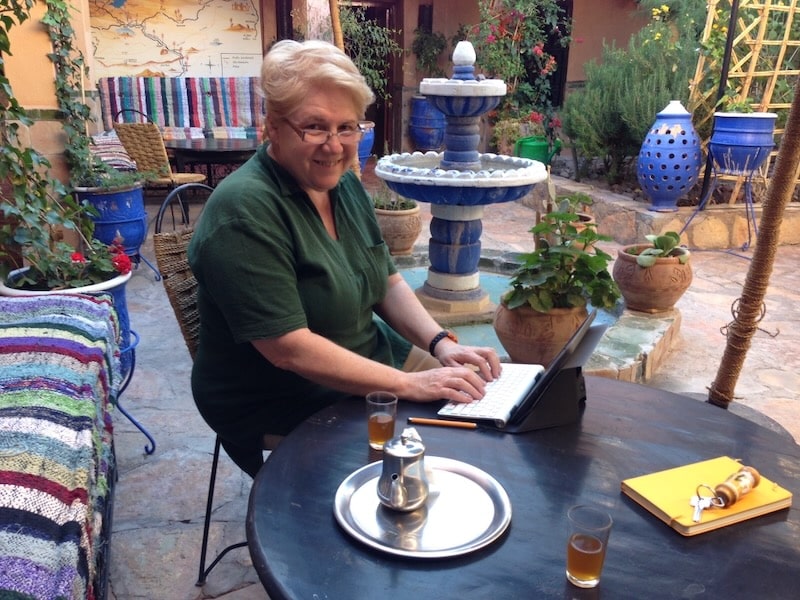
This invisibility can manifest itself in a number of ways.
One of my lovely readers, JL, is 71 and traveling around Vietnam with her daughter. “I find it really frustrating when we are in a restaurant and I pay the bill, and they insist on giving the change to my daughter. It’s as if they think I’m not sane enough to deal with money.”
My personal experiences tend to revolve around dining solo. Eating alone is not the norm in many places, and I’m never surprised when I’m guided to the back of the restaurant, usually next to a plant or to the rest room – even if the restaurant is still empty.
I used to grit my teeth and bear it, but birthdays often bring either self-assuredness, or simply a lack of concern about what others think.
Last time this happened, I called the waiter over: “Why are you placing me in the back, behind the plant? Do you think I’m going to scare your other customers?” Poor guy – I felt for him. He mumbled an apology or an explanation – I’m not sure which – and swiftly moved me to a nice table near the window. He spent the rest of the meal being overly courteous.
I know this isn’t always the result, but had I not spoken up, it would definitely not have been the result.
And I know I’m not unique.
“I agree that in restaurants as a single older woman I’m often seated at the small table near the kitchen or other unattractive area. I even walked out of a restaurant after having already ordered in Seattle after the server reseated me in an even worse area,” another traveler, Gisela, told me.
Seriously? An even worse table?
And what if you are less able or ill? L.J. feels staff often don’t understand her special needs. “Often, I will simply tell the hostess not to seat me in the “back 80”, and I haven’t been told yet that I can’t sit at the closer empty table.” Sometimes, being proactive works best.
There are those who can deal with these situations with aplomb, like Lesley R.
“Being invisible is sometimes welcome – dining alone, you can read, think, people watch or just savour your food. However on one occasion, dining alone in a fairly posh Italian restaurant I accidentally started a small fire, having dropped my napkin on a lit candle. Three waiters rushed to my table to douse the flames and replace the cloth. With all eyes on me, I stood up and took a bow and said ‘For my next trick…’”
Where does this feeling come from?
I’m no psychologist so I won’t try to explain the roots of these feelings. But I have done some reading and most of these feelings seem to stem, not surprisingly, from “not being young anymore”.
For some women, this is a disaster, especially if they’ve been accustomed to turning heads in their youth.
For others, as it was for Lesley, it’s a relief. Excess male attention is something many of us are happy to avoid.
Another reason for this feeling of invisibility tends to be loneliness. You may be widowed, divorced, an empty-nester, recently retired – any one of these can provoke that sense of being alone, especially if you spent many years in partnership or surrounded by people. Isolation can be a powerful enemy.
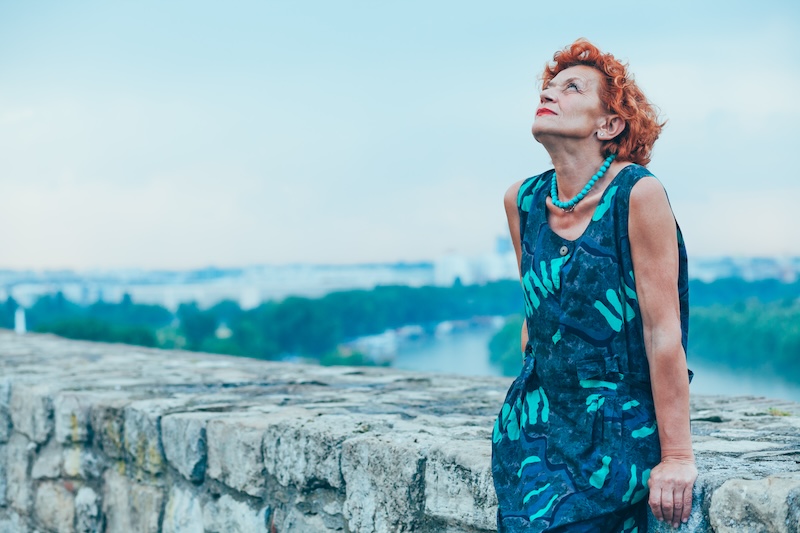
If this isn’t an issue for you, wonderful! But if it is, what to do when you’re made to feel invisible and you’re traveling solo? Are there workarounds or ways to get beyond these feelings?
How to avoid feeling invisible after 50 on the road
None of these suggestions will eliminate a deep-rooted feeling that has to do with how you see yourself. What these tips can do is, when used with purpose, is to diminish or divert some of those feelings, allowing them to fade into the background so that you can get on and enjoy your trip.
You’re traveling to see the world, not to hide away so it won’t see you!
1. Embrace a positive outlook
This goes for pretty much everything you do when you travel. Things happen, reservations get cancelled, connections are missed, plans fall apart. This is life.
In fact, in retrospect, some of our most memorable travel stories are born of these mishaps, which often lead to serendipity.
Trying to put a positive spin on things will go a long way towards making you feel empowered and positive. That energy will affect you internally – it’s hard to feel invisible when you’re raring to go – and externally, because a woman with energy and purpose is anything but invisible. You will be noticed.
2. Get to know yourself
To a certain extent, this follows on from #1.
Many of us feel “invisible after 50” because we don’t know who we are. We may have spent years being someone’s partner or parent or employee, and all of a sudden, that crutch is gone. We can no longer look at ourselves through someone else’s eyes, and that can be disconcerting.
We have changed through the years. At 70, I’m not the same person I was at 30, and getting to know this “new me” is a complete challenge, but a fun one. I use a variety of tools, from meditating to journaling. It’s not one of those clear-cut tasks, but you have to start digging somewhere.
For many women, being invisible comes from not not knowing who they are anymore. Those bits of myself I become more familiar or comfortable with will be the first to break through the invisibility.
3. Push your boundaries
This is one of my favorites. Risk isn’t just for the young. On the contrary, I find my courage has grown with age, and I dare to do things today I might not have done a few decades ago.
A bit like reading about that centenarian great-grandmother who received a paragliding session as a birthday gift, there are wonders out there that we may not have considered. You’ll never get me to jump off a mountain, but I have done other things involving travel to dangerous places or heading off on my own to distant lands.
Just as an aside, I don’t advocate taking mindless risks – plenty of pre-research goes into my choices, and my gut feelings play a big part in my decisions about where to travel next.
One of my biggest boundaries has been to speak up when I feel “dismissed” – as I did in that restaurant. That did not come naturally, but quaking or not, I pushed the words out. I might not have had that courage when I was younger, but experience has taught me that seething within feels worse than speaking out! And doing so with humor or diplomacy, not rudeness or aggression…
4. Get out and see the world
Whatever your travel fears, try to confront them and push past them just a little. If you’re scared of traveling solo, stay close to home for your first trip.
Or join a small women-only group tour to get your feet wet.
Or choose a destination where you know someone, or where the language is familiar, or where you know you’ll feel at ease.
It’s not about major jumps, but about taking baby steps. There’s nothing like travel to make you feel empowered, and feeling that energy inside will be reflected outside.
5. Shake up the brain
This is another of my favorites. If my mind is occupied, I won’t have time for concern, worry, or self-pity. I don’t have to remember everything I learn (that would be an impossibility since I usually can’t remember where I parked my car) but the act of learning stretches my brain, builds those cells, and makes me feel intelligent, capable, and wise.
Just this afternoon I found myself looking at courses on heritage and history, the kinds of courses people take to become travel guides. I have no intention of becoming one, but I wouldn’t mind a few art and history courses…
Or perhaps learning another language. Whatever you choose, learning or reading will boost your power and your self-esteem, and that, in turn, will provide you with that self-confidence which is so visible.
6. Reinvent yourself and affirm your personal style
What could be more fun?
I plan on changing the way I look… my haircut doesn’t suit me anymore and my clothes don’t fit. This is my chance to “change my look”. I don’t know what it will eventually be, but I can promise you there will be nothing invisible about it.
This is also about rethinking who you are. For years, I was a journalist… that was my identity. Then I joined the United Nations and became an “international civil servant”. After retirement, I became a “travel blogger” and occasional travel writer.
I’ve changed directions before, I can do it again. Who do I want to be for the next few years? There’s no one peering over my shoulder and nudging me towards an answer.
If in the past you’ve relied on others to shape your choices, this may be the right time to reevaluate who the “authentic you” really is.
7. Own it!
No cream or magic powder is going to relieve me of my hard-earned wrinkles. No makeup is going to hide my years of experience. And no outside judgment is going to get in my way.
I own my age, sometimes proudly, at other times less so, but I don’t dislike who I am and I certainly don’t feel diminished in any way by increasingly frequent birthdays.
I take life one day at a time, but oh, what a day! I try to make it meaningful or magical (sometimes it can be both at the same time!) but I won’t let anyone cheat me of the joy I feel I’ve earned. Not even a surly waiter.
Not everyone feels “invisible after 50” when they travel!
“I am 65 years old,” says K., “and I am exactly the the type of woman who is supposed to feel invisible: fat, white-haired, not particularly well-groomed, unstylishly dressed. Yet my experience is very different.
“There are two types of attention that I reliably get wherever I go, and which I don’t dislike: compliments on my hat, and requests for directions.
I always wear a stylish hat outside, for warmth or sunshade as the season dictates; it’s the one aspect of my dress that looks like a play for attention, though it’s entirely a practical choice on my part.
I find that when I travel solo, I attract more attention than when I am with others. I have had many memorable (and welcome) conversations with strangers in restaurants, museums, concert halls, shops, and the like. I don’t initiate these conversations; they seem to grow organically out of small interactions.
So although I don’t like attracting attention generally, somehow I seem to be able to get attention when I do want it for a specific reason or when I am open to it, without making any special effort.”
Ignore us at your peril
So this is it, our reality. Over 50, on the sliding side of life, but still well away from the bottom. The thought that life isn’t eternal may occasionally pop into our heads, and there’s no better reason to live life to its fullest.
According to a recent global study by Journeywoman, women over 50 are empowered, prefer to travel alone, and are seeking adventurous experiences in bucket list destinations.
At the same time, we have this huge spending power, but we are undervalued by the travel industry, often having to hand over the dreaded single supplement for the privilege of having decided to travel on our own. To make things worse, the study revealed that most of us don’t feel understood by the travel industry.
The travel industry, too, thinks we are invisible, although things are beginning to change.
In the words of another one of our delightful readers, whom I’ll call M, “Let’s just all get out there, travel and make ourselves fully known and at ease to refuse to be seated next to the palm tree table in the restaurant!”
Our attitudes can contribute to the way the world sees us, and by acting confidently and refusing to be invisible after 50, we are sending a signal that it is not OK for us to be treated with anything less than total respect.
Hong Kong Solo Travel for Curious and Adventurous Women 14 Oct 2023 9:34 AM (last year)
by Ingrid Kirita*
If you’re a woman over 50, you’ll enjoy Hong Kong solo travel: it’s safe, the food is amazing, and the city is as diverse as you could wish for.
Hong Kong is a vibrant destination – it is both an electrifying city and a haven if you love nature, not to mention one of the most popular destinations in Southeast Asia.
It’s the perfect place to visit, whether you’re partial to afternoon tea with a breathtaking view, cocktails on top of skyscrapers, or hiking to a stunning beach.
I know Hong Kong well, having lived here for a year. It brings to my mind great coffee, delicious local food, authentic neighborhoods, and shopping for luxury brands at great prices.
The city is made up of the main island (Hong Kong Island), the New Territories (part of mainland), Lantau Island, and a number number of the smaller of Hong Kong’s islands (inhabited or not).
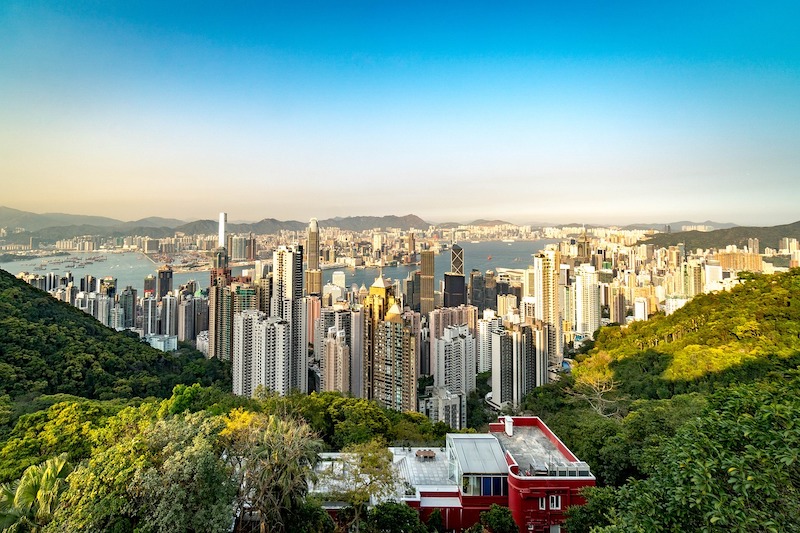
Hong Kong is divided into 18 districts and 3 regions, with Central and Western, Wan Chai, and Kowloon City the most popular with tourists, and the best way to see it is from above.
I can best describe the city by sharing a story.
I had just moved to Hong Kong when a friend from Europe visited on a business trip. After a delicious Taiwanese dinner and a couple of drinks, I asked our guest what she would like to do next. She said, “Let’s go to my room and just gaze out the window for a while.”
The towering skyscrapers on the opposite shore flashed in myriad colors against the dark night sky and the shapes of distant mountains, with massive ocean-going vessels and traditional junk boats hovering left and right on the busy sea lane below our feet.
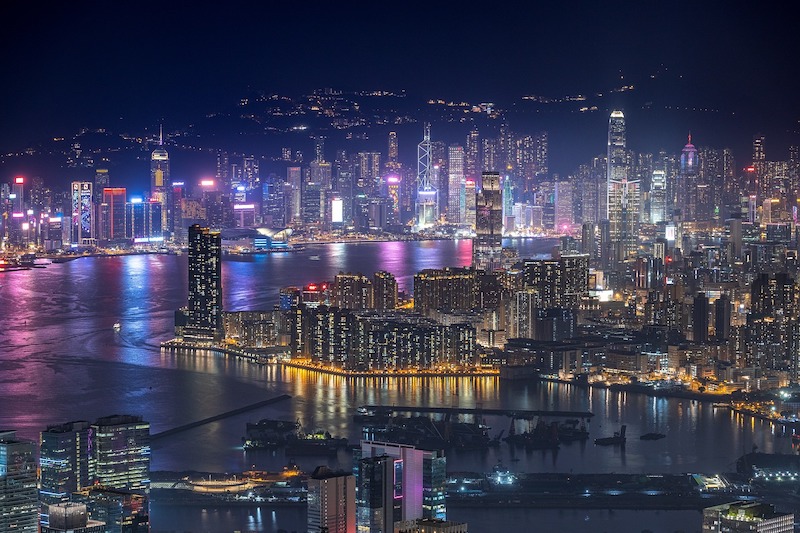
That’s Hong Kong for you: a spectacular urban landscape with bustling streets that could easily be the backdrop of a futuristic movie, combined with the millennia-long traditions of its very diverse inhabitants.
Hong Kong is as much about skyscrapers as it is about forests and mountains, something that might surprise you. I hiked more often in a year in Hong Kong than in decades in the Carpathian mountains in my home country. And it also happens to have amazing beaches.
Hong Kong is one of the few places in the world where you can dine in a posh restaurant on the 108th floor while looking down on a sci-fi landscape of countless skyscrapers – and just 20 minutes later, you’ll be lazing on a palm-lined beach staring up at majestic mountain peaks.
16 Things to see and do in Hong Kong
There’s plenty to do here as a solo woman, both during the day and in the evening. Here are some of my favorite top attractions:
1. Ride the tram to the Peak, Hong Kong’s highest mountain
The scenic tram will sweep you up 552 meters from the city center up to The Peak, or Victoria Peak, in a matter of minutes.
The Peak Tram is a historical gem that has been running since 1888 and is a unique experience. Catch a seat by the window going uphill if you can and experience a strange illusion – that the buildings next to you are extremely tilted. Making its way between skyscrapers and lush vegetation, the last minute on the tram offers one of the best views over the city.
Once you get to the top of the mountain, admire Hong Kong’s stunning city skyline, go for a walk on Lugard Road, and have a bite at one of the many restaurants with a view.

2. Cross the harbor at sunset with the Star Ferry and stay for “A Symphony of Lights”
The Hong Kong Star Ferry is the most scenic option for crossing Victoria Harbor either from Central or Wan Chai to TST (Tsim Sha Tsui). The first ferry ride dates back to 1888, and the ferry remains as popular today as it was then, both among locals and tourists.
You can get off at TST and make your way to the Avenue of Stars to enjoy the famous Symphony of Lights show (a multi-media show that illuminates the Hong Kong skyline with the Hong Kong Philharmonic Orchestra as a background), or take the special Star Ferry that will circle the harbor while you relax on the open deck and admire the lights.
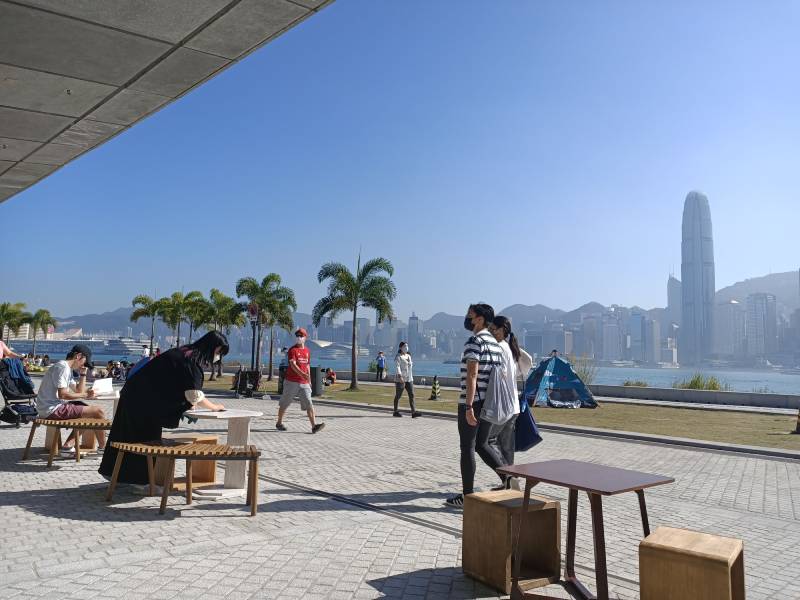
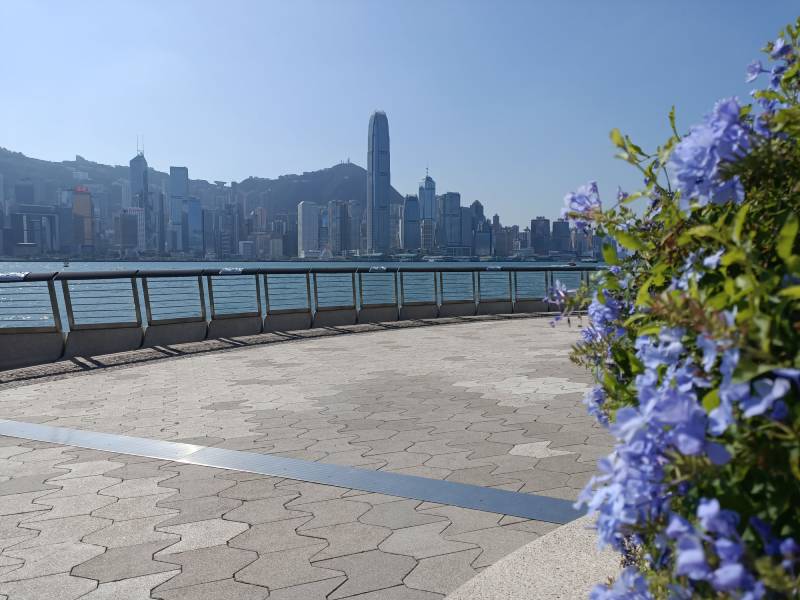
3. Take the cable car to the Big Buddha on Lantau Island
Make your way to Lantau Island by subway. The largest island in Hong Kong, part of the New Territories, Lantau hosts the airport and plenty of things to see.
If you don’t suffer from vertigo, ride the crystal-bottom cable car to the top of Lantau for a stunning view both over the island’s natural habitat and the Hong Kong – Zuhai – Macao bridge.
When you get off the cable car, take a short hike to one of the most iconic landmarks in Hong Kong: the large bronze seated Big Buddha, located at Ngong Ping, where you’ll also find a small “shopping village”.
Don’t leave without taking a walk around Po Lin Monastery, a large Buddhist complex with six temples.
From there, you can either walk the Wisdom Path, or take the bus and head to Tai O, a traditional fishermen village. With so many attractions on the island, you can easily plan to spend a whole day exploring.
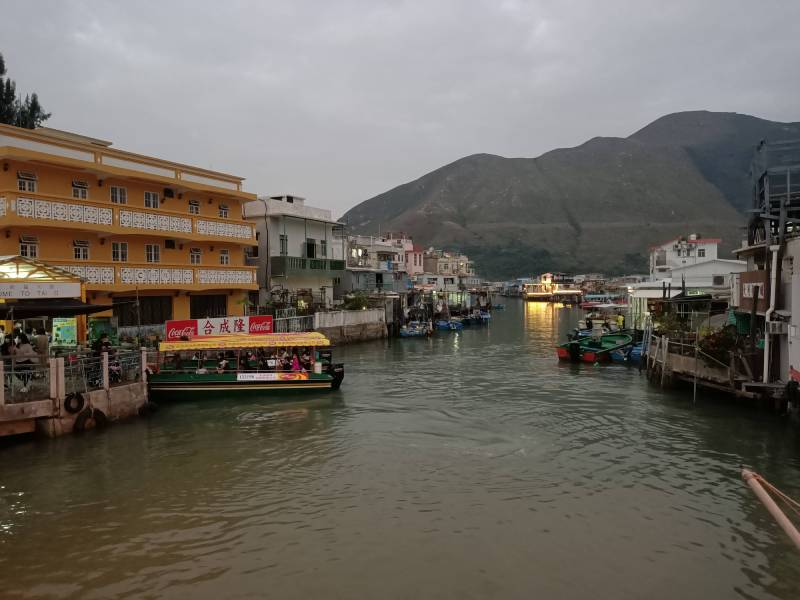
4. Taste local seafood cooked in a traditional manner at Rainbow Restaurant on Lamma Island
One of my favorite places to eat at, the Rainbow restaurant on Lamma Island, is just minutes away from the ferry stop. Included in the price of your meal is a one-way boat ticket to Central on Hong Kong Island.
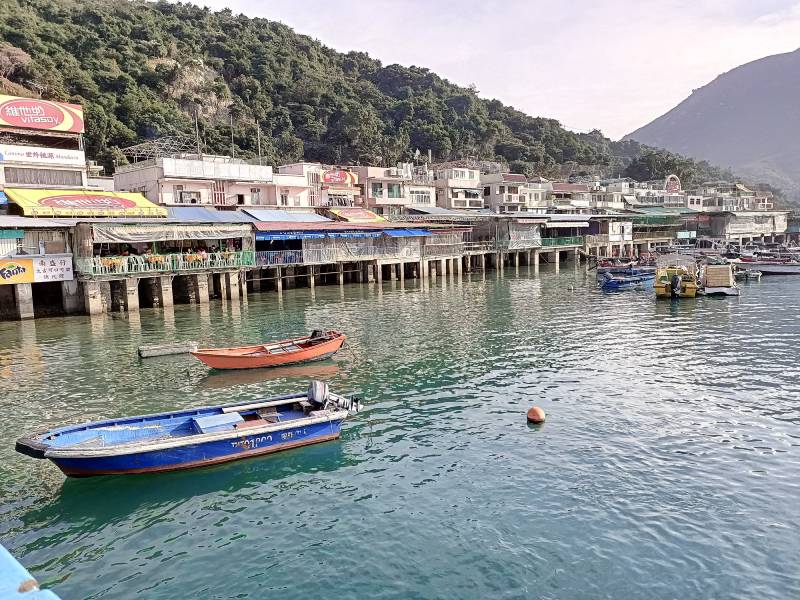
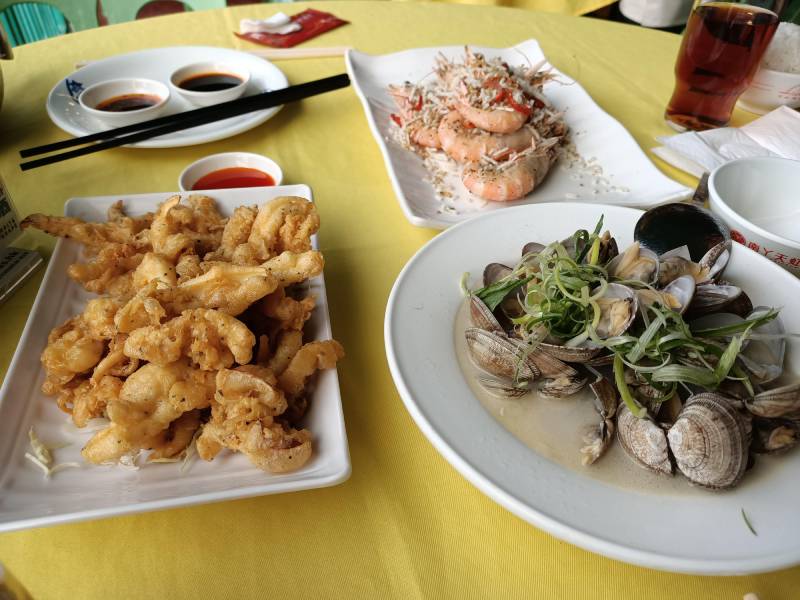
The fish are still swimming in the aquarium and you choose what you want. They’ll cook it for you right away – it doesn’t get fresher than that.
5. Shop till you drop at one of the many outlets
You don’t need to be a shopaholic to enjoy Hong Kong’s outlets, and you just might leave with a designer item or two, at a great discount.
Here are some great outlets:
- Prada factory outlet at the Horizon Plaza, right next to the South Horizons MTR subway station.
- Citygate Outlets, 10 minutes from the airport by MTR at the Tung Chung Station
- Horizon Plaza on Hong Kong Island
6. Buy dried seafood and play with the shop cats in Sai Ying Pun
Dried seafood plays such an important part in Chinese cuisine that in Sai Ying Pun, you’ll find a whole street lined with small shops selling various types of dried fish and other things from the seas.
Dried fish can have a pungent smell which many dislike, but I didn’t mind walking around, especially since most shops have cats with which you can play.
7. Shop for antiques in Sheung Wan at the Cat Street Flea Market
Whether you’re looking for souvenirs or expensive Chinese antiques, this is the place. Even though the flea market is modest and most stalls have pretty much the same things, you’ll probably still find something to take home.
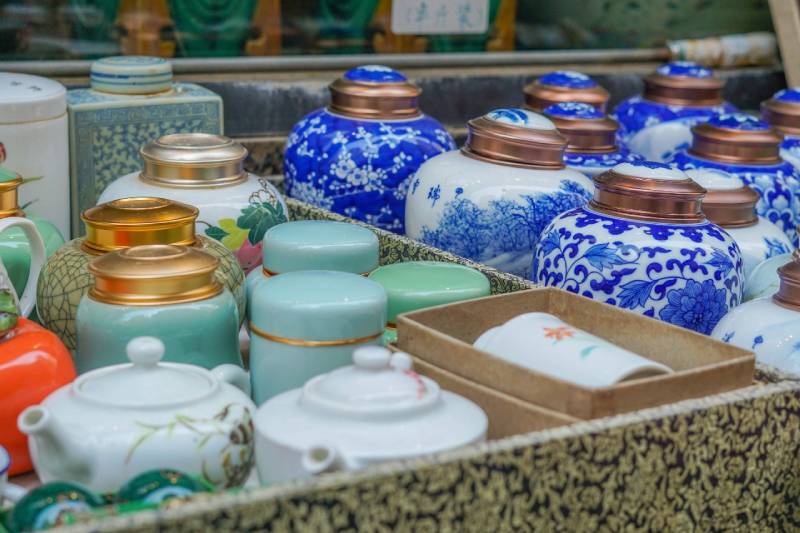
8. Sail on a junk boat with Aqua Luna
A junk boat is a traditional Chinese sailing vessel used for centuries. The boats have a distinctive design, with flat bottoms and high prows that allow them to navigate shallow waters.
You can see Aqua Luna with its red vales sailing along the Victoria Harbor throughout the day and night. Sailing on this boat at sunset is an experience worth having at least once while you’re in Hong Kong.
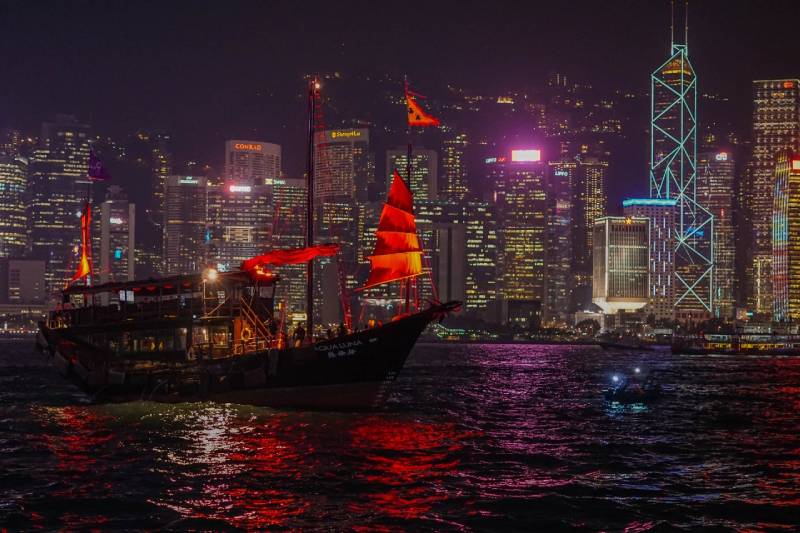
9. Visit Man Mo Temple
Man Mo Temple is one of the oldest religious sites in Hong Kong and has been a popular place of worship for over 170 years. Located in the heart of the Central district, minutes away from the Cat Street Flea Market, it would be a pity not to go inside for a look at one of the most popular temples in the city.
10. Have dinner at the rotating restaurant
Or simply enjoy the free view from the elevator that will take you there.
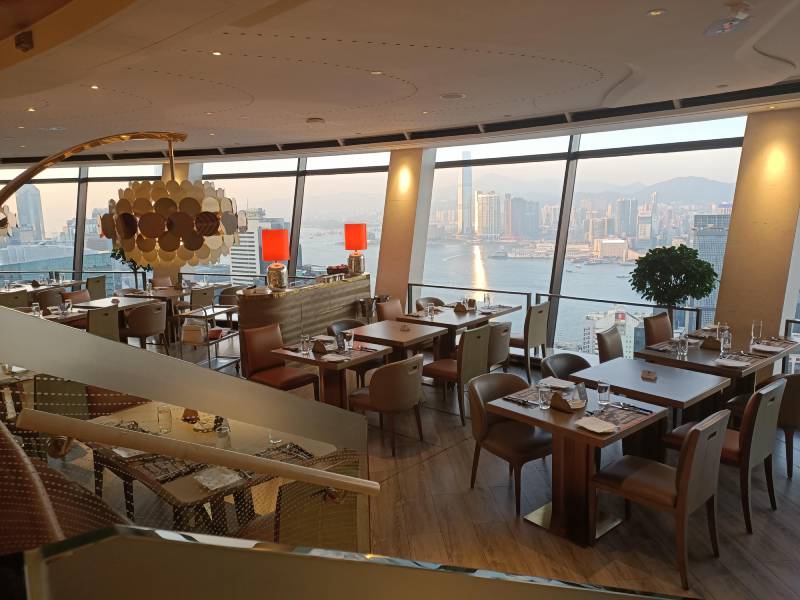
The Grand Buffet is located in Hopewell Center and is the only 360-degree rotating restaurant in Hong Kong, offering the best view over the city.
11. Eat at a local wet market
I am not exaggerating when I say the food at the wet market might be the best you will ever eat in Hong Kong. And the most affordable. Sure, the menu is not in English, but usually you can manage to order based on the pictures.
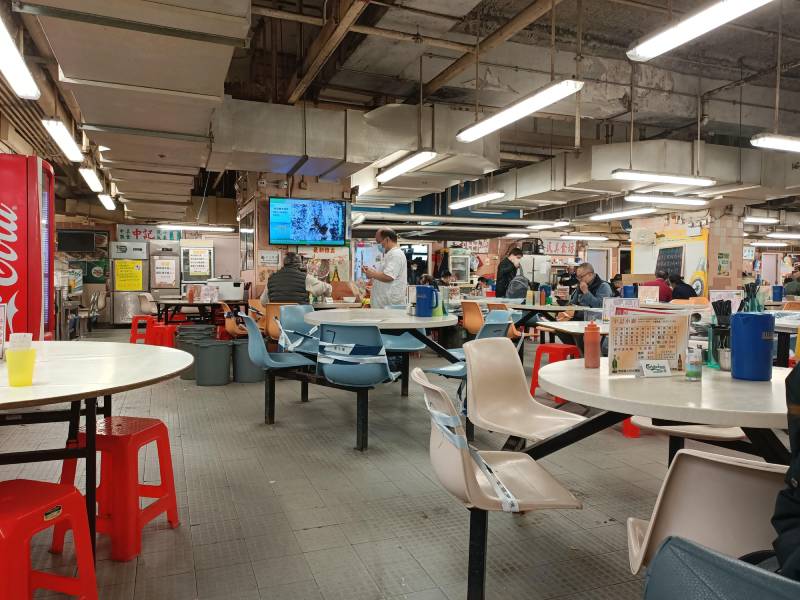
It might not be the most hygienic location, but it is an experience worth having. Try the Wan Chai wet market, blend in with the locals and try the local traditional spicy beef, garlic aubergine, fried squid, fried noodles, or crab.


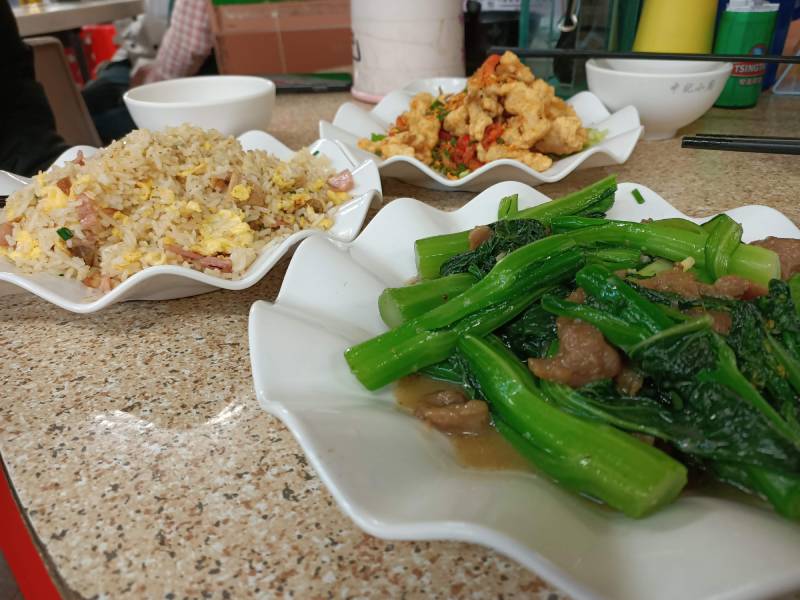
12. Start your day with a coffee at Repulse Bay
Repulse Bay has a low-key, relaxed vibe, especially during the week – a great way to start your day is with a good coffee on the beach, at The Coffee Academics.
13. Shop for souvenirs at Stanley Market
While many people and guides will recommend shopping for souvenirs at the Ladies Night Market in Kowloon side, I would advise you to skip the crowds and try Stanley Market.
You will find pretty much the same things, in a much more picturesque area.
Apart from the classic souvenirs such as keychains or good luck charms, at Stanley Market you can shop for bamboo home decorations, linen with Chinese embroidery, or local traditional clothing.
14. Swim at Clearwater Bay or take the boat to Sai Kung’s Ham Tim or Tai Wan Beaches
As the name suggests, Clearwater Bay has some of the most turquoise waters in Hong Kong, and it is easily reachable from Central.
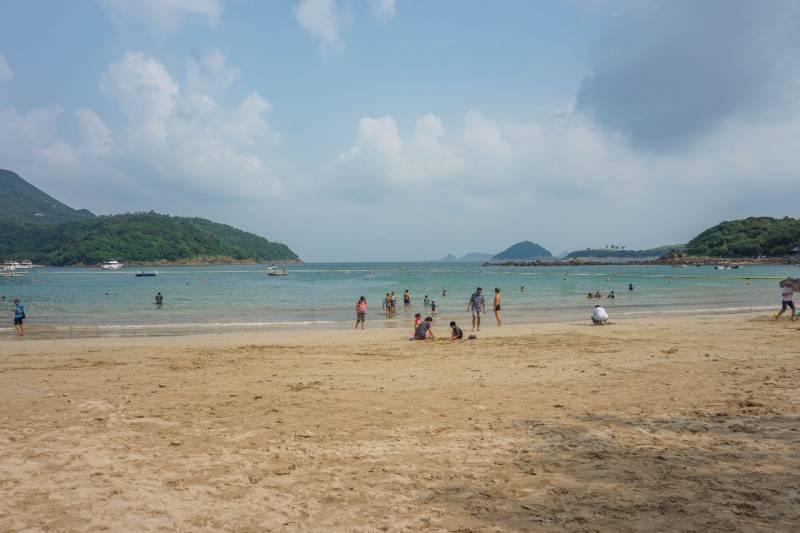
However, if you really want to go on an adventure, and want to feel like you are on a tropical island, hop on the subway, bus, and boat, and head to Sai Kung. Of course, you can also skip the boat and go for a hike there.
15. Admire the flowers at the Prince Edward flower market
If you love flowers as much as I do, a stroll at the flower market will brighten your day. You can also shop for traditional vases, perfect to bring home as gifts.
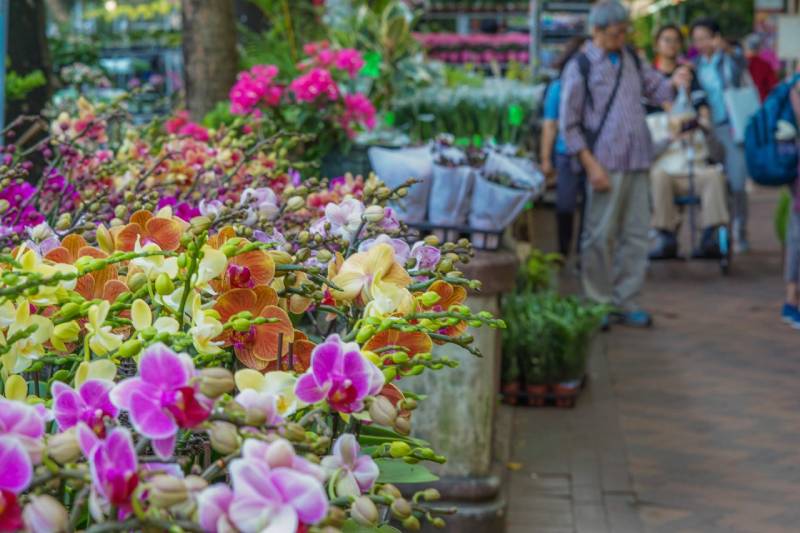
16. Take a picture with the murals in Central
Hong Kong is known for its color, streets, and murals. And the good news is you won’t have to go far to find some of the most popular and artistic ones, since they are right in the city center.
Even more things to see!
- Hong Kong Sky100 Observation Deck
- Hong Kong Palace Museum
- M+ Museum Ticket
- If you plan on visiting several attractions, get a Klook Pass, which gives you up to 25% off on selected attractions
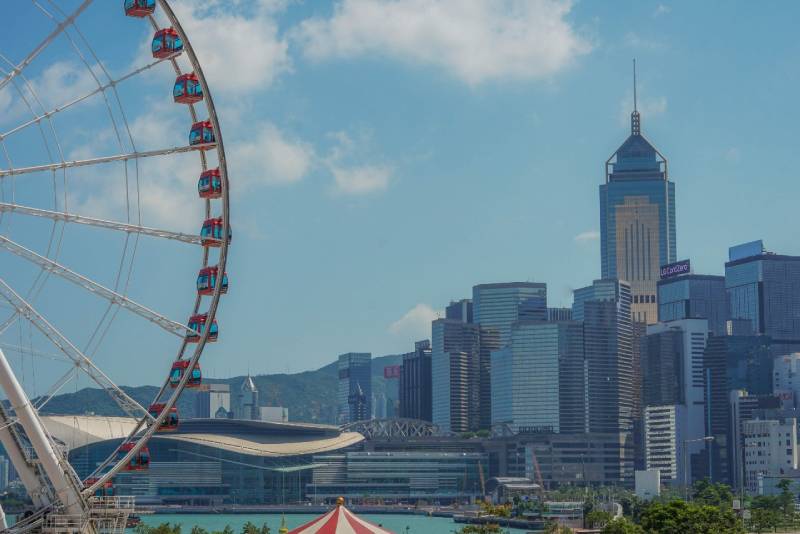
Hong Kong highlights and background
Hong Kong has been Asia’s gateway for a long time and is an amazing cultural melting pot, evidenced in the mind-blowing diversity of the local cuisine. Forget the usual food classifications, and prepare yourself for a culinary experience you’ll never forget.
Have you ever tried a Vietnamese-Canadian recipe? I can assure you that at Fuhn, you’ll get one of the best bone marrow pho soups I have ever tasted.
What about Egyptian-Hong Kongese shawarma? I bet you never thought such a thing existed.
Or, if you thought that you knew your hot pots, you’ll soon realize the error of your ways. There are Taiwanese, Cantonese, and a myriad of different mainland Chinese variations.
But if you prefer good old Italian cuisine, don’t worry; Hong Kong excels at this as well, with Italian chefs preparing authentic meals in several different restaurants.
However, there’s no better place to try the local traditional Cantonese cuisine than at a Cha chaan teng, or Hong Kong-style diner.
Best time to visit Hong Kong
Hong Kong has a humid subtropical climate, with extremely hot and humid summers, and relatively warm winters. However, winter months can see temperatures drop down to 10℃ / 50℉, which may feel even colder because of the high humidity.
Summer is typhoon season, with many rainy and moody days, not an ideal time to visit.
The best time to visit Hong Kong is during the spring or fall months, when temperatures are milder and you can enjoy walking around. March and November would be the perfect months for a visit.
Things to pack for Hong Kong
No matter when you choose to visit Hong Kong, always pack a jacket or at least something to put over you shoulders. That’s because every time you step inside, the air conditioning will be extremely strong. Even if you are only taking the subway, eating at a local restaurant, or strolling through a shopping mall, the temperature difference between the inside and outside is insane.
One thing I couldn’t find was good strong deodorant, so make sure you have that in your luggage if you use it.
Day trips from Hong Kong
A simple link to highly rated tours on Viator or GetYourGuide would be fine
- Private Day Trip to Lantau Island
- Full Day City Tour of Macau from Hong Kong (or take the TurboJet Ferry – the ride is about 50 minutes)
- Private Shenzhen Day Tour from Hong Kong
Getting to Hong Kong
Hong Kong international airport is well linked to the world’s most important destinations, providing easy access.
From the airport, you can get to the city center in 30-60 minutes, depending on how you travel.
Taking the Airport Express Train is the fastest way to get from the airport to Central and the best for solo travelers, a cab is best if you’re accompanied, and taking the bus is the cheapest (and longest) option.
Getting around Hong Kong is a breeze, and the best way to see it is by using its sophisticated network of trams, buses, MTR (subway), and ferries. Rather than fumbling with cash, get a Tourist Octopus Card, which you just tap before getting on board.
Why Hong Kong is a great destination for the solo female traveler over 50
If you’re contemplating a solo trip, Hong Kong is a fabulous destination for solo women over 50.
It’s one of the safest cities in the world, with low crime rates, especially when it comes to violent crime. It also has an efficient and affordable public transportation system, where women can feel at ease exploring the city on their own. This eliminates the need for renting a car or relying on tour groups, giving a solo traveller the freedom to explore at their own pace.
Hong Kong is relatively compact, which makes it easy to visit, while at the same time offers a diverse range of experiences. Whether you enjoy shopping, sightseeing, or trying new foods, there is something for everyone in this bustling city. You’ll also enjoy diving into the local culture, which is rich and varied.
Hong Kong’s welcoming and inclusive atmosphere makes it an ideal destination for solo travelers. Local people are friendly and helpful, which makes a difference when you’re traveling solo.
While no part of Hong Kong is really off-limits, even at night, if you’re concerned, stick to the most popular areas such as Central, TST, Wan Chai or Causeway Bay.
How safe is Hong Kong?
In almost two years of living in Hong Kong, I never felt unsafe, even when walking alone at night.
Of course, one should always be aware of its surroundings and use common sense when traveling to a new place. While Hong Kong doesn’t have a violent crime problem, there is petty crime, so hang onto your belongings, especially in crowded places.
To keep your belongings safe, use one of these cross-body anti-theft bags, or if you’re traveling really light, an infinity scarf with a pocket will do the trick.
Also, in some party neighborhoods, there might be excessive drinking but nothing to be seriously worried about.
There are also political concerns in Hong Kong. Given the upheavals faced by the former British colony since its takeover by China, there are often questions about safety.
The recent National Security Law provides for harsh punishments for any form of political and social dissent, including by foreigners, so if you hear of a public protest, head the other way. It might also be a good idea to steer away from heavy political discussions as well.
The downsides of visiting Hong Kong
Whatever Hong Kong’s attractions, there are downsides to every destination and Hong Kong is no exception. Its main downside is that the city can get impossibly crowded at times, making it difficult to even walk. Places like Causeway Bay, Wan Chai, or even Central and TST can get incredibly crowded with locals and tourists.
Try to avoid traveling on a Sunday as much as possible, when streets and parks are even more packed with people.
Where to stay
Hong Kong is a compact city with a great public transportation system that will get you anywhere in less than one hour. However, choosing to stay on the main island when you visit for the first time is best, with Central, Wan Chai, or Causeway Bay as your main areas to look into. Another great option is TST, which is perfectly linked to both the airport and Hong Kong Island.
Here are the Hong Kong hotels I recommend:
Affordable: Ovolo Southside
Boutique: YING’nFLO, Wan Chai
Luxury: The Hari Hong Kong
If you’d rather keep looking, here’s what’s available in Hong Kong, with the latest prices:
Hong Kong FAQ
How many days should I spend in Hong Kong?
There’s so much to see that you’ll need at least several days. Here’s a 4-day itinerary for Hong Kong to give you an idea of how much you can see in that time.
Is Hong Kong easy to get around?
It IS. There’s an excellent system of public transportation. Just make sure you have a map or a transit app to help you get around until you get your bearings.
Is Hong Kong good for solo travel?
It is the perfect city for solo travel, because it is quite safe, compact, with great public transportation, so you can get everywhere easily and safely.
Do they speak English in Hong Kong?
Yes they do, and you won’t face a language barrier here. English is still one of Hong Kong’s two official languages, the other being Cantonese, a form of Chinese.
Is Hong Kong an expensive city?
Hong Kong is relatively expensive, especially when compared to many other parts of Southeast Asia. Use this cost of living calculator if you’d like a clearer notion of what things cost.
Before you go…
Traveling solo, especially when you’re a bit older, means you often have to have eyes behind your head when you’re visiting a crowded city. But Hong Kong is quite safe, and it’s a pleasure to amble through such a high-energy and busy destination without having to hide away at nightfall.
If you love visiting large cities and don’t want to worry about safety, other great cities to visit include Singapore and Seoul, South Korea.
*Bio
Ingrid of Zenmomentsinkorea.com lived for three years in Hong Kong and Seoul, South Korea, and had ample opportunity to explore the city-state’s furthest corners.
How to Plan Your Perfect Chiang Mai Solo Trip 4 Sep 2023 3:35 AM (last year)
Planning a Chiang Mai solo trip? Here’s everything you need to know to visit this northern Thai city, including what to see, what to pack, tips on Thai etiquette – and plenty more.
I recently spent two months solo traveling all around Thailand and loved it so much that I came back! I spent three months living in Chiang Mai as a digital nomad, ensconced in the city’s rhythms and routines, exploring the nooks and crannies that make this city a gem in the heart of Thailand.
As a seasoned solo female traveler who has journeyed around the world, traveling full-time for more than two years now, I understand the unique challenges and experiences that come with exploring new places independently.
Young backpackers love to come to Thailand during their gap years to party at the legendary Full Moon party, but Chiang Mai isn’t just a young person’s paradise – it’s also an excellent destination for wisened solo travelers like us.

From temple visits to Thai cooking classes, from buzzing night markets to serene Doi Inthanon National Park, my list of 12 things to see and do in Chiang Mai for first-time solo visitors will help you navigate, appreciate, and delve into all that Chiang Mai has to offer.
Chiang Mai’s charm, warmth, and vibrant culture will captivate you, just as it did me. And, it happens to be my favorite place in Thailand!
12 Things to do in Chiang Mai alone on your first visit
This is one city in which being a solo traveler will in no way single you out. There are plenty of solo women digital nomads who have settled in Chiang Mai, and it’s heaven for solo women because of its cultural attractions and its high level of safety.
We’ll get to those shortly but first, here’s what not to miss in Chiang Mai.
1. Tour the Old City
At the heart of Chiang Mai is the Old City, an area rich in history and culture. Enclosed by ancient walls and a moat, it’s where you can find many of Chiang Mai’s temples, quaint cafés, and boutique hotels. Take a leisurely stroll to soak up its tranquil atmosphere and charming architecture.
Remember, when you travel to Chiang Mai, you’re not just visiting a city, but immersing yourself in a rich tapestry of culture, history, culinary delights, and natural beauty. Enjoy every moment of it!
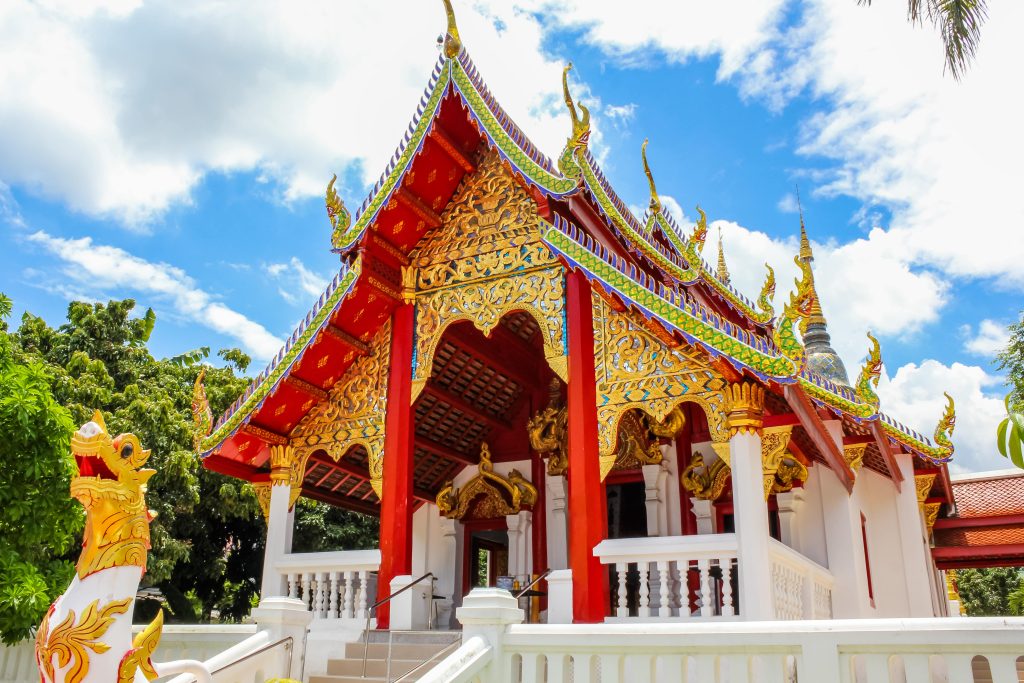
2. Explore the ancient temples
Chiang Mai is home to over 300 awe-inspiring Buddhist temples, each with its own unique history and architectural style.
A visit to Wat Phra That Doi Suthep, arguably the most famous temple in Chiang Mai, is a must. Located atop a mountain, it offers breathtaking views of the city.
Don’t miss Wat Chedi Luang, with its massive chedi (pagoda) that dates back to the 15th century.
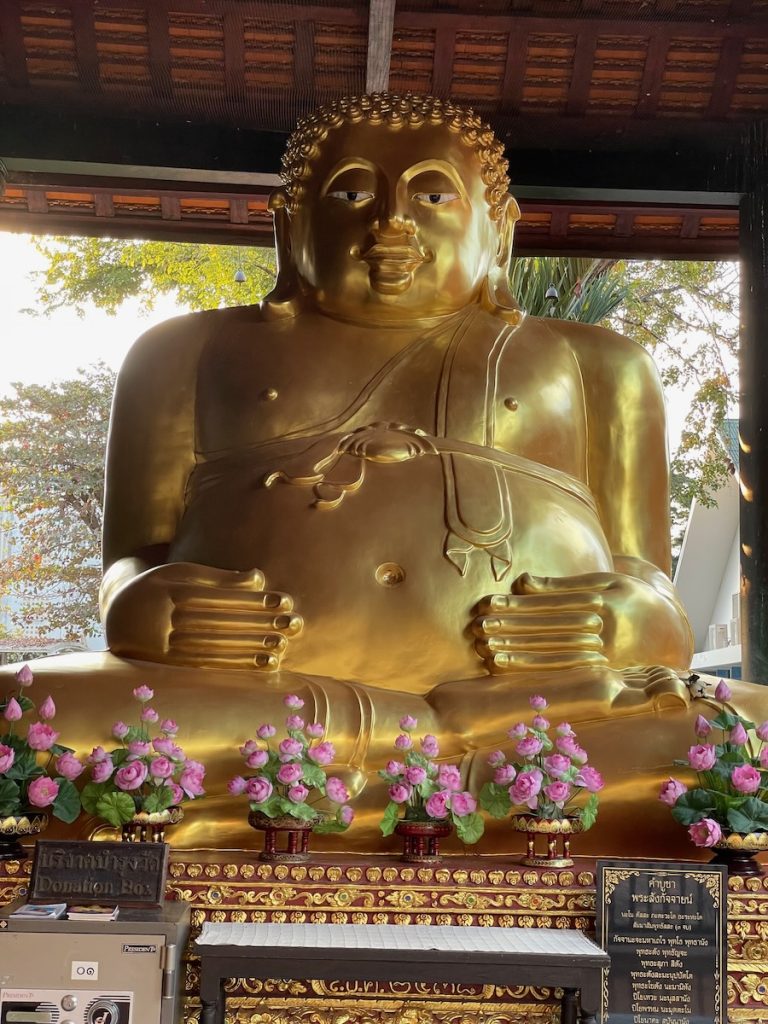
3. Hike the Monk’s Trail to Wat Pha Lat
The Monk’s Trail is a popular and picturesque hike through lush jungles, waterfalls, and rice paddies. The first half of the trail ends at Wat Pha Lat, a stunning temple built into the side of a hill surrounded by tall trees.
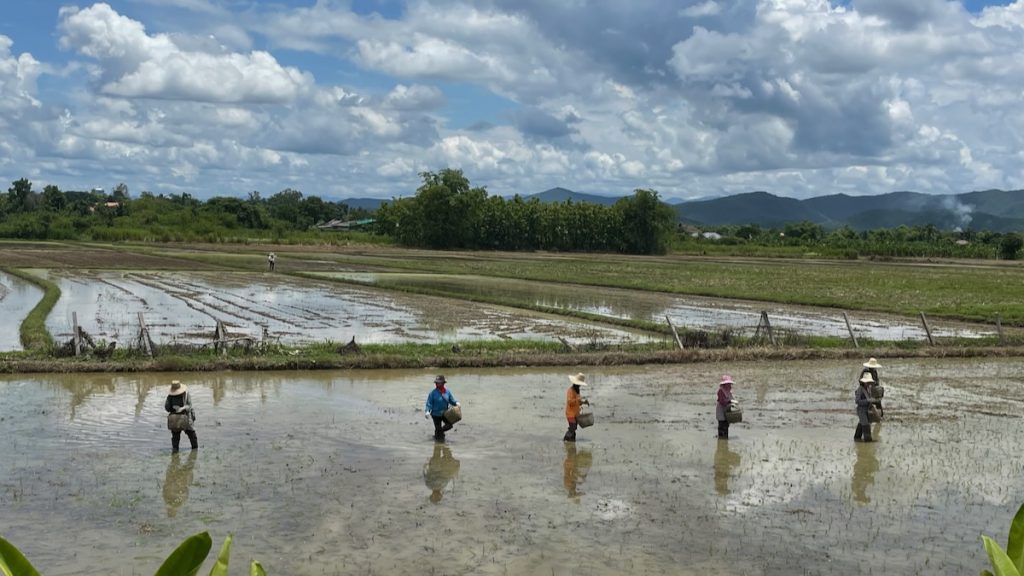
This part of the trail has a slight incline and uneven ground, but isn’t too strenuous for most hikers. Free walking sticks are available at the entrance to the hike. The ground can be slippery during the rainy season, and shoes with good tread is recommended. Don’t forget to bring plenty of water, bug spray, and wear temple-appropriate clothing.
The second half of the trail ending at Doi Suthep is a challenging hike with a steep incline.
4. Cool off at your hotel pool
Many hotels in Chiang Mai have swimming pools where you can relax after a long day of sightseeing. Remember, this is Thailand and the weather is hot in nearly every season.
You can also buy a day pass to some pools like Buristro Bar & Café.
5. Visit the Chiang Mai Night Bazaar
Among the many Chiang Mai attractions, the Night Bazaar is a paradise for shoppers and food lovers. In addition to Thai street foods like Pad Thai and mango sticky rice, you’ll find plenty of Northern specialties like Khao Soi (a delicious coconut curry noodle soup), Sai Oua (a pork sausage) and Larb (a spicy mincemeat dish).
Besides food, you can also find handcrafted souvenirs, Thai silk, and locally made jewelry. It’s an excellent place to experience the local culture and practice your bargaining skills.
6. Sunday Walking Street Night Market
The Sunday Walking Street Night Market is a must-see for all Chiang Mai visitors. Every Sunday, the historic center of the city transforms itself into one giant night market with more than 300 stalls selling arts and crafts, jewelry, clothes, housewares, souvenirs, and much more.
Don’t miss sampling some delicious street food while you’re there.
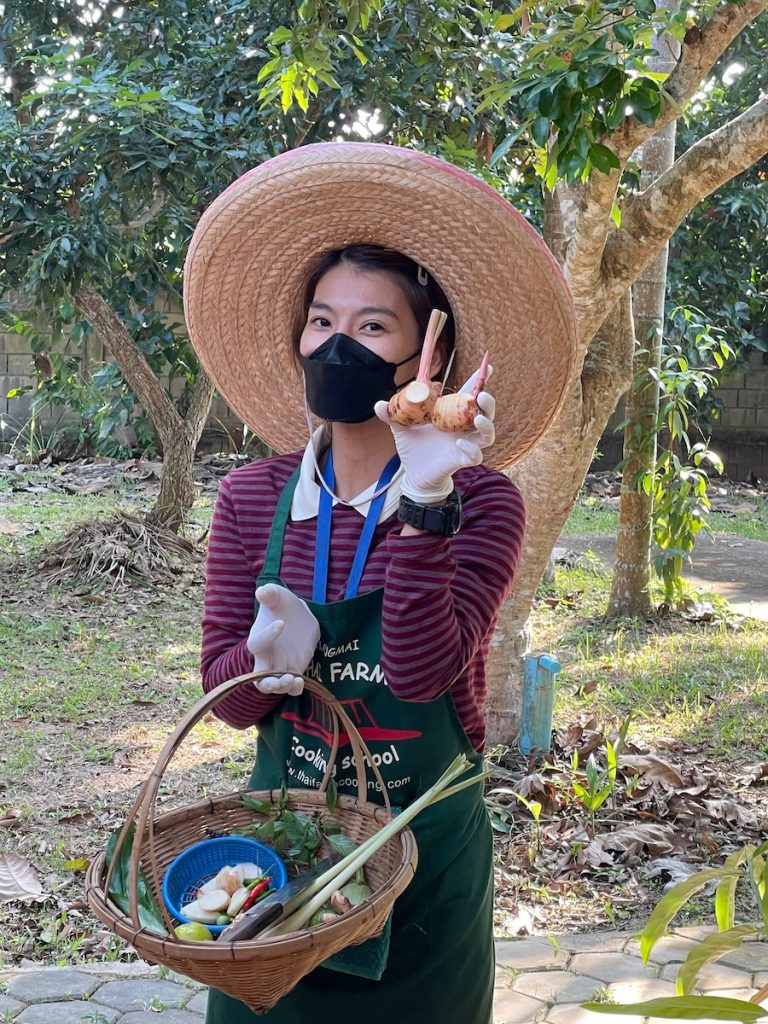
7. Relax with a Thai massage
Nothing beats a relaxing traditional Thai massage after hours of exploring the city. There are plenty of massage parlors in Chiang Mai but if you don’t like intense massages (and Thai massages really are!) try a foot massage instead.
8. Take a Thai cooking class
If you love Thai food, why not learn to make it yourself? Chiang Mai has numerous cooking schools that offer classes tailored for visitors. This cooking class includes a farm visit, while this one takes you to a local market.

Many schools include a visit to a local market where you can learn about Thai ingredients. It’s a fun and immersive way to understand Thai cuisine and culture. The best Tom Yum soup I ever had was the one I made at my Chiang Mai cooking class…
9. Visit the Elephant Nature Park
Situated in the lush countryside just outside Chiang Mai, the Elephant Nature Park is a must-visit for wildlife enthusiasts.
Elephant Nature Park, the most ethical sanctuary in Thailand, goes beyond just rescuing and rehabilitating elephants. With unwavering dedication, they provide a safe haven for elephants from all over Thailand, ensuring their well-being and enabling them to live a life free from exploitation.
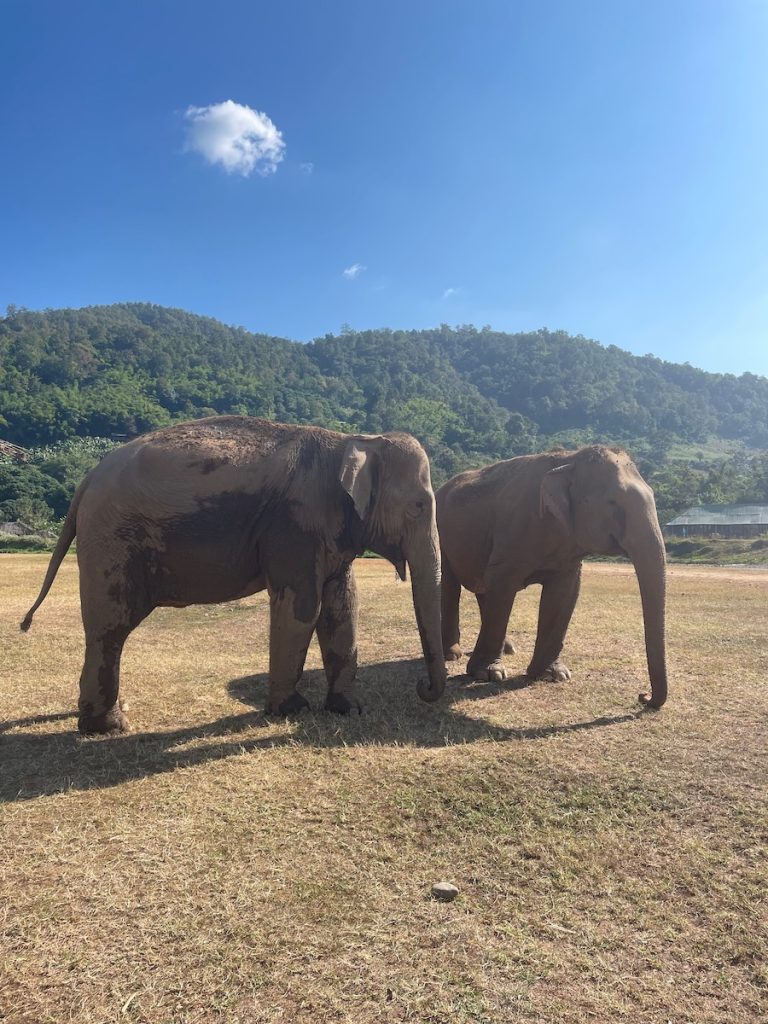
That means there is no physical contact with these elephants. Visitors are encouraged to observe the elephants in their natural environment as they roam freely. By visiting, you can learn more about Thailand’s wildlife conservation efforts and how you can help protect these gentle giants for future generations.
With hundreds of dogs and cats at the sanctuary, you will still get your cuddle-fix in.
10. Take a day trip to Doi Inthanon National Park
Located about 100km south of Chiang Mai, Doi Inthanon National Park is well worth a day trip from the city.
It’s home to Thailand’s highest mountain, Doi Inthanon, as well as stunning waterfalls and lush tropical rainforests.
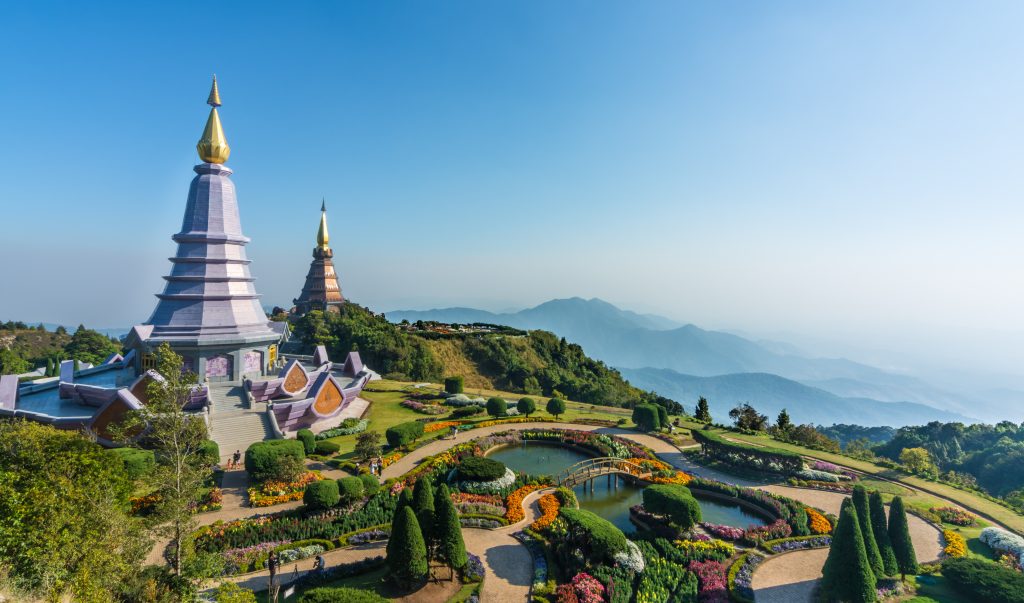
A great way to explore the park is by taking a guided nature walk along the well-maintained pathways. You’ll get to enjoy breathtaking views of the surrounding landscape and observe its abundant wildlife. While there is some incline, the hike is not very challenging overall and takes about two hours, with time for breaks.
So don’t forget to pack your hiking shoes and a sweatshirt − it can get cold up in the mountains if you go early.
11. Weekly women’s lunch at Free Bird Café
If you’re looking to make some friends while you’re in town, stop by Free Bird Café for a weekly gathering of women every Wednesday at noon.
Enjoy great vegan food and make new friends from all walks of life − even if you’re just passing through Chiang Mai.
They also have a nice thrift store on site. And the best part? All profits from the café and shop go towards supporting Burmese refugees.
12. Listen to music at the North Gate Jazz Co-Op
If you’re a jazz fan, make sure to check out The North Gate Jazz Co-Op.
It’s the premier jazz venue in Chiang Mai and offers live music from both local and international artists several nights a week.
Even if you’re not an avid jazz fan, it’s still worth checking out for the vibrant atmosphere and soulful sound. The Tuesday night band is fabulous, playing all different types of music – I love their ABBA covers!
The venue is small and fills up pretty fast, so the crowd spills out into the street where you can sip a drink and dance. This local venue attracts people in all stages of life so don’t be afraid to check it out.
Chiang Mai highlights and background
Chiang Mai is known as the cultural heart of Thailand, and it wears its history with pride.
A bit of Chiang Mai history
One of the main attractions in Chiang Mai is the Old City, an area enclosed by ancient walls and moats that tell tales of the Lanna Kingdom.
Here, you can stroll down historical lanes, visit centuries-old temples or simply enjoy a coffee while soaking up the local atmosphere.
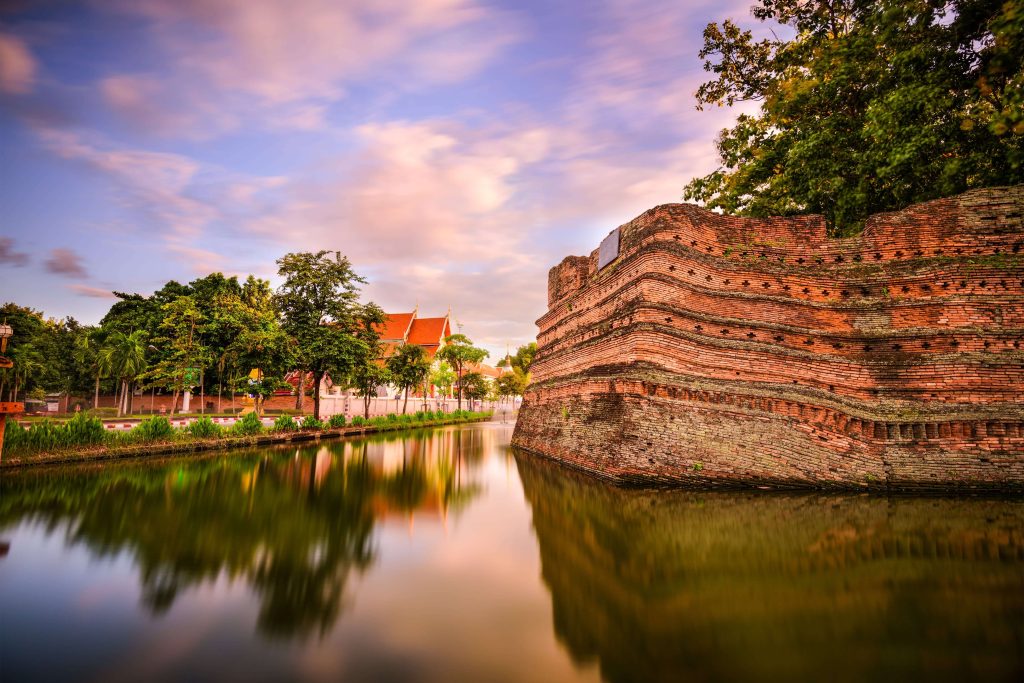
Remember, as a sign of respect, always dress modestly when visiting temples, covering your shoulders and knees.
Pro tip: I usually keep a sarong in my day pack that I can easily throw over my shoulders or tie around my waist for an impromptu temple visit.
Northern Thai cuisine
While you’re in Chiang Mai, be sure to try the local cuisine. You’ll find plenty of familiar Thai favorites but make sure you taste some of the dishes that are unique to Northern Thailand.
Here are some typical Northern Thai specialties:
- Khao Soi, a coconut and curry-flavored soup served with egg noodles and pickled cabbage (Khao Soi Gai if you add chicken)
- Sai Oua, an herb-infused sausage made from pork or beef
- Nam Prik Noom Kab Moo are pork cracklings and green chilli dip (in fact, Nam Prik Noom chilli dip is a go-to for almost any dish in the North)
- Khao Lam, a dessert of sticky rice served in a hollow bamboo shoot, eaten while still warm (and a delight!)

Chiang Mai has some of the best night markets in Thailand, where you can sample all these local favorites.
Handicrafts
Chiang Mai is also renowned for its traditional handicrafts. Visit the bustling San Kamphaeng district a short drive out of the city center, home to skilled artisans who create beautiful silk garments, silverware, and handmade paper umbrellas.
It’s a fantastic opportunity to pick up unique souvenirs while supporting local craftspersons. And you can often watch the artisans at work.
Cultural etiquette
When it comes to cultural etiquette, it’s important to recognize that Thai culture places a high value on respect and politeness. Here are a few key points to remember on your solo trip to Chiang Mai:
- Wai greeting: The traditional Thai greeting, called the ‘wai’, involves placing your hands together at chest level and slightly bowing your head as you say “sawadee ka,” which means hello. It’s a sign of respect, and while you’re not expected to initiate the wai as a foreigner, it’s a good idea to return it if given. This is still common in the North but far less so in, say, Bangkok.
- Buddhist temples: Temples, or ‘wats’, are considered sacred in Thailand. When visiting, dress modestly, covering your shoulders and knees. Remove your shoes before entering the main temple buildings, and never point your feet at a Buddha statue, as feet are considered the lowest and dirtiest part of the body. You should also refrain from touching the monks.
- Royal family: The Thai Royal Family is deeply revered, and it’s crucial to show respect. Disrespecting the Royal Family is a criminal offence, and this extends to images of the king on currency – so don’t step on a dropped coin to stop it from rolling!
- Head touching: In Thai culture, the head is considered the most sacred part of the body. Don’t touch anyone’s head, even in a friendly manner.
- Eating etiquette: When dining, use a fork to push food onto a spoon, which you then bring to your mouth. It’s considered impolite to put a fork directly into your mouth.
- No shoes inside: It’s customary to remove shoes when entering someone’s home, a temple, or a massage parlor. Additionally, you should never step over somebody – even if they are seated on the floor.
- Bargaining: When shopping, it’s polite to haggle for items – just don’t be pushy or aggressive.
- Tipping: Tipping isn’t common in Thailand, but it’s appreciated. Many restaurants include a service charge on the bill, which should be sufficient.
Remember, these are just guidelines, and Thai people understand that foreign visitors may not know all their customs. A smile and a friendly attitude can go a long way.
Best time to visit Chiang Mai: November to February
The ideal time to visit Chiang Mai is during the cooler months between November and February, when this charming city is in its full glory with pleasant weather and vibrant festivals.
It’s the perfect time to explore the ancient temples, bustling markets, and verdant natural landscapes that Chiang Mai is renowned for. But it’s also the most popular time to visit, so keep that in mind!
However, it’s advisable to avoid the months of March and April, often referred to as the ‘burning season’. During this period, local farmers burn their fields to prepare for the next crop, leading to a haze that can obscure the scenic beauty and affect air quality.
Must-pack items for women traveling to Chiang Mai
- Lightweight clothing: Given Chiang Mai’s tropical climate, pack breathable, lightweight clothing. Cotton or linen are ideal options. However, keep in mind the need to respect Thai customs. Since you’ll likely be visiting temples, ensure you pack clothes (or a sarong) that cover your shoulders and knees.
- Comfortable footwear: Walking is the best way to explore Chiang Mai’s old town. Comfortable shoes or sandals are therefore essential. I mostly wear my sports sandals everywhere unless I’m doing a hike, then I switch to sturdier shoes.
- Sun protection: The Thai sun can be intense. Don’t forget your sun hat, sunglasses, and high-factor sunscreen to protect your skin. If you buy sunscreen at 7-11, double-check the ingredients because in Thailand, it’s common to find products with skin whitening in them.
- Raincoat or umbrella: Chiang Mai can experience sudden showers, especially if you’re visiting during the rainy season. An easily portable raincoat or small umbrella could prove very useful. Plastic ponchos can be bought cheaply on every corner.
- Insect repellent: Tropical climates often mean mosquitoes. Pack a good insect repellent to keep the bites at bay. If you’re planning on sleeping outdoors, consider taking along a mosquito net or at the very least, have a few items of insect-repellent clothing.
- Chafe stick: With all the walking, preparation is key! A good chafe stick can save your inner thighs from becoming irritated. I personally use Body Glide for running and hiking. It’s great to stop things from rubbing in those areas that don’t usually get air circulation.
- Filter water bottle: The water in Chiang Mai is not safe to drink. Investing in a good filter water bottle helps you stay hydrated without having to buy plastic bottles all the time.
Pro tip: Chiang Mai has well-stocked convenience stores on every corner and huge Western-style shopping malls, so if you forget something, it’s no big deal! Plus, it’s very cheap to get your clothes washed – you can drop off your laundry and have it back within a few hours.
Things not to pack
- Heels: The streets in Chiang Mai are often uneven and not suitable for heels. Swap these for comfortable shoes to avoid discomfort or nasty falls.
- Jeans: Jeans are not recommended if you’re traveling to Thailand. Instead, opt for lightweight and airy fabrics like cotton or linen to keep cool.
- Lots of makeup: Makeup tends to melt in the heat, so it’s best to keep it minimal. Invest in a good sunscreen instead and look after your skin – you can even bring a tinted sunscreen!
Take a Chiang Mai day trip
However enticing the city, there’s plenty to see beyond it. While you’re here, why not take a Chiang Mai day trip and visit a few of the out-of-town sights? Here are a few of the most highly rated ones:
- Elephant Nature Park
- Doi Inthanon National Park
- Chiang Rai day trip
- Hike and Bike in Doi Suthep
- Full-day Countryside Bike Tour
- Mae Ping River Cruise
Getting to Chiang Mai
By Air: The quickest and most convenient way to reach Chiang Mai is by air. Chiang Mai airport (CNX) is well-connected with many major cities around the globe. Several airlines operate flights to Chiang Mai from Bangkok, Singapore, Kuala Lumpur, and more. The airport is situated about 3 km southwest of the city center, making it easy to get to your accommodation once you land.
By Train: For those who enjoy scenic travels, taking a train to Chiang Mai can be an exciting option. The journey from Bangkok to Chiang Mai by train is about 12-15 hours. It’s a relaxing and picturesque trip, especially if you choose a sleeper train. You can make your booking online or at the train station in Bangkok.
By Bus: Buses to Chiang Mai run regularly from many parts of Thailand. This is a cost-effective way to travel, especially if you are on a budget. The journey from Bangkok to Chiang Mai by bus takes approximately 10-12 hours.
By Car: If you enjoy driving, you can rent a car for a Chiang Mai road trip. The drive from Bangkok to Chiang Mai is around 700 km and takes about 8-10 hours. Ensure you have a valid international driving license and be prepared to drive on the left, like the United Kingdom.
Is Chiang Mai worth visiting for solo women over 50?
Chiang Mai, a city known for its rich history, vibrant culture, and warm hospitality, is an ideal destination for solo female travelers over 50. Its distinctive charm resonates with the mature adventurer, offering a perfect blend of tranquillity, excitement, and comfort.
Affordability
Chiang Mai is one of the most affordable places in Asia, even though it is a highly popular destination.
You can find good quality hotels and hostels at reasonable prices.
Food is generally cheap as well; a local meal usually costs around $3-$5.
Vibrant culture and historical richness
Chiang Mai overflows with cultural experiences.
From visiting the ornate temples to participating in a traditional Thai cooking class, the city offers endless opportunities to immerse yourself in Thai culture and history.
Older adults are also revered in Thai culture, so expect to be treated with respect.
Wellness and relaxation
For those seeking relaxation and rejuvenation, Chiang Mai is a wellness haven. The city is dotted with numerous spas offering traditional Thai massages, meditation centers, and yoga retreats.
Additionally, Chiang Mai’s cool(er) and (more) temperate climate, compared to the rest of Thailand, provides a comfortable environment for outdoor activities and exploration.
Healthcare and beauty treatments are also readily available and tend to be much cheaper than back home.
Engaging community
Travelers over 50 will find a welcoming community in Chiang Mai. The city hosts several groups and clubs where you can meet like-minded individuals, making it easy to make new friends and connections. There’s also an active expat community that often holds events and get-togethers.
Comforts of home
However much you love immersing yourself in a new culture, sometimes you get a craving for something familiar. Thankfully, Chiang Mai has plenty of places to get the comforts of home – from Western-style grocery stores and bakeries offering delicious pastries to lively bars and pubs.
You can even catch a movie (in English, with Thai subtitles) at one of Chiang Mai’s several theaters, some of which offer discounted tickets for seniors.
How safe is Chiang Mai?
Chiang Mai solo travel is smooth and easy, and the city is widely recognized as a safe destination, one of the safest destinations for solo female travelers, in Southeast Asia and beyond. Many women feel safer in Chiang Mai than they do back home, with safety a top priority.
The city is also easy to navigate − be sure to download the Grab app (Thailand’s version of Uber) before you go.
Many signs and menus are in English, making it easier for non-Thai speakers to communicate and understand.
You’ll be pleased to discover that Chiang Mai locals are friendly and welcoming, always willing to lend a hand or share a smile. Incidents of crime against tourists are relatively low, but like anywhere else in the world, it’s essential to remain vigilant and take common-sense precautions.
One of the most dangerous things you can do in Chiang Mai is ride a scooter, so make sure you always wear a full-face helmet and drive slowly.
To keep your visit to Chiang Mai as safe as possible, remember to:
- Always keep your belongings close (you can use one of these anti-theft travel bags) and never leave them unattended.
- Avoid isolated areas, especially at night.
- Use trusted transportation services. Grab is a popular and reliable choice in Chiang Mai.
- Be mindful of your alcohol consumption, especially if you’re out alone at night.
The downsides of Chiang Mai
Like any travel destination, Chiang Mai is not without its downsides. While its charm and warmth may captivate you, it’s essential to be aware of the potential challenges you might face on your visit to Chiang Mai to ensure your experience is as enjoyable as possible.
The heat and smoky season
First and foremost, the Thai heat can be intense, especially for those not accustomed to tropical climates.
Chiang Mai, while in the mountain region, can reach extreme temperatures during the hot season.
Furthermore, between February and April, Chiang Mai experiences the ‘smoky season,’ where agricultural burning can result in poor air quality, is not ideal for travelers with respiratory conditions, and is generally unpleasant.
Language barriers
While many of the locals in tourist areas speak English, venturing outside these areas may pose some communication barriers. Although this can be part of the adventure of exploring a new culture, it could also present some difficulties when trying to navigate or ask for assistance. Download Google Translate!
Overtourism
Chiang Mai has become increasingly popular with visitors. While this has led to improved amenities for tourists, it has also resulted in some areas becoming overcrowded. This ‘over-tourism’ can detract from the authentic Thai experience that many seek when visiting Chiang Mai.
Still, Chiang Mai is less-visited than other parts of Thailand like Phuket and Bangkok.
Where to stay in Chiang Mai
For solo travelers visiting Chiang Mai for the first time, there are two Chiang Mai neighborhoods I recommend: Old City and Nimman.
The Old City is the historic heart of Chiang Mai, surrounded by ancient walls and moats. It’s safe to walk around here, even at night, but it is always wise to stay in well-lit areas and avoid empty streets (like you would do anywhere). The Nimman area, on the other hand, is a hub of modernity and vibrant Chiang Mai nightlife. It’s trendy, safe, and full of cafés, restaurants, and shops.
Here are several highly-rated hotels in Chiang Mai, Thailand.
Luxury: The Inside House
Mid-range: POR Tha Pae Gate
Budget: Little Guest House Hotel
FAQ Chiang Mai solo trip
What’s the local currency in Chiang Mai, and where can I exchange money?
The Thai Baht (THB) is the currency you’ll be using in Chiang Mai. You can exchange money at the airport, banks, or currency exchange kiosks.
Is street food safe in Chiang Mai to eat?
Street food in Chiang Mai is a culinary adventure! Generally, it’s safe, but look for stalls frequented by locals. If they’re eating there, it’s probably delicious and safe.
How do I get around the city in Chiang Mai?
The easiest is to use Grab, the local version of Uber.
What’s the etiquette for visiting temples in Chiang Mai?
Remember to dress modestly (cover your shoulders and knees), remove your shoes, and show respect to the monks. And don’t forget to soak in the serenity of these sacred spaces.
Can I volunteer with elephants?
Yes, but choose ethical sanctuaries like Elephant Nature Park. No riding or touching, just observing these gentle giants in their natural habitat.
Is there a local SIM card in Chiang Mai for internet access?
Local SIM cards are available at the airport and convenience stores and are easy to purchase.
What is healthcare like in case of emergencies?
Chiang Mai has modern hospitals with English-speaking staff, so make sure you have travel insurance.
Are there cooking classes in Chiang Mai?
Yes, there are several. Thai cooking classes are a delicious way to immerse yourself in local culture.
Enjoying your firs solo trip to Chiang Mai
Traveling alone to Thailand is a wonderful experience and you’ll discover a rich culture that is welcoming and warm. Chiang Mai is smaller than Bangkok and has that more intimate feel, which makes it a great place for a solo travel experience, whether it’s your first time or you’re a seasoned traveler.
Chiang Mai is filled with ancient temples, delicious food and vibrant local markets, and it manages to marry energy with the serenity of contemplation, making it an ideal destination for the solo traveler over 50, in a country that respects the wisdom of years.
Guest contribution by Cat Roberts, a very hungry solo female traveler, who left a six-figure job in NYC to travel (and taste!) the world.
25 Most Beautiful Cities in Spain to Visit in 2023 (and what to eat in each one) 9 May 2023 11:24 PM (2 years ago)
Looking for the most beautiful Spanish towns? This list will keep you going!
Spain is high on the list of most people’s dream destinations, usually positioned within the top three countries most visited in the world – and perfect for solo female travel over 50. Singling out the most beautiful cities in Spain is a thankless task, because Spain is so crowded with beauty that any attempt to make a list is bound to be incomplete.
From clinging cliffside towns to architecturally magical, Spanish cities have something unique, something intriguing, and no two are alike.

The following collection of 25 top cities in Spain comes to you in part from my own experience, but mostly from contributions made by travel bloggers who have visited Spain and fallen in love with the country. Here, then, is a look at the best cities in Spain from their respective points of view.
Alicante
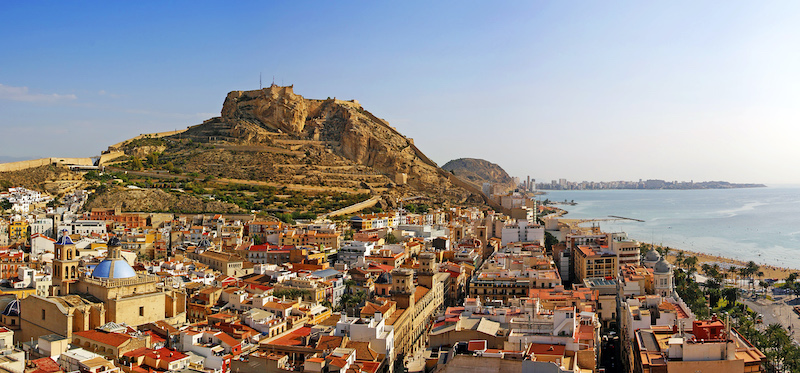
This sun-drenched coastal city on the Costa Blanca has a blend of history, culture, and stunning natural beauty. As you stroll through its narrow streets, it’s impossible not to be instantly captivated by its unique charm.
Alicante has its roots in Iberian times and was trading as far back as the 8th century BCE. Its ancient past is evident in its well-preserved historic center, known as the Barrio de Santa Cruz. As you wander through the cobbled streets, it’s easy to be enchanted by the whitewashed houses, quaint plazas, and hidden alleyways adorned with colorful flowers.
Alicante’s most iconic landmark is the Santa Barbara Castle. Perched high on a hill, this castle is an impressive fortification with breathtaking views of both the city and the coastline. To get there, you can either take a leisurely half-hour hike up or hop on the elevator to reach the castle without breaking a sweat.
Alicante is also famous for its beautiful beaches, including the popular Playa San Juan and Playa de Postiguet. They both have golden sands and crystal-clear waters and are perfect for a day of relaxation – although at the height of summer, beaches here will be crowded. Next to the beach is the city’s seaside promenade, Explanada de España, perfect for stroll among palm and ficus trees and a coffee break.
The bustling Mercado Central is a great place where you can sample local produce, such as cheeses, and cured meats. For a sit-down experience, you can try El Chaflán de Luceros and the more upscale Templo Restaurante.
What to eat in Alicante: Alicante is also known for its exquisite Mediterranean cuisine, including dishes like arroz a banda (rice with seafood) and paella Alicantina. This type of paella is slightly different from paella Valenciana, which comes from the city of Valencia further north and is considered to be the most authentic paella. And don’t forget the turrón, nougat that comes in either soft or hard versions. (Contributed by Valencia Revealed)
Almería
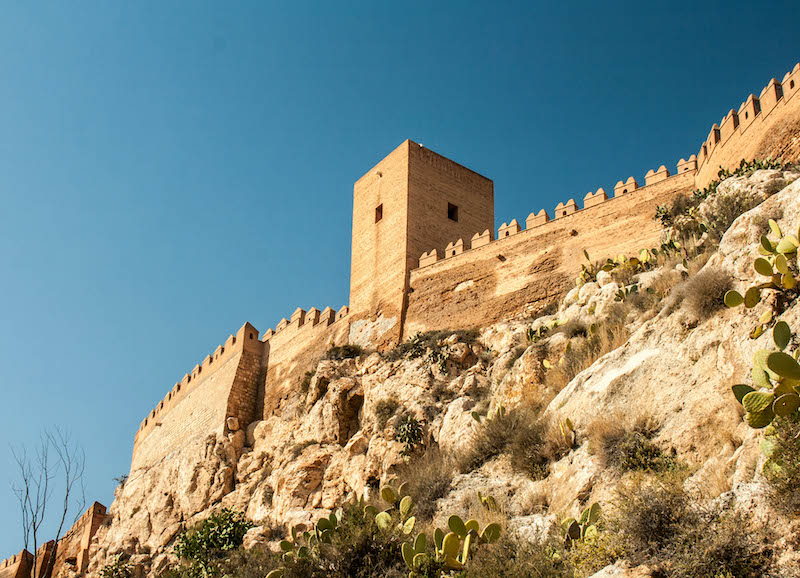
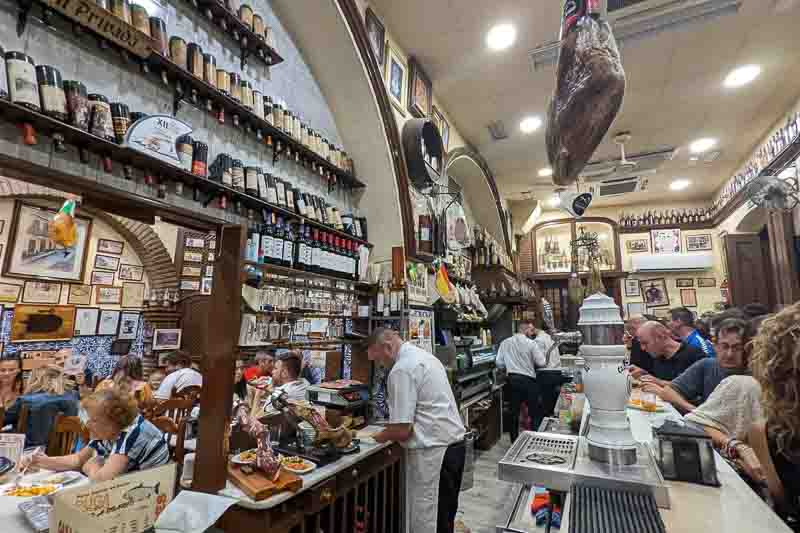
Directly on the Mediterranean Sea and with more than 3000 hours of sunshine a year, the city of Almería is famous for its weather, its lack of water – and the Spanish Civil War. Exploring the war’s history is one of the best things to do in Almería, and the tunnels beneath the city, once used as refuges, can be visited (on a guided tour only).
Almería’s Alcazaba fortifications might not be as stunning as those of Seville or Granada, but the structure provides stunning views and the Cathedral is unique – it was designed to protect against Barbary pirate attacks.
Literature fans can follow the life and times of Federico Garcia Lorca, the famous Spanish poet assassinated at the beginning of the Civil War. He may have been born in Granada but spent much of the rest of his life here in Almería.
Movie fans can scout some of the many film locations in Almería, which is also known as the “Hollywood of Spain”. In the late 20th century, this is where many “spaghetti westerns” were filmed, but the city and its environs also has a nobler cinematic reputation as the location for scenes from such notable films as Game of Thrones, Lawrence of Arabia, The Good, the Bad and the Ugly, Indiana Jones and the Last Crusade, and James Bond’s Never Say Never Again, to pick just a few from a very long list.
What to eat in Almería: See if you can find a tapas bar that serves the local chérica, a thin slice of toast smothered with aïoli sauce and topped with… whatever’s available, like ham, or tuna or anchovies.
There’s a superb tapas scene in this city, with a good mix of bars with free and paid-for tapas to visit in the Old Town. You’ll want to sample Casa Puga but early, as soon as it opens, as there’s ALWAYS a line to get in. (Contributed by Sarah Carter of A Social Nomad)
Ávila
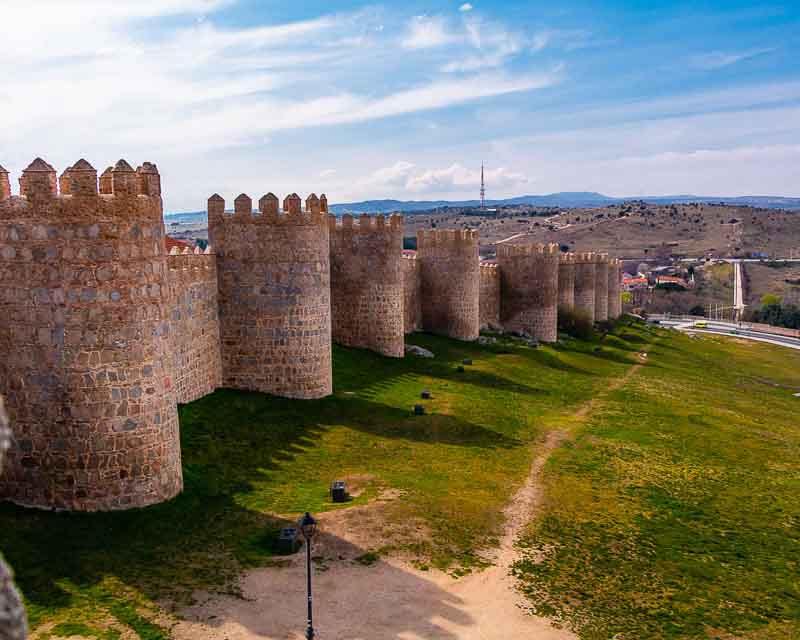
The Spanish city of Ávila is in the heart of the country, in the province of Castile and León, a city of Spain that is famous for its historical sights – medieval city walls, Romanesque churches, medieval monasteries, and cobbled streets. It received UNESCO World Heritage status in 1985 and you’ll find plenty of cultural things to do in Ávila, one of the most beautiful cities in Europe.
Ávila is a perfect day trip from Madrid. It is an hour’s drive, or just over that with one of the many trains that connect the two cities daily.
The medieval city walls of Ávila are the most complete fortifications in all of Europe. Like many fortifications in Spain, they were built during the 11th century to protect residents from attack by the Moors. Today, the well-preserved walls are one of the main tourist highlights of Ávila.
These imposing walls are designed as irregular rectangles and are around 2200 meters (2400 yd) in length. You’ll get a breathtaking panoramic view of the Ávila Cathedral, the Plaza del Mercado Grande and the surrounding Spanish countryside. Just be aware that there are two distinct sections of the wall and each has separate entrances.
Avila is the birthplace of one of the most revered Catholic saints, Saint Teresa. The Santa Teresa de Jesús convent stands on the site of her birthplace and is a must-see attraction while in Ávila, with its beautifully ornate chapel and small museum depicting her life and her work.
What to eat in Ávila: To sample some mouth-watering local specialties visit Restaurante Alcaravea near the Ávila Cathedral. If you’re a meat-eater, try the famous chuletón de Ávila, a large T-boned steak (from a breed of local cows) so delicious it is garnished only with salt. (Contributed by Moumita & Sankha from Chasing the Long Road)
Barcelona


Any list of famous cities in Spain will have Barcelona near the top. is one of the most beautiful and culturally rich cities in Spain. Located in the northeast of the country, in the region of Catalonia, Barcelona is on the Mediterranean and within driving distance of France.
Many people here speak Catalan as well as Spanish. The Catalan language was suppressed under the Franco regime of the mid-20th century but has since recovered, and Catalonia periodically attempts to secede from Spain, so far unsuccessfully.
Barcelona has a world-famous art scene, and it has an unparalleled collection of buildings designed by modernist architect, Antoni Gaudí. His most iconic work is the yet-to-be-finished La Sagrada Familia cathedral, with its intricate, larger-than-life Nativity and Passion facades. He also designed Park Güell, the hilltop green space filled with imaginative benches, columns, and arches with sweeping views over Barcelona.

Pablo Picasso also notably spent his adolescence in Barcelona, honing his skills and developing into the master he would one day become. You can see an impressive collection of his works at the Picasso Museum, which follows his evolution as an artist through early landscape paintings, pieces from his Blue period, and Las Meninas.
For more stunning views over the rooftops of Barcelona, enter Barcelona Cathedral in the Gothic Quarter and take the elevator to the top. From the roof, you’ll have a 360-degree view of one of the country’s prettiest cities, which allows you to see out to Montjuic Hill and over many of Gaudí’s quirky rooftops.
Finally, it would be remiss to visit Barcelona and not participate in the vibrant nightlife. Start with an atmospheric walk down Las Ramblas before eating some delicious tapas in the El Born district. Try the patatas bravas and cured meat, either on your own or during a tapas tour.
What to eat in Barcelona: While you’ll find wonderful regional food – try the excellent 7 Portes restaurant in Barceloneta for some delicious seafood paella – Barcelona is a great place to try some Catalan specialties you won’t find easily in the rest of Spain.
Pa amb tomàquet, or bread with tomatoes, is just that, bread scrubbed with a bit of garlic and fresh tomatoes: it’s ubiquitous and rarely will it be absent from a Catalan table. Another famous dish is the Fideuà, the local equivalent of paella, but made with noodles instead of rice. (Contributed by Theresa McKinney of Wanderlust)
Bilbao
Bilbao is one of the most interesting cities in Spain, located in the Basque region in the north and once the heartland of the Basque independence movement. After years of being a no-go zone, peace has brought prosperity and turned Bilbao into a thriving and lively city. It has excellent architecture, delicious food, and is known for exporting chefs.
One of the city’s main attractions is the Bilbao Guggenheim Museum, which was designed by Frank Gehry and opened in 1997. But the best way to take a bite out of Bilbao is to walk its streets, particularly rewarding if you catch the city on a bright spring day.

Bilbao is a city with a rich culture and culinary heritage, and it has managed to thrive despite its tumultuous past. It is one of the most visually stimulating cities in Spain, with a certain contemporary nonchalance that casually throws out ultramodern structures into the midst of classical monuments. The best way to enjoy this unusual city is to walk its streets, take in the contrasts and corners, and sample the delicious food.
What to eat in Bilbao: Bilbao has some of the best food and products in the world, and the Basque region is famous for its culinary expertise, with Basque chefs prized around the world. The freshness of the produce and the peculiar quality of the rain-fed grass gives food a deep, full taste.
The region is also famous for pintxos, which are similar to Spanish tapas but are mounted on a piece of bread and usually held together by a toothpick (they can be built quite high). Anything goes on a pintxo, from baby eel to egg or mushrooms. The flavors have to marry well, and it has to look pretty. Enjoy a traditional txikiteo with a group of friends: it’s the Basque version of a pub crawl, with successive stops in bars (this is where you eat pintxos) and a little drink.
Burgos
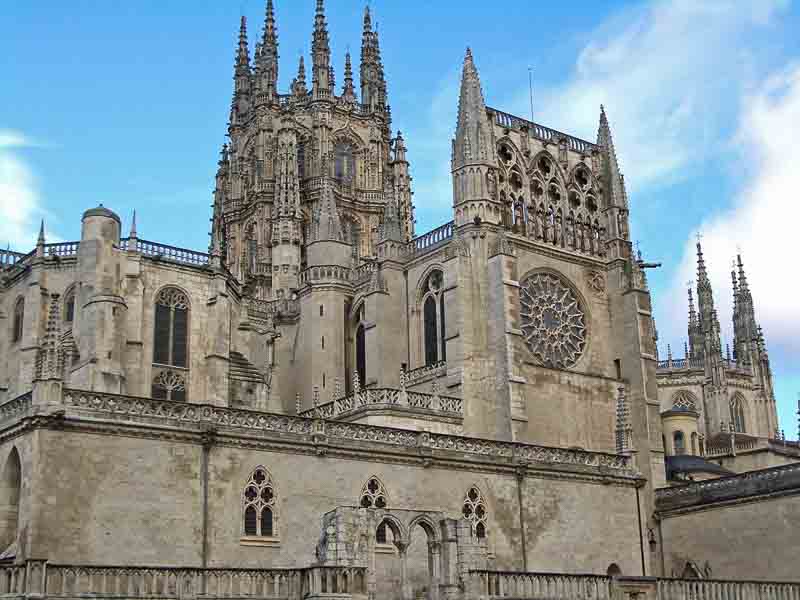
Burgos is in Castile and Leon in northwest Spain and the main reason to visit is the stunning UNESCO-listed cathedral. From the 10th to the 15th centuries, Burgos was the capital of the Kingdom of Castile. Its position as the capital, the fact that it was a major stop on the pilgrimage route to Santiago de Compostela, and its monopoly over the merino wool trade made it an important and affluent city. This can be seen in the buildings and architecture of the city today, of which the Gothic Cathedral of Burgos, one of Spain’s best Gothic structures, is the best example.
History is everywhere in Burgos. The city still has remnants of its 13th-century city walls, and its most spectacular gate is the Arco de Santa Maria (Santa Maria Gate), one of the city’s most important landmarks.
Just outside Burgos are two beautiful examples of Gothic architecture. One is the 12th-century Monastery of Las Huelgas, which also has a museum of religious art and objects. The other is the Cartuja de Miraflores, known for its stunning altar, one of Spain’s most beautiful Gothic pieces.
As in most old Spanish cities, the Plaza Mayor, or main square, plays a role. Burgos is no different, and the square is the heart of the city, a perfect place to sit and people-watch. It is surrounded by beautiful buildings, including the Town Hall and the Casa del Cordón, perfect for enjoying a coffee or a meal. Walk off the calories on the tree-lined Paseo del Espolón, the most popular spot in Burgos for a paseo, or stroll.
What to eat in Burgos: Burgos is famous for its queso de Burgos cheese (soft, white and mild, often eaten as a dessert) and for its black pudding, or morcilla de Burgos, not to everyone’s taste. Fortunately the city is also known for lamb grilled in wood-fired ovens and for fish. After your meal, try “grandfather’s desert”, made with cheese, honey and nuts, usually walnuts and almonds.
For roast lamb and other traditional foods, consider Restaurante Casa Ojeda. Or for a unique take on Spanish food, nothing beats El Huerto de Roque (make sure you reserve!) (Contributed by Kristin Krogh Dahlstrom of Scotland Less Explored)
Cádiz
When it comes to historic Spanish cities, you cannot do better than Cádiz: it is the oldest continually inhabited city in Europe, with a history dating back to 1104 BCE. It has been a major port since ancient times and the modern city still has a very cosmopolitan feel. It is not as busy or touristy as other Spain cities, it is still easy to find accommodations, and there are plenty of attractions.

Two of the best things to do in the city are to explore Cádiz architecture and beaches. Cádiz Cathedral was built between 1722 and 1838 and is a beautiful example of a Roman Catholic church in Spain. It is also famous as “The Cathedral of The Americas”, since it was partly financed by America.
Besides beautiful churches, Cádiz allows for relaxation at sandy beaches such as La Caleta. You can swim in one of the southernmost places in Spain and admire the historic fortress by the coast. The Castle of San Sebastian is on a tiny island connected to the main city by a bridge.
If you need a place to stay, try the Hotel Boutique Convento Cádiz. You will fall in love with the internal courtyard and architectural details. This affordable 1-star hotel is also home to the monks who live in this beautiful 17th-century convent.
Of course make sure you also visit Cádiz Old Town, which is abundant in historic landmarks and great restaurants.

What to eat in Cádiz: For starters, try the very typical tortillitas made with baby shrimp – cristy and fresh. Cádiz is also famous for stews, one of which is potatoes with chocos (cuttlefish), in a tomato-based sauce usually garnished with peppers, onion and garlic. It is a traditional dish whose recipes are handed down the generations within families, and each family may have its own take on it.
For some extraordinary food, try Restaurante El Faro de Cádiz, run by three generations of the same family, set on continuing the culinary traditions of the city. You can try their delicious Dorada de Estero a la Cádiz or one of the most beautifully served desserts. (Contributed by Paulina from the UK Every Day)
Córdoba

Córdoba is one of the most beautiful cities in Andalusia, a mid-sized city in southern Spain, with a rich history and a TON of charm in its streets.
The Muslim Moors stayed in Andalusia for nearly 800 years. When they completed their Mezquita, or mosque, in 988, it was the second largest mosque in the entire Muslim world.
When the Christians re-conquered the area, the mosque was not destroyed but instead converted to a cathedral. The interior today is a stunning mixture of Islam and Christianity.
The mosque has over 800 candy-cane striped double arches, all aligned in perfectly symmetrical rows and columns that fill the entire building – the striking red and white arches seem to go on forever. Christians added small chapels to the exterior and a nave and transept right in the center of the mosque-cathedral.
Besides the Mezquita, Córdoba is most known for her patios – beautiful, small courtyards filled with flowers and greenery, with flowers spilling over ledges, flowers in blue flower pots that hang in rows high up the walls, with extra little adorable details like cobblestoned flooring, balconies, arches, wells, ladders, and other accents adding visual interest. The Patio Festival takes place in May and highlights 50+ gorgeous patios, but many are open throughout the year for visitors to admire.
As you’ll notice when spending one or two days in Córdoba, the flower-filled patios in Córdoba seem to spill over onto the streets, where you’ll regularly see flower pots filled with geraniums hanging on walls or sitting on window sills, a lovely accent to the white walls and yellow trim of the city.
What to eat in Córdoba: Make sure you try salmorejo when you’re in Córdoba. This traditional cold soup is made with pureed tomatoes, bread, garlic, and vinegar. It’s similar to gazpacho, but thicker and creamier, and served with small bits of hard-boiled egg. (Contributed by Stephanie of The Unknown Enthusiast)
Girona

Less than an hour’s train ride from Barcelona and its amazing attractions, the city of Girona is special and full of worthwhile attractions.
The city has a rich history, reflected in its striking architecture. Walking through the well-preserved Old Town will unveil details ranging from Romanesque through Gothic. Small, narrow cobblestone streets snake up and down the medieval city center, enclosing the entire historic district.
The city has maintained its historical appeal but also has a lived-in atmosphere that locals love to enjoy. You’ll feel this everywhere, around the beautiful promenades and squares, outdoor cafés and public markets, and other historic buildings and gathering places.
Its Jewish Quarter, or Call, dates back to the Middle Ages and is one of the best-preserved Jewish quarters in Europe. Visitors can explore its alleyways and learn about the city’s rich Jewish history.
An unexpected attraction is the Pont de Ferro, or Iron Bridge, over the River Onyar. The architecture along both riverbanks is unusual, and the bridge can boast its engineer was none other than – Gustave Eiffel, of Eiffel Tower fame.

The stunning Costa Brava coastline, a string of hamlets and towns for easy outdoor exploration and day trips, makes Girona a fantastic for the region.
What to eat in Girona: Girona is for foodies and the city is full of excellent restaurants, including a number of Michelin-starred establishments that take advantage of farm-to-table ingredients to bring the best tasting food in the region. Local products include prawns from Palamós, anchovies from L’Escala, Fesol d’ull ros beans, and Pals rice, and you’ll find great food along the many public squares lined with fantastic eateries. (Contributed by Noel Morata of Travel Photo Discovery)
Granada
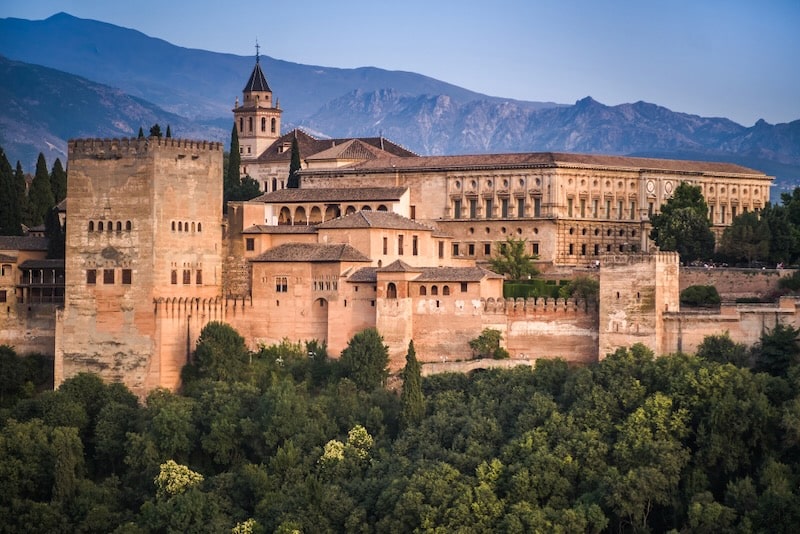
Set against the backdrop of the scenic Sierra Nevada mountains, Granada is only an hour’s drive from the “Costa Tropical”, just east of the Costa del Sol. As it is a special city that tops the list of must see places in Spain, you should ideally set aside 2 or 3 days in Granada to visit the UNESCO sites and explore the city at your leisure.
The Sultans of Granada made their home here in the 13th century, creating one of the world’s greatest wonders, the Alhambra Palace. It stands as a watchdog over the city, an extraordinary complex of Moorish design, with courtyards and ornamental gardens ringed by ancient fortifications. For peace of mind, book tickets to the Alhambra well in advance.
The beautifully preserved Old Town of Granada is full of medieval treasures, a compendium of neighbourhoods where the Moors, Christians and Jews lived. Imagine yourself back in the Middle Ages as you wander the atmospheric streets – enter the labyrinth of whitewashed little houses spilling down the hillsides, browse the bazaars, and relax in the pools of an authentic hammam.
Granada is more than a picture-perfect history book destination. It’s a lively, easy-to-get-around city full of local Spanish residents and university students (not a mega tourist trap). Admittedly, the hop-on-hop-off bus is a leg-saving way of getting around, and a convenient and central area to stay is around Bib-Rambla plaza.
What to eat in Granada: Given Granada’s history, it’s not surprising to find Arab and Jewish culinary traditions mixed in with Spanish ones. It is a real foodie paradise where tapas are almost a religion. You’ll be served something tasty every time you sit down for a drink! The city has dozens of pretty plazas, tree-lined squares where restaurants and cafés have street terrace tables for al fresco dining.
Find a bodega to savour local produce (cured ham, sausage, cheeses) with a glass of wine, enter an Arabian eatery for a taste of North Africa, or a trendy restaurant for fusion cuisine. For raciones, which are larger versions of tapas, head for Bodegas Castañeda – also good for charcuterie boards and wines. (Text by Karen Marco of Kali Travel)
Jaén

Jaén is an enchanting inland city in Andalusia, only an hour from Granada and two hours from Málaga’s busy sunshine coast. Yet few visitors come here, despite its beauty and incredible attractions.
An imposing Renaissance cathedral can be found in the historic center – the cathedral claims to exhibit the Holy Veil. Legend says that Saint Veronica used it to wipe off the blood from the face of Jesus. If you happen to visit Jaén during the Easter processions, you might get a glimpse of it as it is only viewable to the public on Good Friday.
The Arab Baths are also top Jaén attractions, and you can see them under the majestic Villardompardo Palace. They are among Spain’s largest Arab Baths and are particularly noteworthy, with their star-shaped ceiling windows allowing in beautiful patterns of natural light.
Make sure you go for a walk up the Santa Catalina Hill to the medieval castle above the city, especially seen at sunset from the big cross, with sweeping views of the city and the surrounding olive groves.
What to eat in Jaén: The province of Jaén one of Europe’s biggest olive oil producers, so try to make time for an olive tasting tour while visiting the city. For vegan burgers, have lunch at Hamburguesería Goiko or tapas at El Biscúter. (Contributed by Linn Haglund of Amused by Andalucia)
Las Palmas de Gran Canaria

Picture this perfect vacation day: a morning museum exhibition followed by a delicious lunch on a seafront terrace; a swim in the Atlantic in the afternoon and perhaps some shopping until sunset cocktail time; and finally, a lively neighborhood in the evening with plenty of options for dinner and drinks. Sounds nice? Welcome to Las Palmas de Gran Canaria!
The capital city of Gran Canaria, one of the biggest of the Canary Islands, allows for this perfect day, all within walking distance.
Start the day in colorful Vegueta, the oldest neighborhood in the city, bursting with museums and historical buildings: make sure you include Santa Ana Cathedral and San Antonio Abad Square in your city walk. Check out the exhibition in the Canarian Museum to learn about the history of the city, or the Atlantic Center of Modern Art (CAAM) if you’re in a more contemporary mood.
After feeding your cultural soul, how about some local shopping to take home some souvenirs?
Head out to Triana, whose stores are located inside emblematic buildings of the late 19th and early 20th centuries.
Fancy a swim? Walk to the beach Las Canteras, considered one of the best urban beaches in the world! The area around Las Canteras promenade is filled with beachfront terraces, restaurants, and bars (Valentina’s homemade vermouth is delicious) in a chilled island atmosphere that will end your day(s) perfectly.
What to eat in Las Palmas: Given its proximity to Africa and the fact that the Canaries are islands surrounded by ocean, geographical factors are bound to influence the food and you’ll notice that when you eat there. A typical fare is mojo, or sauce, with an olive oil base and peppers – green or red, depending on whether you’re having greed or red mojo – along with garlic, paprika and spices. If you’re craving Canary tapas, don’t miss Triciclo for some typical gastronomy dishes with a modern twist: patatas bravas con mojo are a must-try. (Contributed by Inês from Random Trip)
León
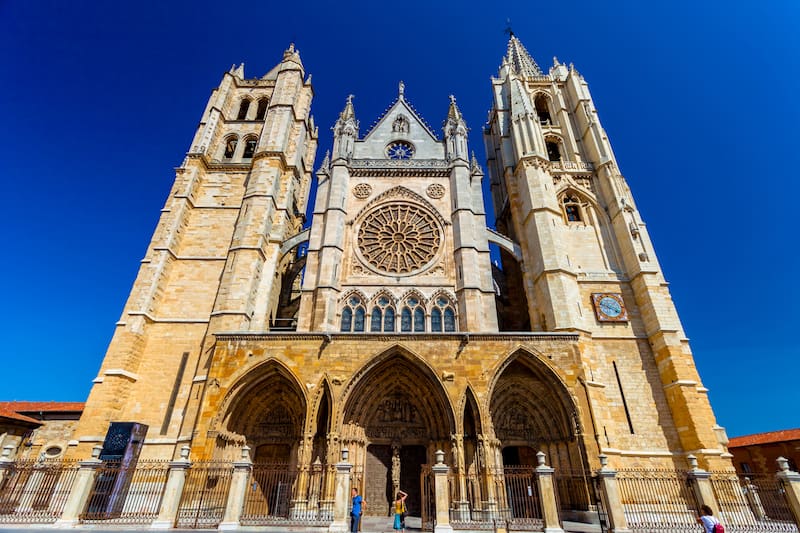

León is one of the most famous places in Spain for its Easter Semana Santa parades, cathedrals and for being along the pilgrimage route to Santiago de Compostela. This fairly small city in northwestern Spain is easy to walk around, and it is very safe to visit.
At Easter time, the city’s spectacular Semana Santa celebrations bring in crowds from all over for 30 processions over ten days. The include thousands of friars wearing ceremonial gowns, trumpet players, and floats depicting biblical scenes. It can get very busy so make sure you visit during the first few days to avoid the largest crowds. Another option is to book one of the rooms at NH Collection Leon Plaza Mayor, which overlooks the procession route.
Leon is home to many stunning buildings. The area around Plaza Mayor is pedestrianised and León Cathedral, Basilica of San Isidoro and Convent of San Marcos are all within a short walk.
What to eat in León: Dried beef, or cecina, has its own designation of origin so you must try it while here. Perhaps less common is botillo, pork intestine stuffed with meat, very typical of the region. For traditional cooking, visit Carea Bistro, or have one of the many menus of the day – Menú del Día – served up to pilgrims on the road to Santiago. (Contributed by Kristin Krogh Dahlstrom of Scotland Less Explored)
Madrid

Madrid is definitely one of the most beautiful cities in Spain, with plenty to see and do.
Starting with the Plaza Mayor, the heart of Madrid’s Old Town, you’ll witness the city’s stunning architecture and street performers before walking down to the Mercado de San Miguel, a historic market that offers a wide variety of local food and drink options.
This part of town also houses the Royal Palace of Madrid, which is one of the largest palaces in Europe and a significant landmark in the city. The palace offers guided tours, and visitors can explore its grand halls and opulent decor.
Madrid is a haven for art lovers, with enough museums to keep you busy for days. Its “Golden Triangle of Art” contains three world-renowned museums: the classic Prado, the modern Reina Sofia and the Thyssen-Bornemisza, which falls in-between. If your feet hurt from all the walking, head for the nearby Retiro park and rest in the shade or by the lake.
In the evening, head to trendy Malasaña for dinner and drinks, with its bohemian vibe and café culture. Or for a stunning view of Madrid, go to the rooftop bar at Círculo de Bellas Artes and watch the sunset. Top off your day with a flamenco show. No, it’s not typically from Madrid, but the finest Andalusian performers perform in the capital.
Madrid is a large city, but its main sights are in a relatively concentrated area, so even if you only have one day in Madrid, it is worth making the effort to see as much as you can.

What to eat in Madrid: Cocido Madrileño is a winter stew that is perfect for those chilly Castilian days. Madrid is a perfect city for tapas, so do try such popular ones as patatas bravas, served with a garlic or hot sauce, tortilla española (Spanish potato omelet with or without onions), and croquetas, or croquettes, with ham or chicken or tuna. Don’t neglect the chocolate con churros, a sweet hot chocolate with elongated donut-type pastries. Try these at the Chocolatería San Ginés right next to the Plaza Mayor.
Málaga

Málaga, located on Spain’s Costa del Sol, is not only one of the best beach cities in Spain but an important historical and foodie destination.
The city has been ruled by various civilizations throughout history, including the Romans, Moors, and Christians. This has resulted in a unique blend of architectural styles, including Roman theaters, Moorish castles, and Gothic cathedrals.
The Alcazaba de Málaga fortress palace dates back to the period of Muslim rule in Andalusia and is characteristic of that era – Andalusian courtyards with fountains and manicured gardens, detailed Moorish architecture and fantastic city views.
The Castillo de Gibralfaro is one of the best castles in Malaga province, built to protect the Alcazaba from attack. It overlooks the entire city and offers the best panoramic view of Málaga. While the structure may date back to the 14th century, it was clearly occupied long before, as evidenced by Phoenician and Roman artefacts and ceramics.
Málaga is home to some of the most famous art museums in Spain. The most notable of these is the Picasso Museum, which houses a collection of over 200 works by the famous artist. Picasso was born in Málaga, and the museum provides a unique insight into his life and artistic career. Other notable museums in Málaga include the Carmen Thyssen Museum, which houses a collection of Spanish art from the 19th and 20th centuries, and the Centre Pompidou Málaga, which is a branch of the famous modern art museum in Paris.
What to eat in Málaga: Among the traditional dishes you might want to try are espetos de sardinas (grilled sardine skewers), ajoblanco (cold almond soup), and berenjenas con miel de caña (fried aubergines with sugar cane honey).
The best place to eat authentic traditional dishes on a budget is Mercado de Atarazanas (Málaga’s food market). A few minutes’ walk from Málaga Cathedral is Casa Lola, perfect for tapas. (Contributed by Cristina of My Little World of Travelling)
Mérida

Mérida is an incredibly underrated city in Spain jam-packed with Roman ruins. In fact, it is the city with the most and most well-preserved Roman ruins in the country.
Situated less than an hour from the Portuguese border in the Extremadura region, you could easily add it to your Portugal itinerary. There are many amazing things to do in Mérida Spain and many of the sites are on the UNESCO World Heritage List.
The main archaeological complex includes the Roman Theater, the Amphitheater, and an old Roman villa, making for a spectacular stroll worthy of several hours.
The city has additional Roman ruins worth a visit. Walk along the 1st-century aqueduct, which once stretched for 10 kilometers (6.2 mi). You can still get a glimpse of its former grandeur on the outskirts of Mérida’s Old Town.
Mérida is also home to one of Spain’s longest Roman bridges, which stretches nearly 800 meters (875 yd). Next to the bridge, you can explore one of the city’s Moorish remains, the incredible Alcazaba de Mérida.
What to eat in Merida: Given that Mérida is not a major tourist destination, most specialties will be local, so you won’t have to go far for authentic dishes. Many of these will be made of pork, whether barbecued or stewed. Cold vegetable soups are also popular in Mérida, including the gazpacho-like salmorejo.
There is also a strong influence of nearby Portugal, like bacalao dorado, a type of fried cod served with fried potatoes. For vegetarian food and something different, try Sawadi, run by a Spanish-Thai couple. (Contributed by Linn Haglund of Brainy Backpackers)
Oviedo


Backed by lush mountains and just 30 minutes from the Cantabrian Sea, Oviedo — the capital of the autonomous Asturias community — is one of Spain’s greenest city breaks.
Renowned for its impressive architecture, diverse styles such as Gothic (Oviedo Cathedral) and Baroque (Camposagrado Palace) sit side by side. But, the most fascinating architectural feats are found on the city’s fringes, where well-preserved pre-Romanesque churches – part of the city’s UNESCO World Heritage Site – can still be admired. Dating back to the mid-800s (and the Kingdom of Asturias), you’ll want to pre-arrange a guide to enter inside these monumental buildings.
While there are a handful more things to do in Oviedo if time allows — such as seeking out the city’s statues (there are close to 100 sculptures) or admiring the vast collection at the Fine Art Museum — Oviedo’s charm is found while wandering the spotless pedestrianized Old Town, often voted the cleanest Spanish city.
What to eat in Oviedo: Oviedo’s hearty dishes, dairy products, and sidra (cider) fill the provincial table. Don’t miss local favourites such as fabada asturiana (a hearty bean stew) or cachopo (breaded and stuffed veal steaks). A reservation at La Corte de Pelayo, celebrated for its traditional dishes, is best made in advance (solo diner bookings are accepted online).
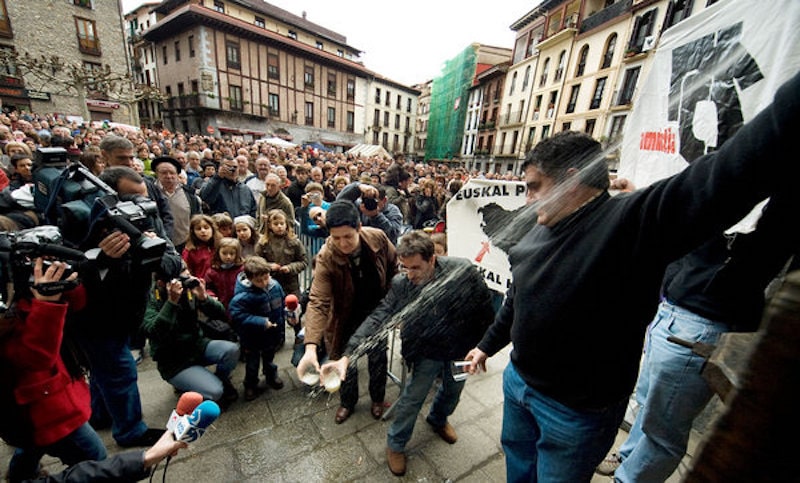
After dinner, seek out the region’s famed cider, which is organically produced without gasification. However, what makes Oviedo’s sidra scene so unique is the escanciar style serve. Poured from a great height by the server, this unique method allows the alcohol to gain some natural fizz when hitting the slightly tilted glass. Pair your sidra with one of the region’s 40 cheese styles (the blue Cabrales is one of the most celebrated) for a truly regional experience. (Contributed by Daniel James Clarke of Dan Flying Solo)
Palma de Mallorca
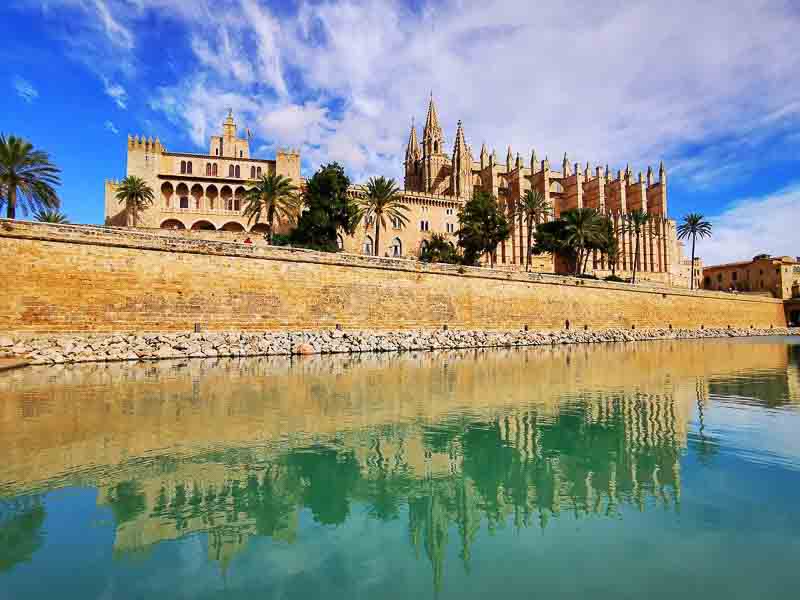
Palma makes a great weekend trip from Barcelona or Valencia by overnight ferry, or by plane from other European locations.
The magnificent Cathedral-Basilica of Santa María de Mallorca is a must-see, and although you can admire the striking architecture from the outside (especially from across the lagoon in the Parc de la Mar), it is well worth the small ticket price to go inside.
The nave of the cathedral is 44 meters (145 ft) tall, making it one of the tallest Gothic cathedrals in Europe, and the Rose Window, known as the Gothic Eye, is 14 meters (46 ft) in diameter. During the summer you can also get tickets for the roof terrace to examine the architecture more closely and enjoy views of the city below. Next to the cathedral is the Royal Palace of La Almudaina, once a Moorish citadel, and now an official residence of the royal family.
Aside from the Palace and the Cathedral, Palma’s Old Town is a maze of streets filled with unique buildings, some of which date back to the Roman Empire, while others display their Moorish, Gothic or Modernist roots.
Another wonderful thing to do in Palma is to enjoy the water – whether that is walking along the Passeig Marítim boardwalk on the seafront, heading to one of the beaches or taking a boat trip to explore the coastline and do some snorkelling.
Renting a car is best if you want to explore more of Mallorca to visit many of the beaches and coves just an hour’s drive from the city, take a day trip to the Drac Caves or ride the historic Ferrocaril de Sóller to Soller.
What to eat in Palma de Mallorca: Make sure you try an ensaimada mallorquina, a sweet Mallorcan spiral pastry, and some sobrasada, a soft spicy chorizo-like sausage which you can spread onto bread and devour. Bar España is great for tapas and Fornet de la Soca is a must for pastries. (Contributed by Claire Sturzaker of Why Visit Barcelona)
San Cristóbal de la Laguna
If you are looking for a gorgeous Spanish city with an island and Latin American vibe, San Cristóbal de la Laguna (or simply La Laguna) has to be on your list.

Located in the north of Tenerife and a short distance from the island’s capital, Santa Cruz, La Laguna is a UNESCO World Heritage city that boasts stunning pastel houses, historical mansions, and a grid street layout that will have you feeling like you’ve stepped into a time machine.
It’s the first “ideal city” that was built according to philosophical ideas that supported wide streets, and open places. It’s also the first unfortified town with a grid model. And basically served as Spain’s laboratory during the colonial times for cultural and architectural changes before they were brought to The Americas to build colonial cities. In other words, La Laguna is the birthplace of most Spanish colonial cities in Latin America.
Besides the historical importance of the city, it also has all the picturesque elements of Hispanic architecture. The streets are pedestrian-friendly, and it’s a bustling town filled with lively bars, cafés, and boutique shops to buy unique Spanish souvenirs.
To fully appreciate La Laguna, focus on the Old Town and historic center, which is the area listed by UNESCO. Luckily, the center is incredibly small and walker-friendly, so you can easily see all the highlights in just one day. Take a stroll around Obsipo Rey Redondo Street, and you’ll pass the most important museums, churches, and buildings.
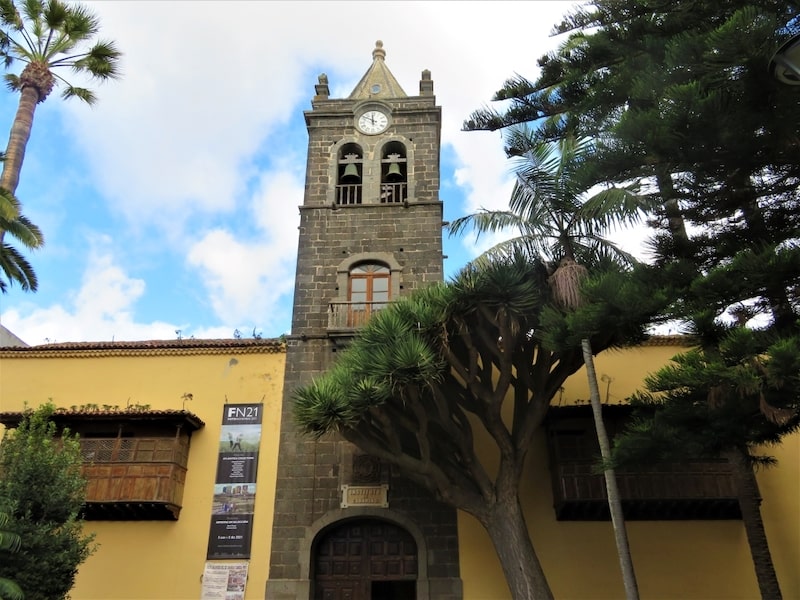
What to eat in La Laguna: As in other parts of the Canary Islands, a must-try is the typical potato dish with mojo sauce. A great place to try these (and more delicious tapas) is Taberna Ossuna. (Contributed by Lara Hartog of The Best Travel Gifts)
San Sebastián

San Sebastián, one of the most beautiful Spain cities (locally called Donostia) is arguably also the best city in Spain for food. It is especially popular with visitors seeking a sophisticated gastronomy scene – and excellent beaches without the crowds of other coastal cities in Spain, particularly on the Costa del Sol.
There are three beaches in San Sebastián: La Concha, Ondarreta, and Zurriola. La Concha is the most popular with families because of its 1.5 km-long crescent shaped sandy beach and calm waters. Right next door is Ondarreta Beach, which is just as lovely, with super fine white sand and cafés, showers, and restrooms. Gros district has the wild surf beach, Zurriola, which has spawned several well-known surfing schools.
The beaches are where Spaniards head during the day, but the evening is when San Sebastián comes alive. Food is the main reason to come to San Sebastián – there are more Michelin stars here per square kilometer than anywhere else in the world!
The San Telmo Museum, located in the Old Town, showcases local Basque culture and history, perfect for anyone interested in Basque culture. You can also hike up Monte Urgull, a hill overlooking the city. It is home to a 12th-century castle, used to defend the city during medieval times. Visitors can take a guided tour of the castle and enjoy the panoramic views of San Sebastián from the top of the hill. On the way up, stop at the statue of Christ, the cannon battery, and the cemetery. The hike is not too difficult, and there are several picnic spots along the way, making it a great way to spend a day outdoors in San Sebastián.
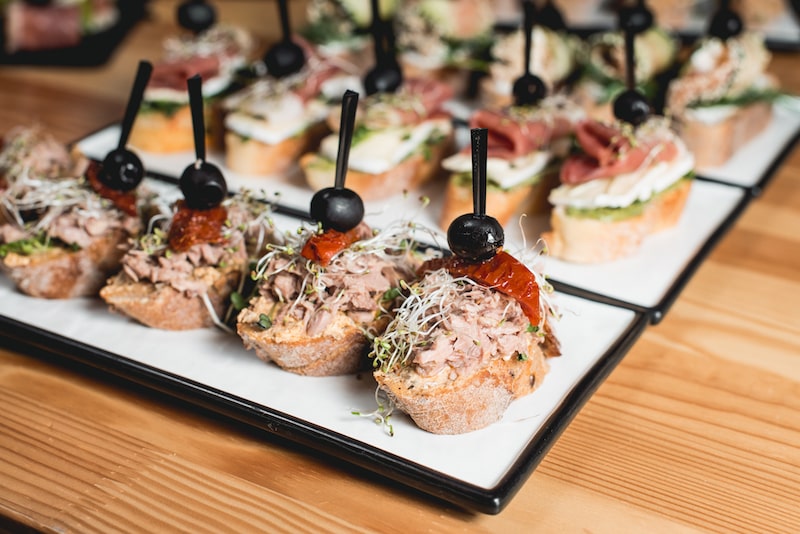
What to eat in San Sebastián: San Sebastián Pintxos (pronounced ‘peen-chos’) is the standout local cuisine, and pintxos are the Basque equivalent of tapas. The Old Town’s cobblestone streets are bursting with pintxos bars. A must-try is the local specialty, “Gilda,” a skewer of green olives, anchovies, and pickled peppers that packs a punch of flavor.
Early evenings can be spent wandering through the narrow lanes, hopping between pintxos bars, trying different pintxos. Tucked away near the San Telmo Museum is the best-known pintxos bar, La Cuchara de San Telmo, on Santa Korda Kalea. The next local favorite is Gandaris Jatetxe, which becomes insanely crowded. It’s one of the few bars open in the afternoon, so you can start your pintxos crawl here and beat the crowds. (Contributed by Monique of Spain Travel Hub)
Santiago de Compostela

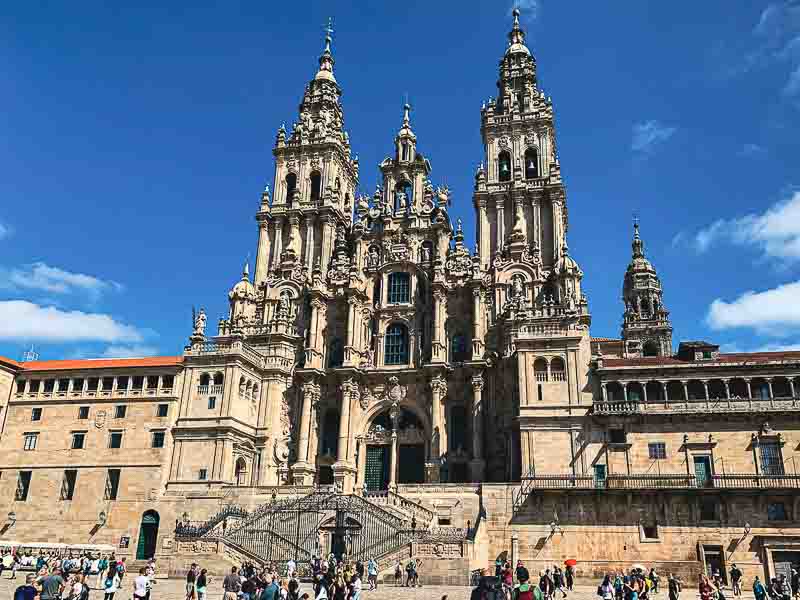

Santiago de Compostela is the lively capital of the Galicia region, in Spain’s far northwestern corner.
It is also one of the most famous Spanish cities for being the official ending point of one of Europe’s most renowned pilgrimages, the Camino de Santiago. Pilgrims walk hundreds of kilometers across Spain, France, Portugal, and beyond to stand in front of the Romanesque Cathedral of Santiago de Compostela. This beautiful church is the alleged burial site of the Apostle St. James.
While most pilgrims end their journey in Santiago de Compostela, some may feel called to walk to the “End of the World” along the Camino Finisterre Muxia, which starts from the cathedral and ends on the shores of the Atlantic Ocean.
Santiago de Compostela’s Old Town is a UNESCO World Heritage Site. The lovely cobblestone streets are filled with monuments, historical sites, and gardens, with street performers and musicians playing in green parks and narrow alleyways.
What to eat in Santiago de Compostela: Like most cities of Spain, Santiago has a fantastic culinary scene. For tapas, locally known as pintxos, head down Rua do Franco and wander from one tapas bar to the next. With its close proximity to the sea, don’t miss the chance to indulge in the many seafood-inspired dishes. And do try one of the city’s famous dishes of pimientos de Padrón, mild green peppers sautéed in olive oil and seasoned with sea salt. One of the best places to eat in Santiago de Compostela is the Mercado de Abastos. The fresh market has tons of food stalls and everything from bakeries to restaurants, and wine bars.
No matter how you get to Santiago de Compostela, it is by far one of the best cities on any Spain cities list. (Contributed by Megan J. Anderson of Packing Up the Pieces)
Segovia

Segovia might not be the first place that comes to mind when you think of the most beautiful places in Spain, but as soon as you disembark from the train and walk toward the astounding Roman aqueduct, you’ll be immediately entranced.
Built to carry water from the Río Frio to the city (its purpose remains unchanged today), the Segovia aqueduct dates back to the 1st century AD. It may not have the same fame and glamour as the Sagrada Familia or the Alhambra, but it is nonetheless one of Spain’s most impressive historical landmarks.
Straddling the appropriately named Avenida Acueducto, this feat of ancient human technology runs for 15 kilometers (9.3 mi) and has stood the test of time.
Another landmark that represents Segovia’s intricate history is the Alcázar. Built by the Berber Almoravid dynasty but seized when King Alfonso expelled them from the city, it overlooks Segovia. Not only does it boast Moorish architecture, but it also has remnants from past adaptations and expansions which took place during the 13th and 16th centuries.
Segovia’s ancient structures and historic buildings have given the city UNESCO World Heritage Status, and it is an easy day trip from Madrid.
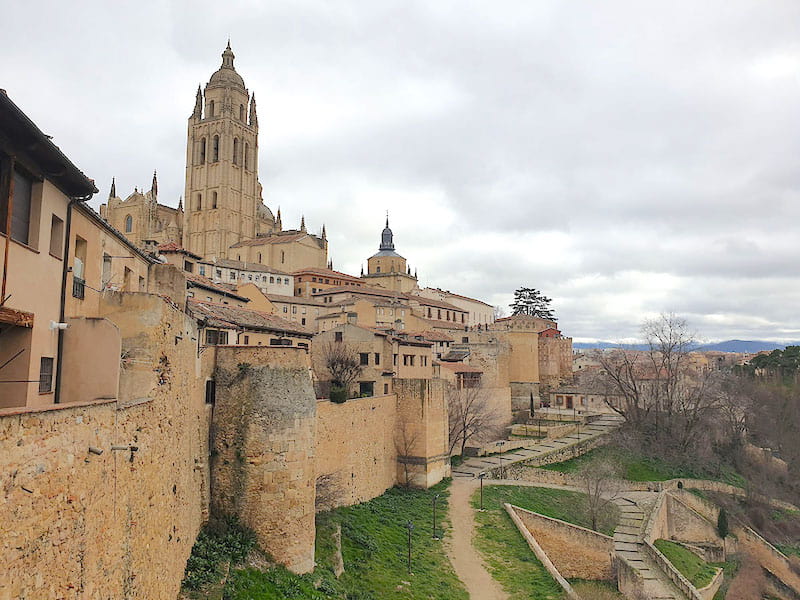
What to eat in Segovia: Segovia’s most famous contribution to Spain’s culinary culture is the cochinillo asado, or roast suckling pig. Those who do it well boast it is so tender they can cut it with a plate – no knife needed. If you prefer lamb to pork, then go for the lechazo. For dessert, it’s time for a Ponche Segoviano, a traditional pastry made with almonds, egg and cream. It was invented at Confitería El Alcázar, where you can still pick one up today. (Contributed by Claire Europe in winter)
Seville

Madrid and Barcelona might be the most obvious choices when visiting Spain for the first time, but many visitors consider Seville one of the most beautiful cities Spain has to offer. It just might captivate your heart.
Seville, locally known as Sevilla, is the capital of Andalusia, the southernmost region in Spain. It has a rich history and cultural heritage spanning 2200 years. The area’s first settlement dates back to the 8th century BCE, but the first town was founded some six centuries later. Romans, Vandals, and Visigoths ruled it for the next several centuries.
By the 8th century Seville was flourishing, both culturally and commercially, having come under Moorish rule which would last until expulsion by Christians some 500 years later.
During the 16th century, Seville experienced significant expansion when it became the center of exploration of the Americas. Christopher Columbus left from Seville for the New World and today, you can visit his tomb in Seville’s Cathedral.
The cathedral, its Giralda Tower, Alcázar Palace and Gardens, and the General Archive of the Indies are all UNESCO World Heritage sites and among the best things to do in Seville for history buffs and culture enthusiasts.
Seville Cathedral is the largest Gothic cathedral in the world. Equally stunning are the Alcázar Royal Palace and Plaza España.

What to eat in Seville: Andalusian food is among Spain’s most delicious. Tapas bars, traditional bodegas, and restaurants are on every street corner. Head to El Pimentón restaurant to taste homemade Andalusian food. Order salmorejo, gambas al ajillo, or carrillada to enjoy Andalusian flavors. For more upscale dining, choose the Michelin-starred Abantal. (Contributed by Milijana of World Travel Connector)
Toledo

Toledo is a day trip from Madrid, but a walk back in time. It is one of the best-preserved medieval walled cities, and a walk through Toledo’s Old quarter is to understand the three belief systems that shaped Spain: Islam, Judaism, and Christianity. There are sights that mark this city’s incredible journey through various ruling beliefs.
Few people travel through Toledo without stopping at a marvel of Christian architecture, the Toledo Cathedral. The Jewish Quarter of Toledo is believed to be one of the earliest Jewish settlements on the peninsula, a maze of streets and a great place to get lost. The light slanting through the maze of streets alone is worth a few hours of wandering.
You can feel the Moorish influence throughout the city, from the Arab walls and gates to tiny winding streets that keep the city cool. While the larger mosque was torn down, today you can visit the Cristo De la Luz mosque.
Even though the city’s main sights highlight its diversity, a bird’s eye view reveals how it all comes together in a magical tapestry. And there is no better place to see it than from the city’s public library.
The top floor of the library has a lovely small café and views for miles. You’ll find inexpensive drinks and snacks, making it the perfect place to watch an unforgettable sunset over a truly remarkable city.
What to eat in Toledo: Toledo is famous for its marzipan. Sweet shop windows are often full of figures and replicas of important city sites made from this sweet paste. Before you dive into the sweet, try Cervecería El Trébol. Located just a block off the main square, Plaza de Zocodover, El Trébol has delicious tapas and great craft beer to refuel after a day of exploring a magnificent city.
Valencia

Hardly any other Spanish city is as full of culture, history, and beautiful places as Valencia.
Valencia can be divided into three main sights: the picturesque historic city center, the modern city of arts and sciences, and of course, the region’s unique beaches. Your Valencia itinerary should ideally include a mix of all three.
Walk through the alleys of the historic center and discover the sights that await you here. Sip on a delicious ice-cold horchata, the region’s favorite drink, while exploring places like the cathedral, the UNESCO World Heritage-listed Silk Market, and other beautiful corners of the city.
Afterward, take an extended break on one of the city’s beaches. Let the Spanish sun warm you up or refresh yourself in the clear waters of the Mediterranean Sea. Alternatively, if the beach here gets too crowded, you can head to a more outlying stretch of coastline.
Finally, make sure you don’t miss the City of Arts and Sciences. In an almost futuristic landscape, you will find numerous cultural institutions such as museums, a 3D cinema, and one of the largest aquariums in the world.
Valencia is one of the most beautiful cities in Spain, and clearly offers an exciting mix of beautiful architecture, fascinating culture, tasty dishes, and picturesque beaches, so you certainly won’t get tired of it.
What to eat in Valencia: Paella, of course – the dish was born in Valencia, after all, although it has left its culinary mark on the entire country. Make sure you try it when you visit, for example, at the Central Market. (Contributed by Vicki Franz of Vicki Viaja)
The most beautiful cities in Spain: good for solo travel?
Spain is a perfect country for solo travel, and its cities are no different, whatever your age.
No one will care if you are by yourself, and restaurants and bars will welcome you. And Spain is quite a safe destination, with rare instances of violence. The major safety threat in Spain towns usually comes from pickpockets and a variety of tourist scams, so hang onto your belongings and take precautions in your hotel.
KEEPING YOUR BELONGINGS SAFE
I have two items that I always travel with to keep my belongings safe from pickpockets and thieves.
My Pacsafe cross-body bag: This is what I use during the day (I have three different models!) These bags are so light you’ll forget you’re wearing one – and they’re virtually impossible to get into.
My Sholdit scarf: This infinity scarf is the ideal dress item and lets you take your most important items with you even if you’re out for a stylish restaurant evening.
Spain has a tremendous history, with remains that in many places date back to Roman times, and the architecture of its cities reflects this history. Most cities are an incredible mixture of styles, from Roman, of course, but through to medieval, Gothic, Renaissance, Baroque, Classical, and many types of modern architecture, from Gaudí’s impossibly whimsical constructions to the latest Arts and Science district of Valencia. It is this diversity that makes the cities Spain beautiful.
Beyond their architectural value, the most visited cities in Spain are also often the ones with the best food. Spain is a culinary paradise, and many visitors come here to satisfy their taste buds.
Spain’s unique culture is another draw, from its famous flamenco song and dance to its bar-hopping customs and world-class art museums.
And of course, this is a coastal country, with some of the best beach cities in Spain overwhelmed by visitors during the summer months.
Visiting any of these 25 most beautiful cities in Spain will give you an overview of all the things people love about this country. You’ll understand why once you’ve been here, you’ll want to return.
And please – don’t forget your travel insurance before you go! Two outstanding insurers are for travelers are Visitors’ Coverage and SafetyWing – whoever you choose, make sure you get insurance for any trip abroad.
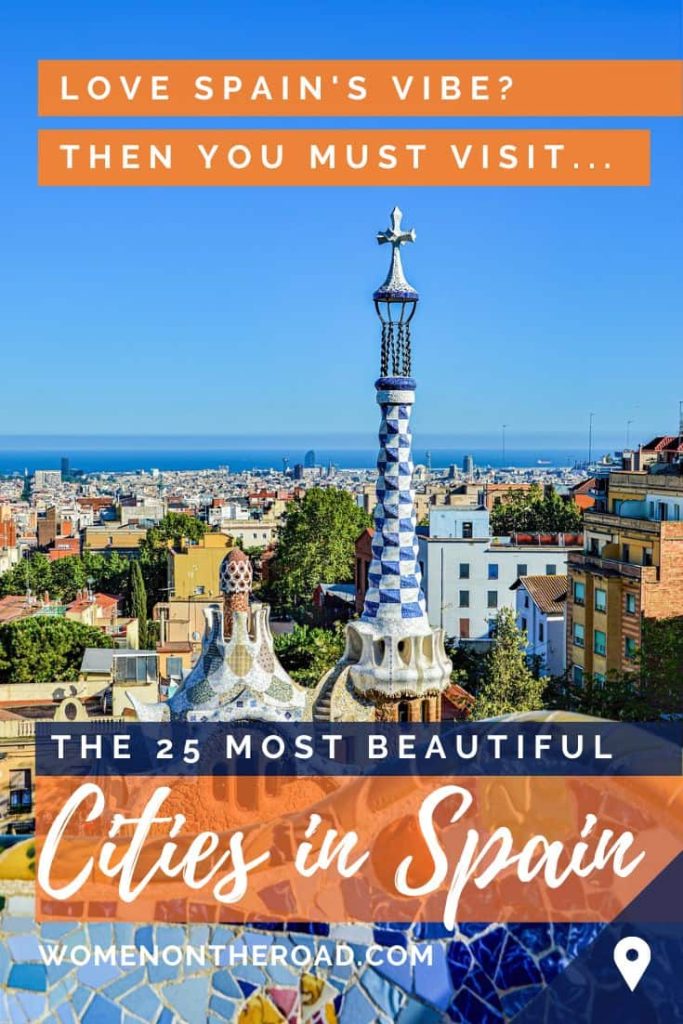
The First-Timer’s El Salvador Travel Guide for Solo Women 18 Feb 2023 9:01 AM (2 years ago)
El Salvador travel is still a pretty well-kept secret, but it may not be for much longer – so going soon is a good idea, and this El Salvador Travel Guide will help you plan that first trip.
This vibrant Central American nation, the smallest in Central America, is filled with lush rainforests, delicious food, and rich cultural traditions. With its welcoming people and exciting opportunities for adventure, it’s no wonder that more women are choosing to travel here every year.
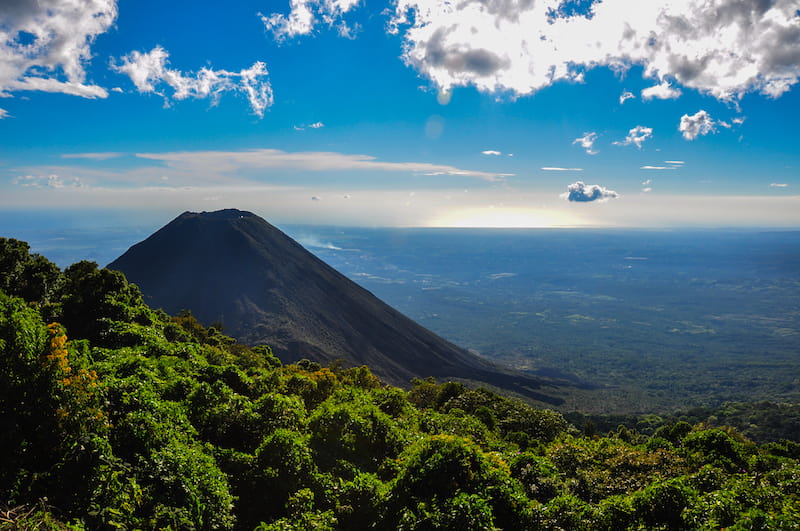
Before you travel to El Salvador, you’ll need to know the must-see spots, like the Santa Ana Volcano, and the best time to see the beautiful Ruta de las Flores (Route of Flowers) during its peak. You’ll need to have tips on staying safe while traveling solo.
Whether you’re seeking an adventurous getaway or a relaxing escape from everyday life, El Salvador could be an incredible and unexpected destination for your next trip.
El Salvador travel guide: Why visit El Salvador
If you are looking to explore a unique corner of Central America, then traveling to El Salvador should be high on your list.
With its small size and relatively low tourism rates compared to other countries in the region, it’s still a relatively off-the-beaten-path destination, making it ideal for those seeking a more intimate travel experience.
This El Salvador travel guide will alert you to its more than 100 volcanoes (20 of which are still active), stunning waterfalls, colorful pueblos, and beautiful lakes.
Is El Salvador safe for solo female travelers?
The country has a reputation for being dangerous. But just how dangerous is El Salvador?
El Salvador is a safe destination for solo female travelers, but it’s important to exercise caution and familiarize yourself with the current political climate (which is fast-changing) prior to arriving.
El Salvador’s recent history has been riddled with violence, with a devastating civil war in the 1980s and active gang warfare for decades. Despite this, El Salvador has managed to experience a significant turnaround in its security situation over the past few years.
Crime and homicide rates have plummeted since 2017, mainly because the president has arrested and jailed more than 100,000 gang members. Although gangs still control certain areas, tourists are rarely targeted.
Some residents say that a couple of years ago, they couldn’t leave their homes without paying off the local gang for protection, whereas now, they enjoy walking around in peace both day and night.
There are many ways you can reduce safety risks when traveling in El Salvador. Use the same precautions you would use in any other unfamiliar place:
- Travel during the day when possible, and avoid walking alone at night
- Ask your accommodation about any local crimes or scams you should be aware of.
- Don’t flash your wealth, and leave your designer clothes and expensive jewelry at home.
- Don’t carry all your money and credit/debit on you. Use an anti-theft purse or money belt.
- Always be aware of your surroundings and your belongings – most crimes are crimes of opportunity, so don’t create that opportunity.
Planning your visit: When to visit El Salvador and how long to stay
November through April is the dry season in El Salvador and a great time to visit El Salvador. November is especially good because it’s not too rainy, but the landscapes are still green from the recent rainy season, and the flowers are blooming.
Peak times such as New Year, Holy Week, and the first week of August are more crowded and expensive than other months.
If you want to experience the Ruta de las Flores in full bloom, visiting El Salvador between November and February is ideal.
You should plan to spend at least one week in El Salvador, but ideally two or more so that you don’t have to rush. El Salvador may be a small country, but it has plenty to keep you busy for two weeks or more.
Getting around El Salvador
As is the case in much of Central America, getting around El Salvador is an adventure.
You can visit most destinations on your own, because buses in El Salvador go just about anywhere – they are the main form of transportation in the country, and are cheap and frequent.
“Chicken buses” (so named because it’s not unheard of for live chickens to be transported on them) are the cheapest and most common form of transportation; they make local stops and can be very time-consuming. And they’re a lot of fun.
However, they do tend to be older and not always in pristine shape, and accidents are not uncommon. They can also be crowded, but in this part of the world, that may well be part of immersing yourself in local culture.
For longer routes, there are nicer coach buses available, for just a couple of bucks. Some of these buses have air conditioning and are direct, making fewer stops along the route.
Renting a car in El Salvador is also an option, especially if you can find a few others to share the cost. If you’d like the freedom of driving but don’t want to do the driving yourself, hiring a driver is also an option that’s still affordable if you negotiate well. Uber is also readily available in bigger cities and is very cheap. Ask your hotel for a recommendation.
Also, always assume it’s going to take longer to get somewhere than Google Maps tells you. Landslides are common and cause traffic delays frequently, and buses make a lot of stops.
If you’d rather have something a little more organized or if your time is limited, one of these full- or half-day tours will show you the best El Salvador sights:
Best things to do and places to visit in El Salvador
- Explore the historic colonial city of San Salvador home to many unique churches, monuments, and museums.
- Take a road trip through the picturesque Ruta de Las Flores, a stunning mountain pass filled with vibrant flowers and colorful towns.
- While you’re on the Ruta de las Flores, check out the weekend food festival in Juayua and take a tour of a coffee plantation.
- Visit one of the many stunning waterfalls surrounded by lush forests, one even with a hot waterfall to swim in.
- Watch the surfers in El Tunco, one of the best surf beaches in Central America.
- Climb the Santa Ana volcano, an active volcano with an impressive view of the surrounding area.
- Take a boat tour of Lake Coatepeque, near Santa Ana and known for its secluded beauty.
- Explore Joya de Cerén Archaeological Site, a UNESCO World Heritage site that offers insight into ancient Mayan civilization.
- Visit Ilobasco Pottery Village and witness artisanal potters at work as they craft traditional ceramics using age-old techniques.
- Taste local delicacies at the local markets or fill up with mouthwatering street food.
- Adventure around Lago de Ilopango, exploring hiking trails or kayaking across this gorgeous lake surrounded by volcanoes.
- Explore the colonial town of Suchitoto and the nearby Lago Suchitlán.

What to eat in El Salvador
You’ll eat well in El Salvador, especially if you’re a little adventurous and sample all the local foods. Like the rest of the region, Salvadoran cuisine mostly uses simple ingredients like beans, plantains, corn, and cheese – and the meals are filling.
At the local markets in El Salvador, you can find an array of tropical fruits that are unique to the region, like sapotes, sweet and smooth tropical fruit with a creamy texture. And the nisperos, a tart and juicy fruit that tastes like a cross between apple and mango.
Street food is common in El Salvador so you can find everything from tortas (sandwiches) to Elote Loco (grilled Mexican-style street corn).
The best traditional street food is bound to be pupusas, thick corn tortillas filled with cheese or beans, pork, or veggies. They are delicious, can be found on any street corner, and are very cheap.
For a heartier meal, carne asada is marinated beef or pork that is grilled.

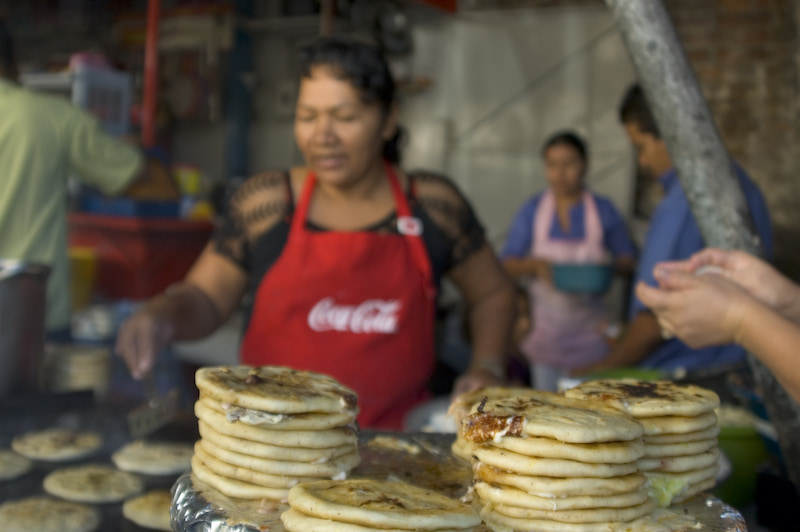

El Salvador travel guide: Places to visit and where to stay
Santa Ana is the perfect base from which to explore the rest of the country, with plenty of day trips nearby, including the Ruta de las Flores and Lake Coatepeque. You won’t have to change accommodations every other day, a real plus.
An alternative is to spend a night or two in one of the villages along the Ruta de las Flores, to make it easier to explore the route during the day. Juayua and Ataco are the most popular towns and provide a nice base to explore the area.
San Salvador is fine for a night or two, and there are a few museums to visit, but your time will probably be better spent elsewhere.
For those who prefer beaches, Playa San Diego is one of the nicest beaches in El Salvador, and is good for swimming (as opposed to surfing, like many of the beaches).
To escape city life, Ilobasco Pottery Village or Lago Suchitlán offer stunning views amidst lush nature reserves. You’ll also find plenty of animals in El Salvador – more than 800 species can be found here.
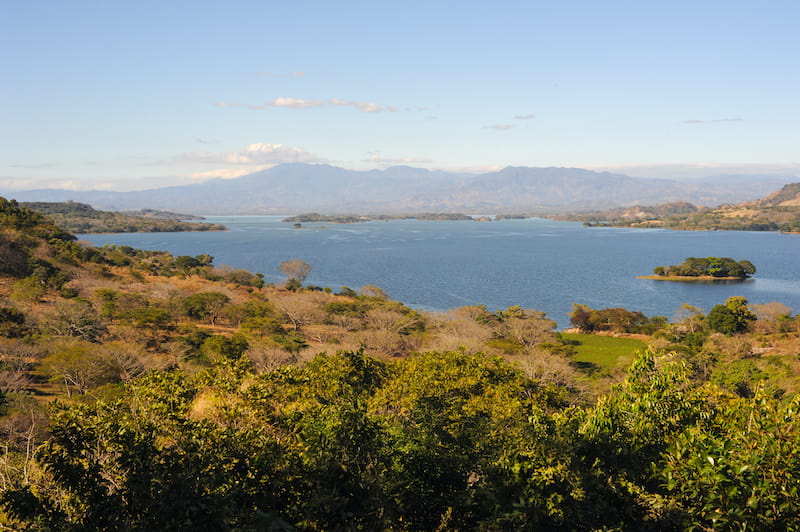
Luxury Hotels in El Salvador
- Equinoccio Hotel (Lake Coatepeque) – a 4-star hotel by Salvadoran standards, this hotel is right on the lake, and also has a pool.
- Hyatt Centric San Salvador (San Salvador) – a brand-new, comfortable hotel that opened in 2022 with a great open-air swimming pool and gym.
- Boca Olas Resort (El Tunco) – Nice swimming pools, breakfast with a view, and steps to the beach.
Mid-level and Boutique Hotels in El Salvador
- Remfort Hotel (Santa Ana) – Guests rave about the prime location of this hotel, as well as the great breakfast and pool.
- Hotel Juayua (Juayua) – Boutique hotel with an incredible view of mountains and a volcano.
- Las Casitas Hostal Ataco (Ataco) – Convenient location in town, comfortable rooms, and very helpful staff.
- Casa Degraciela Hotel Boutique (Ataco) – Beautiful boutique hotel with a very attentive staff.
- Papaya Lodge (La Libertad) – Basic hotel in a great location, with air-conditioning, and a pool.
Budget or Cheap Hotels in El Salvador
- Hostal Casa Verde (Santa Ana) – This is where I stayed during my time in Santa Ana. It has a pool, a good breakfast, and a caring owner who gives great travel tips.
- Hotel Oasis (San Salvador) – lovely garden and patio, and decent breakfast that changes daily.
- Hostal Dona Mercedes (Juayua) – Great base for the Ruta de las Flores with hot showers and helpful staff.
- Pelicano Surf Camp (La Libertad) – A bare-bones hostel where you stay in a hut right on the beach.
El Salvador travel tips
- El Salvador’s currency is the US Dollar, and there are plenty of ATMs.
- Credit cards are not commonly accepted outside of the big cities (and even there), so always have cash on hand.
- Be aware of any potential crimes or scams targeting tourists – your accommodation will know if there are any to be aware of in the area.
- Local people are welcoming, but most don’t speak English. Learn some basic Spanish phrases and download Spanish on your Google Translate app, so you can translate even when you’re offline. Or get a decent phrasebook.
- Invest in travel insurance for added peace of mind.
- Tipping 10% in sit-down restaurants is expected, but always check your bill first because “servicio” is often already included.
- Don’t drink tap water. Most hotels will have filtered water available, or you can buy bottled.
- San Salvador is safe to visit, and tourists are rarely targets of gang violence, but some neighborhoods are best avoided. Check with your hotel, as they’ll have the most current information.
- Stay alert when out walking – don’t walk alone late at night, avoid deserted areas, and stick to busy streets with other people around. Use Uber in the cities.
Wrap-up: Is El Salvador worth visiting?
Absolutely! El Salvador is an amazing country filled with breathtaking natural wonders, rich culture, and vibrant urban areas.
From exploring ancient Mayan ruins to lounging on a beach all day, El Salvador can be your resort, your cultural experience, or your adventure.
And please – don’t forget your travel insurance before you go! Two outstanding insurers are for travelers are Visitors’ Coverage and SafetyWing – whoever you choose, make sure you get insurance for any trip abroad.

Guest contribution by Cat Roberts: Cat is a very hungry solo female traveler in her 30s, who left a six-figure job in NYC to travel (and taste!) the world. She is determined to prove there are ways to backpack the world on a budget without fully sacrificing the “grown-up” lifestyle you love. You’ll find her at Cat is Out of the Office.
